Each week InspiralLondon’s gift – one ‘a walk-a-week in lockdown’ – reliving in words and pictures the experience or individual memory trail of walking the city & exploring the Metropole in lockdown.
La Ricotta: Reality from the margins – a Walking Letter for Sentieri Metropolitani, Milano
Week 4:
“It will certainly seem odd that the essence of reality can be grasped by ‘mere thinking’. But those who come to truly experience the vitality of thought, gain insight into the inner richness and the experiences that constitute this world of thought, thoughts which at the same time are both resting and moving. It is impossible to compare this richness to the realm of feelings or of the will, let alone without regarding either of these as higher than thought. ” (from Gesammelte Aufsatze 1904-1923/ Collected Essays – in ref: to The Philopsophy of Freedom, Rudolf Steiner 1894)
A terrible nostalgia:
In this walking out to the source of the Ravensbourne River at Caesar’s Well – a musing from the margins – there is a pursuit of a kind of thinking/doing that revivifies social and political life through artistic impulse. Impulses unleashed in hidden creative forces. Forces so evident in every sinew and seam of Pier Paolo Pasolini’s work. That personification of post-war Italy, how as a young University student I marvelled at the world recreated in his films. Somehow I was privileged, lucky enough to watch nearly every one of Pasolini’s films – features, shorts and documentaries – in a marathon Edinburgh Film Festival Pier Paolo Pasolini season: A Cinema of Poetry – a cultural initiative for the recovery, restoration, conservation and multimedia dissemination of the complete cinema works of Pier Paolo Pasolini (edited by Laura Betti and Lodovico Gambara Thovazzi). I remember seeing Terence Stamp speak with mercurial eyes glinting beneath his grey hair, and the vitality of Laura Betti sitting before the cinema screen, recounting their working with the director, as if it was just yesterday. It was extraordinary to have such an oeuvre exposed against the grey volcanic granite of this Northern city and be transported each day for what seemed like weeks to another Italy, immersed in the rough glamour and intensity of this poetic eye.
‘…my cinematic taste does not derive from a cinematographic origin but from a figurative one. What I have in my head like a vision, like a visual field, are the frescoes by Masaccio and Giotto – the painters that I like best, together with some of the mannerists (for instance, Pontorno). And I am unable to visualize images, landscapes or figure compositions in any form other than through my initial passion for fourteenth century painting, which has man at the centre of every perspective.” (Pier Paolo Pasolini, 1989)
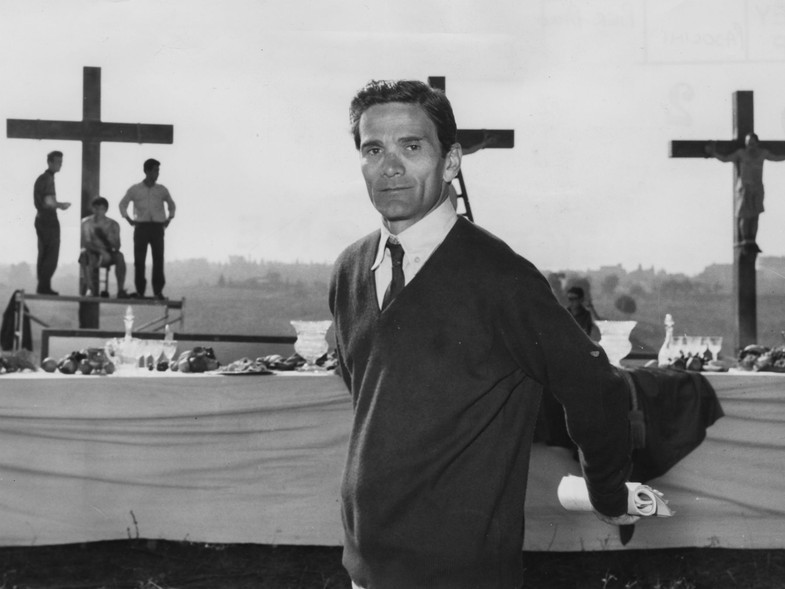
The only film I failed to see was Salo: or the 120 Days of Sodom – at the time arguably Pasolini’s most famous and notorious creations – even with its dark reputation and sordid beauty it failed to ignite my interest (perhaps I decided to enjoy the weather on long late Scottish evening during the screening or perhaps it was the one film sold out) ; Salo a film whose origin lies in a reading of the confessions of Gilles de Rais1, with its echoes of Artaud’s theatre of cruelty. For it was that other poetic reality that broke through, the earlier image painting and that forensic fury he explores examining the human face with the crafted use of particular camera lens. The human exposed in all its restless movement and creativity.
The film that I most remember as somehow unusual was the short satire La Ricotta, and the absurdity of it all. Orson Welles as himself, playing a cipher of Pasolini, surrounded by the orderly chaos of an open-air film set, the pampered dog, and a procession of glamourous VIPs walking onto set just before the film’s melancholic climax. There on the edge of a rapidly expanding Rome, in a spurt of post-war miracle growth, with all its insatiable appetite for building, concrete and roadways always in the background – there, on the margins of society, a threshold between boundaries, the film appears: the new world with all its flashy opulence and underneath it something older, hidden in caves and represented by the fat ricotta cheeses Stracchi dreams of – a crucifying of life – and the reality concealed therein. Something lost, an un/limited knowledge:
“For me there is no sense in talking about the limits of knowledge… ‘knowing’ as the rediscovery of the contents of consciousness, which the soul had previously experienced and perceived in the world. When a person talked about the limits of knowledge, my understanding was that they were admitting to being unable to experience the reality spiritually in themselves, and therefore were also not able to rediscover [reality] in the perceived world.” (Steiner: The Story of My Life)
I sit, alone, on an emptied train, carriage after carriage reflected in the passing window panes, as we edge out towards Knockholt. Where am I, as if inside a 21 Century Western, a movie with all its inevitable clichés; travelling through deserted towns, plagued by gunfighters or consorting with wretched Mexican peasants, some sort of freedom fighting. Such is the nature of the times, just a little daydreaming can conjure such ridiculous, pleasurable reflections. But this is no Spaghetti Western, though some Morricone composition wouldn’t be a bad soundtrack. A public address system, on the platforms passing, plays a recorded loop – something about you should not be travelling, non-essential travel is not permitted, stay at home and protect the NationalHealthService. But it’s a Sunday and frankly what is not essential on a day of rest. However, differently we might see our national responses to the Coronavirus pandemic, its impact and each government’s mishandling of the crisis, or view how luck turns, it remains mostly a question of fear – that buried existential fear of death. Of being gripped by panicademic.
And what if we do see this moment in time differently – read it as Giorgi Agamben * paints it or as we are being told to think it, by governments and propaganda? No, these minor spats, misunderstandings – and disagreements – are nothing beside the simple tools we share, in the compunction for on the ground mapping: walking, wandering, mapping, conversing, curiosity, observing – together. They are tools against the bare life, against being frightened and cajoled into believing there is only one life – some exercise, some daily bread – stripped back life in itself, but nothing here to say about living, about vitality, about what makes life precious, worth living and not just as a form of surviving, in consuming up the days. Reduced to survival the human becomes less and less human, seemingly more animal but because we are not like the animal in humility we feel obliged to vindicate our every move. And in truth those who are really living – even if they have been gripped by anxiety and panic, depressed and manic with rage, or even grieving – nevertheless they are living each with their own vitality.
Dream Pathway – Walking InspiralLondon Knockholt to Downe on Sunday 19 April 2020
There has been an enormous amount of peace in this enforced lockdown. Being stilled and becalmed and stripping back our senses, our feelings and our volition we are left more at home with our thinking; an internal world whose vitality is given life by our reconnecting and rediscovery of something lost, or through imagination the hazy beginnings of the yet to be thought and invented.
* Agamben stirred up a hornet nest of criticism for his initial analysis of the ‘pandemic’.
…because nature is not cut and dried to hand…

I am out on the edge of London, a different edge – Pratt’s Bottom, more Kent County than City. But I have forgotten everything that harassed me – the signals and directives of the Metropole – erased the anxiety and enter a borderland territory between the suburban edge of the city and a fringe of indeterminate nature. A sign on some fencing by the steep path down to the Village Green reads “WARNING these animals are microchipped & can be traced”. Two dwarf goats approach the fence to greet me as I stop to look at the vegetation, already a covering of budding hedgegrowth.
‘There is a frontier line to civilisation in this country yet, and not far outside its great centres we come quickly even now on the borderland of nature. Modern progress, except where it has exterminated them, has scarcely touched the habits of bird or animal; so almost up to the very houses of the metropolis the nightingale yearly returns to her former haunts. If we go a few hours journey only, and then step just beyond the highway – and glance into the hedgerow, the copse, or stream, there are natures’ children as unrestrained in their wild, free life as they were in the veritable backwoods of primitive England…
But a difficulty confronts the explorer who would carry away a note of what he has seen, because nature is not cut and dried to hand, nor easily classified, each subject shading gradually into another. In studying the ways, for instance, of so common a bird as the starling it cannot be separated from the farmhouse in the thatch that it often breeds, the rooks with whom it associated, or the friendly sheep upon whose backs it rides.’ (Jefferies, Preface: 21)
At the bottom of the path you encounter the back of the Bull’s Head Pub. We were here in early December 2017 for an InspiralLondon Christmas celebration – hospitable for a ‘local hostelry’ but not to be recommended for the food. On the Village Green the Christmas Tree we pranced around in the dark, shorn of its lights, now stands with a sorry lean. In the centre of this rough triangle of mown grass, behind another green wall of trees and cut tangle of hedge-growth, hides a beautiful example of that utilitarian Victorian architecture – a black tar-painted corrugated chapel with severely pointed gothic windows, now purposed as the village hall. How to fit into such a place – a sort of kit colonial vernacular – designed to be transported to the suburbs of Madras or the hinterlands of Johannesburg marooned on the edgeland of London. From the carpark, there is a choice of paths, tracks and driveways ambiguously signposted as footpaths. I take the most track-like way with its worn flinty chalk surface erupting with a light green of undergrowth. This is a magical trackway – the sun now drawing to its steep equinoxal descent catches the budding leaves, and softened light draws you on along the tunnel. Then on the banks and in line with my eyes a shimmering violet blue –indescribable – a carpet of bluebells between the emerging leaf canopy and the plant floor of the woods, taking maximum advantage of this early warm sunlight the delicate belled flowers steaming with an electric light. I turn a corner and hear children’s voices.
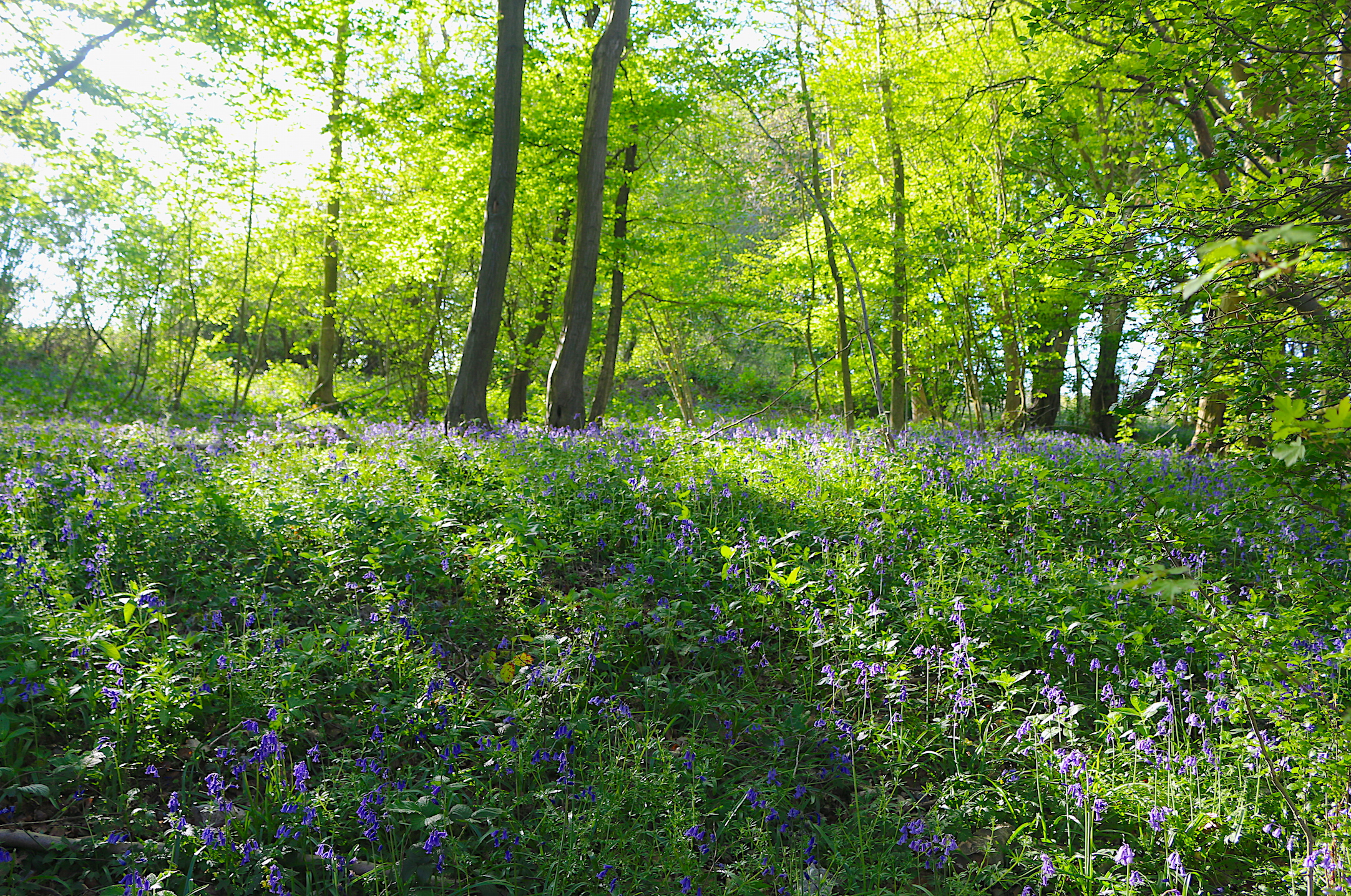
Walking the path – come across Italian family admiring the bluebell woods – walking beyond the darkness.
Coming down the narrowing track is an Italian family out with their two children. The glinting sunlight, the fairylike woods makes this a scene somewhat oblivious of the raging Covid19 crisis. As we pass on either side of the pathway they ask me if bluebells smell – its seems this is the first time they have experienced such a sight in England. I have been in such a reverie that I just say that: “I don’t think so”, as I have never experienced a scented bluebell wood but reading up on the subject later I find that apparently the native woodland Bluebell has a light sweet scent. Its olfactive profile is reminiscent of the Hyacinth, but a green-floral, intoxicating when concentrated. Individually it is not a very strong fragrance but it becomes more noticeable when walking through a woodland covered in Bluebells.
“Our gardening forefathers were aware of the difficult nature of native bluebells and introduced the more hardy Spanish Bluebell to their gardens around 300 years ago. However, Spanish bluebells did not remain in gardens and over the years have begun to hybridise with native flowers, producing tougher plants with dominant genes. The main visible difference between the varieties is that native bluebells are slightly smaller, have narrow leaves, drooping heads, a violet bell-shaped flower and a delicate but distinctive fragrance. Spanish bluebells are wider-leaved, stand erect and have no scent. Their flowers have less of a bell and are a more ‘hyacinth’ blue.” (National Trust website)
These are the type of introduced ground vigorous hyacinth introduced from Europe – called Spanish Bluebells variety that have muscled their way out of gardens and parks in to the ‘wild’2. The native ‘english’ bluebell has become a symbol of and harbinger of spring becoming summer. It has many names: English bluebell, wild hyacinth, wood bell, bell bottle, Cuckoo’s Boots, Wood Hyacinth, Lady’s Nightcap and Witches’ Thimbles. I am once more transported to that place – an imaginal world created from scraps of experience, memories, and always that strange overwhelming feeling of having been here before, in ancestral traces – the Bluebell that have always co-existed in the woods as long as they have been here.
‘Even though it is true that we [as materialists] have become estranged from nature, our feelings of belonging to it and being part of nature are just as real… it can only be nature’s forces that are alive in us’… (GA/Philosophy of Freedom – Steiner)
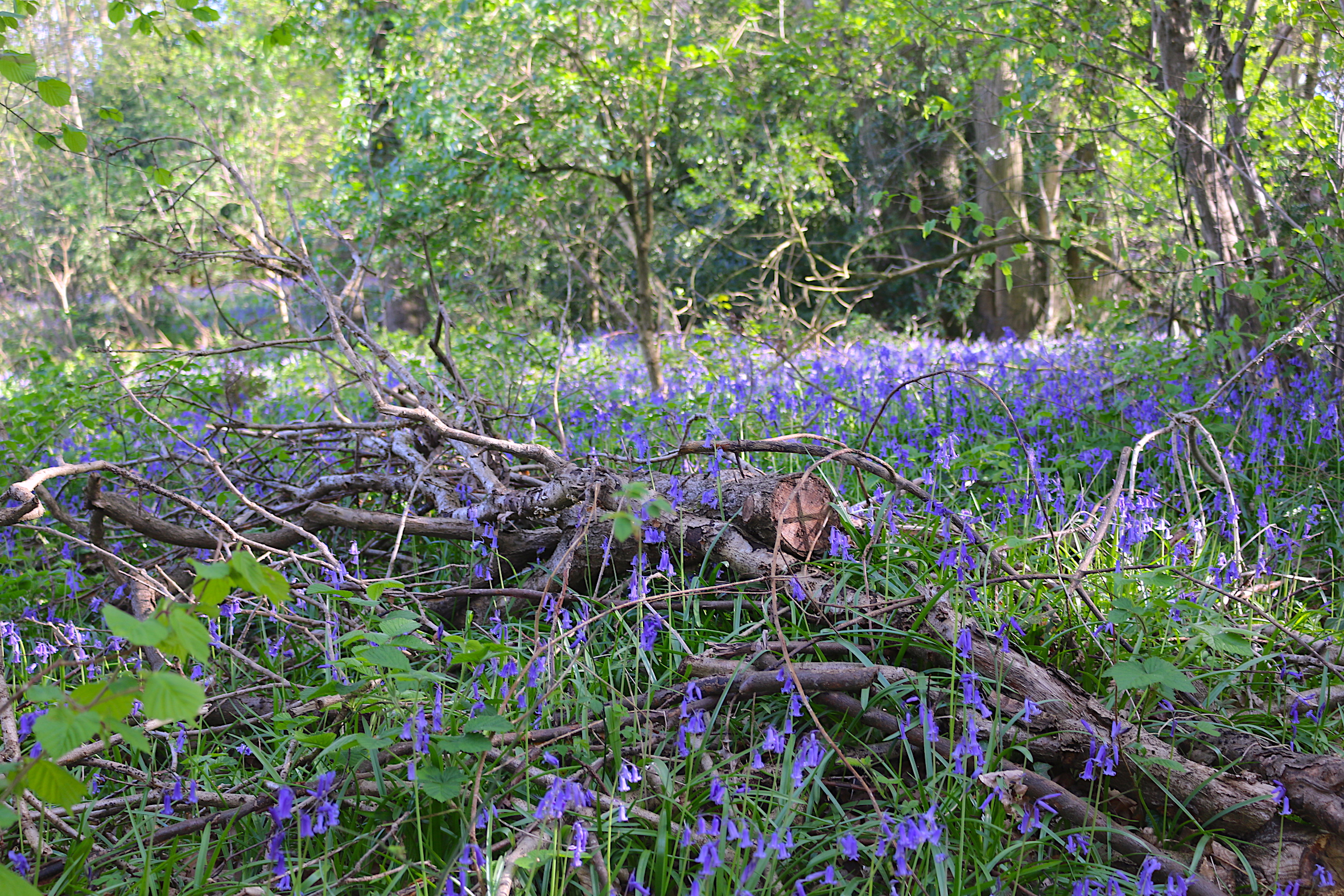
Death keeps me awake:
“Because he/she accepts death as the methodology of creation. Because he/she needs it. Because he/she has a fundamental understanding that without death he/she would not be able to live consciously. If he/she was only concerned with life, he might as well be a piece of seeweed. She/he is however concerned with death, and therefore with spirit, with form. If I hit my head against a hard edge, I wake up. In other words, death keeps me awake.” (Joseph Beuys – Answer from Beuys to Zumdick)
I begin to see, as Steiner envisioned, that thinking is a realm in itself, another real, despite it being unfashionable to claim anything exceptional of the human – only as the rare monster, beastly angel, an anomaly of nature destined to destroy the world – who would think the world in his/her image. But somehow, we are lost on our own, untethered from the world we inhabit and without a true untainted appetite for living:
“Without receptivity and the experiences that such receptivity enable, the active, willing I-in-itself would be dissatisfied. There would be nothing that could satisfy its appetite, nothing that it could experience as a contrast to itself. It is searching for something that is not I. It positions the not-I so that it can bump up against it and experience itself.” (Zumdick: 61)
The poetic continent of that is not I (but that I that we can imagine, empathise, envision into that other). Every day we go out to walk together, every time we have shared that experience as one body made of many, we have opened the sealed doors of our psyches and shared in the wonders of life – that endlessly explorable realm without bounds – impulsive and thought provoking at the same time. Our trajectory in walking together – life to death – are laboratories for living in this other space of walking; striding out in, and into, the world without fear or without end, for the joy of the journey, to roam in the vast uncharted plain of thinking…
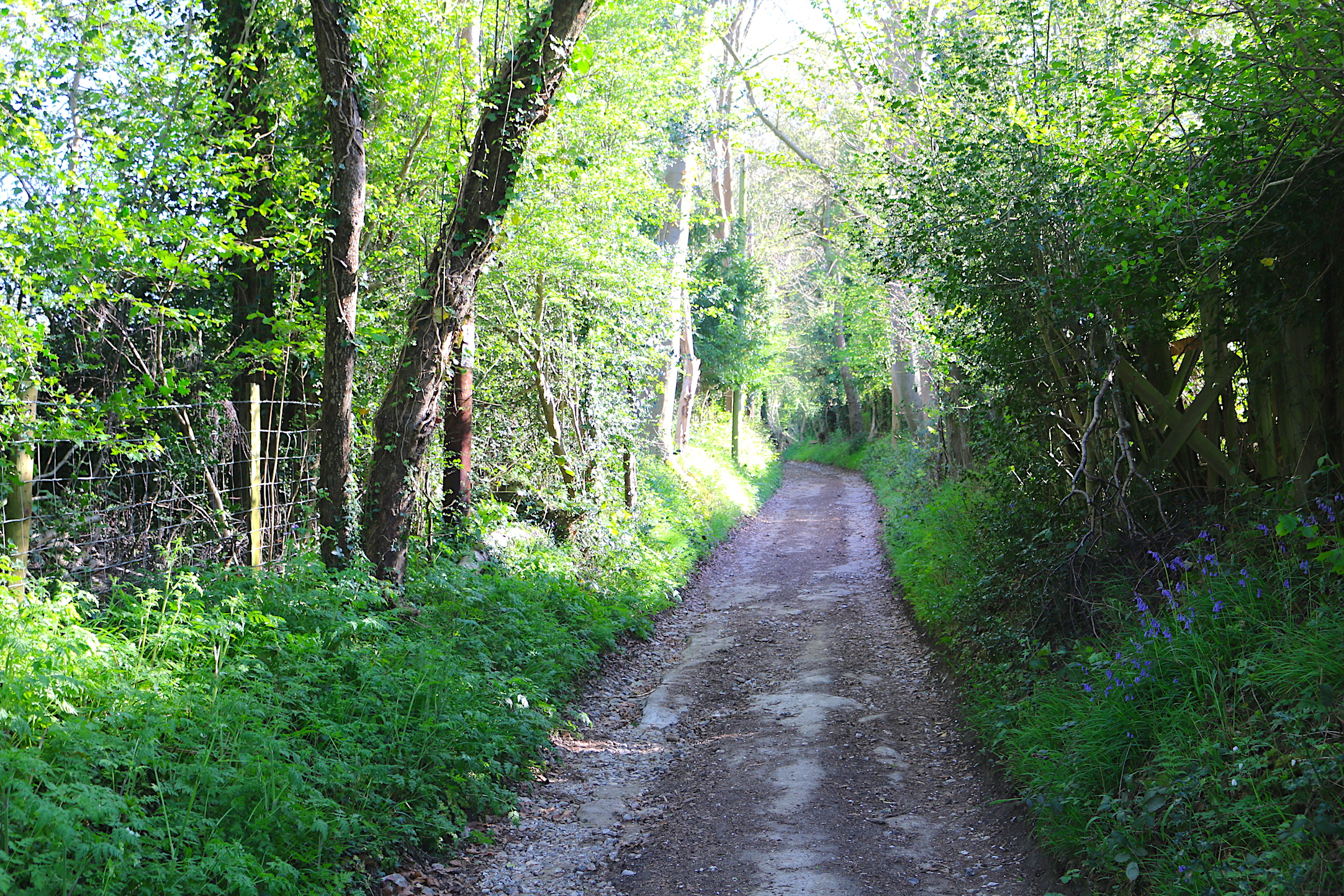
“With thought, we have a principle that exists through and in itself.” (GA/Philosophy of Freedom, Steiner)
It is not just a metaphor or a conceit to say that we can be transported elsewhere, that our state of mind can totally transform our sense of place and time, that when used with inspiration and precision the thinking thought is the rarest of gifts that the human has, and perhaps can offer the world. It is an ascent from the pit, the pit where we think and see and exist in a mutated animalism (you know what I mean: when we lazily blame everything foul, pathetic or degenerate on our animal ancestors – the savagery, aggression and sadism – the gene mechanics playing their harps with their phlanx of ascending neuro- scientists). We are not to be reduced because we have this flame of thinking/being. And whatever we aver or abjure we have free will and we must take responsibility for our invasion and our over-colonisation of the planet.
Here in the rotting wood pile I turn over a small fragile log and out strolls a beautiful beetle. Perhaps the only beetle I really know, somehow reminiscent of the Scorpio – a North European Scorpio – with its mirror black carapace and large articulated antler claws, a memory of watching and playing with these creatures. There it is on the plaque at Grove Park Nature Reserve in the orange light of night as I return form the Ravensbourne River late. The Stag Beetle (scarab/scarabaeus sacer and scorpio) – in the rotting margins of the city, out of a dreamscape – forgotten but full of life the beetle shines out from the dung heap – as reborn nature3.
IMAGE Stag Beetle
We are on the edge of Milan near the end of a long day walking, in the tension of a space still half-farm/half-countryside surrounded by housing – where the forgotten beauty of each day dawning with mist, or the soft dew on the self-seeded feral crops, that now spring up along this improvised pathway. I am looking at our feet trampling the waving sea of grasses and see then how easy it is for us to be reminded of that world beyond the tarmac, the factory and the concrete, “…to find this natural dimension in ourselves in order to rediscover the relationship to nature.” (Steiner – Philosophy of Freedom: 18-26)
I wake into intuition:
Awakened by hidden echoing footsteps in the woods, my musing has begun its transformation, inspired as much by our walking through Milan together, as by my imagination. You remember we were approaching the new apartment block where we would all ascend the lift to take in the stunning views of the whole Metropolitan Milano and we stopped to look at the new street names – christened with 20th C. Italian poets – there for a moment we talked of/Via (Pier Paolo) Pasolini:
May 3 1962:
While sleeping I am woken by the excruciating vision of Accattone’s face; a tracking shot in close-up. I see Franco Citti – white-faced and intense under a shock of reddish hair – walking in the same funereal sun I dreamt of last year. Funereal, because today, once again, while I am half asleep, I see before my eyes an unattainable close-up which circumstances will never allow me to recreate… A stylistic critic might say that the close-up of Franco’s face , which slashed me like a knife at the abrupt moment of my awakening, is a sample of the style of my films… The intuition that this was the basic stylistic feature typical of all my films, came to me while I was shooting the Accattone sequences in the Borgata Gordini – both in the dream sequences and one in which Accattone and Balilla discuss whether it is better to be a thief or a pimp…
In those days, this sun, a mixture of life and death, of happiness and mourning, illuminated Accattone’s face in a special way. It made each shot seem deeply removed from reality, profoundly unreal. And since they were also the first days of the cherry season, the bitter ruddy scarlet colour of cherries, was somehow diffused in the air. It penetrated the bright white ruins (of Borgata), this sun, the thick dry grass and these pinched, starved faces, which yet at the same time appeared full of health. The sequences of Accattone and Balilla, and of Accattone with his friends in the dream scene, have become engraved in my mind, as were the images of the cherries; all so mysteriously saturated with that deep scarlet colour which became invisible in the end, absorbed by the whiteness of the sun.
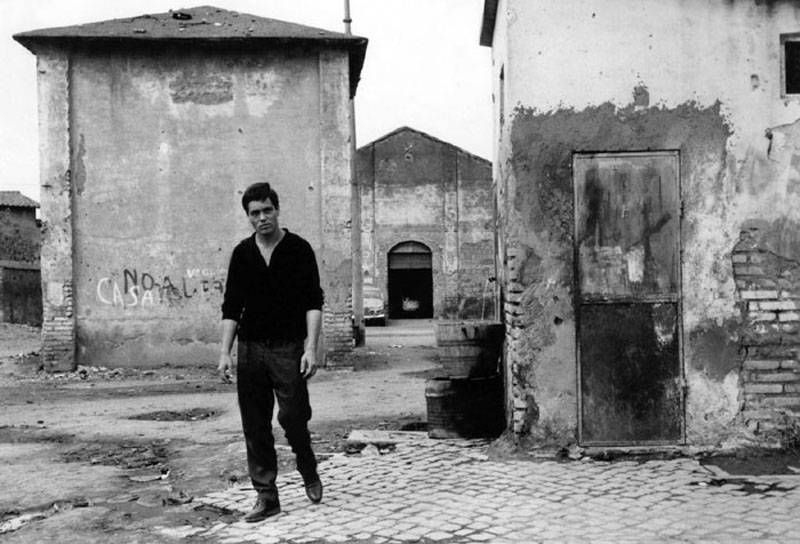
I come across this passage in Zumdick’s book, describing a small-scale work of Joseph Beuys in his work Darmstadt Block, constructed in 1966: Zwei Fraulein mit leuchtendem Brot or 2 girls with shining bread). The work is made from a scroll of names with a block of chocolate painted with brown floor paint stuck onto the long-extended tongue of paper, interrupting the list. I have an intuition that the chocolate relates most to the last long European War and all the shortages, the hunger. The spiritual and psychic value of the small block of chocolate now transformed through a word to Brot/bread is taken by the 2 girls across the Paris underground – in a series of Metro stops and up out into another realm: Telegraphe to Convention to Picpus Glaciere. They are hungry and they are young and idealistic. The chocolate they have been given or have earned, or stolen, is now the most precious object – ‘a shining bread’ – that will transform them and the lives that they touch: Morse and Volta transformed into Pyramidon, Luna, Stratosfera, Vulcanis (Zymdick: 152-155).
Much like the ricotta cheese is transformed by Pasolini, into an object of sacred absurdity, so this laughable merzbau accretion of Beuys’ imagination resonates across this narrative of the margins – the marginalised and the passed-over. A bar of chocolate from an American GI was like gold dust for a child/adult in a Europe traumatised by war. A kind of food that had sacred properties because of its exotic sweetness. And bread, what about bread? The flat bread that Stracchi rips into pieces to absorb the moisture of the ricotta cheese in order to wolf down his promised meal. A sacred meal. In Ancient Greece, the messenger who took the dead soul from a human was the honey bee, that miraculous insect, whose flight and dancing brings not only an abundance of fruit but its own store of vital sweetness.
While studying archaeology I read an article in Scottish Folk Journal on oral culture and transmission; the strange custom of beekeepers, still in parts of the British Isles, to whisper the names of the recently deceased, to their bees, to allow the dead spirit to be laid to rest. Asked why they did this, they had no answer but that it was what they had always done. The bee would carry the name/soul down to the underworld. Somehow this ancient European custom was being replicated in a somewhat ad hoc manner, two to three thousand years later, in an entirely other part of the continent. It was a revelation for me to think of the power and longevity of this oral culture embedded in Europe, and not just an exotic structural web only to be found in some far corner of the world as described by Levi-Straus, Malinowski or Evans-Pritchard.
This feeling-understanding corresponds with that great energy transmission; before the meeting of Europe with the Americas there was no chocolate, no sweet coffee, no tomato. It’s something I always wonder at, Italy without its extraordinary cuisine, shorn of these gifts from Mexico and the Spanish dominions. How different our world, our pleasures, our comforting fuel – no espresso! I think that’s why I always responded to Beuys’ work -however opaque – this obsession with energy, its transmission and transformation, with natural and hidden forces that the human claims to have conquered but is powerless to contain, the triad of life/death/life, and the unintended consequences of these forces meeting.
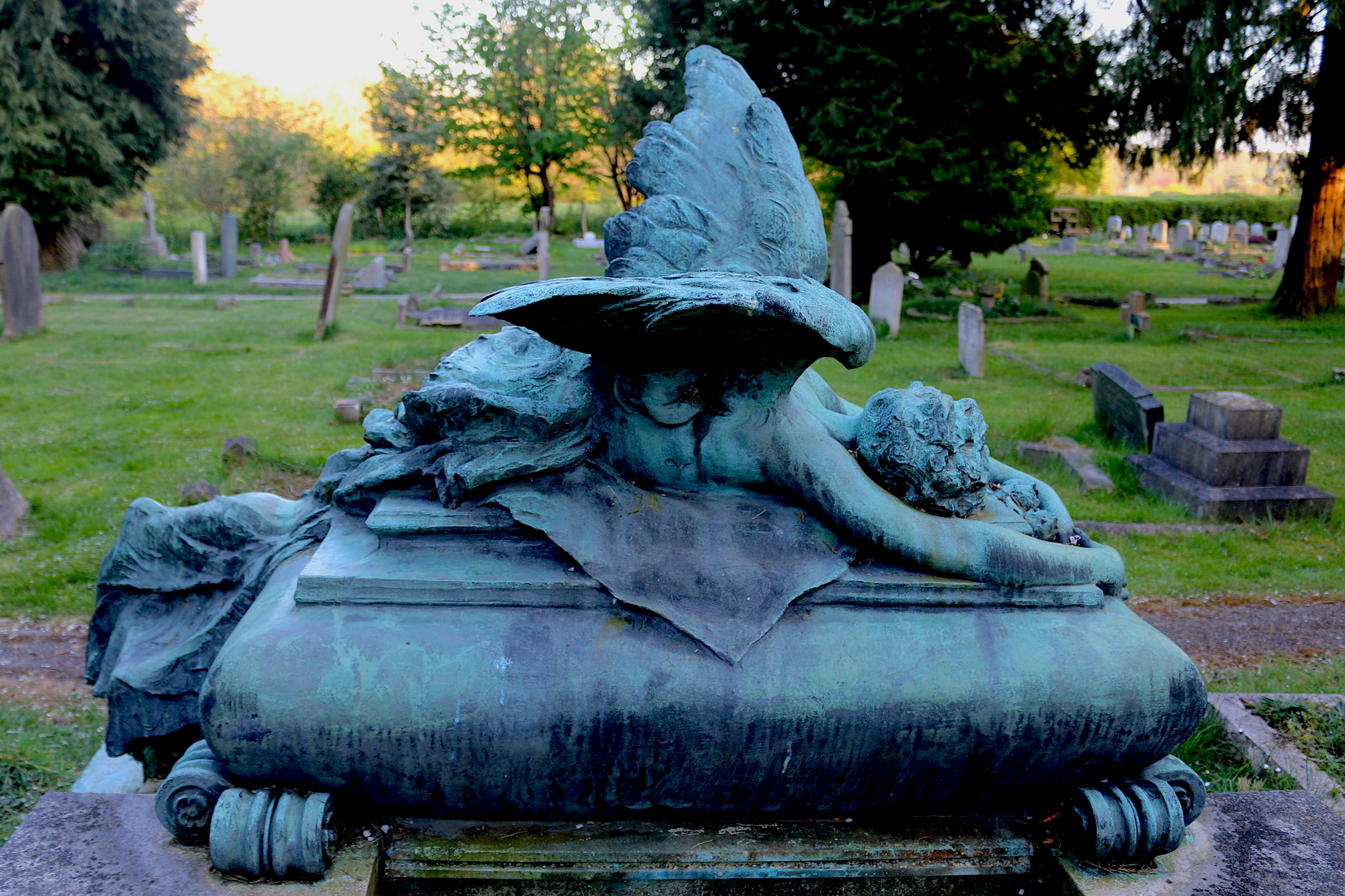
How the Etruscan’s knew this, perhaps far more than the bellicose Romans. Where their language, still being used in divination and religious ritual until the end of the Western Roman Empire, provided a Celtic overlapping and survival with the Mediterranean civilisations. But also in spirit and language, that buried culture was still alive in 1930’s Italy, despite two thousand years of repression and destruction – hidden even under the light of the Renaissance. The European elite, the were obsessed by the Etruscan’s when their tombs were first opened – all that strange un-Roman sensuousness and cupidity – and a cult of the dead. This was just pure ignorance and wish fulfilment of over-fertile imaginations, exemplified by DH Lawrence Sketches from Etruscan Places.
In fact, it appears now with more forensic eyes that the Etruscan’s gifted everything that is most admirable about ‘Roman’ civilisation – the cities with drains and running water, the sophisticated engineering, their forms of religious ritual and divination, their fashion and alphabet; as the filter and conduit of other cultures stretching across the Mediterranean, through the middle east to Persia and India the Etruscan’s were open to otherness, cosmopolitan in their tastes. They adopted particularly many Egyptian (Cannanite or Phoenician) god/desses Astarte, Isis, Osiris/Serapis, Anubis, the form of Horus/Harpocrates. The rituals of Death, and the care of ancestors was obviously of great importance to these North Italians, as it is still now, but then it was weighed against the scales of a living vibrant energetic culture, whose main concerns were ones ‘of living well’- not the cult of the Dead but as a measurement of each persons life and life-worth4.
We maybe asking now, of our own cultures: What is the cost of forced exile from life – house arrest – forms of isolation that are not understood – the injustice of incarceration? To the list of Scarlet fever, the pox, syphilis, polio, TB, and the last great wave of fear, AIDS, we add casually Spanish flu (Spain’s neutrality gave it this head start) an echo perhaps of the Spanish Inquisition – over 300 years of pain and torture. This unique European export – war, war, war – always war, a war against the non-Christian, the suspect-Christian, the too holy Christian, or whatever war was necessary (against insects, against birds, against viruses). And now too the loss of the dead and dying –swallowed up the inoculating machinery of States.
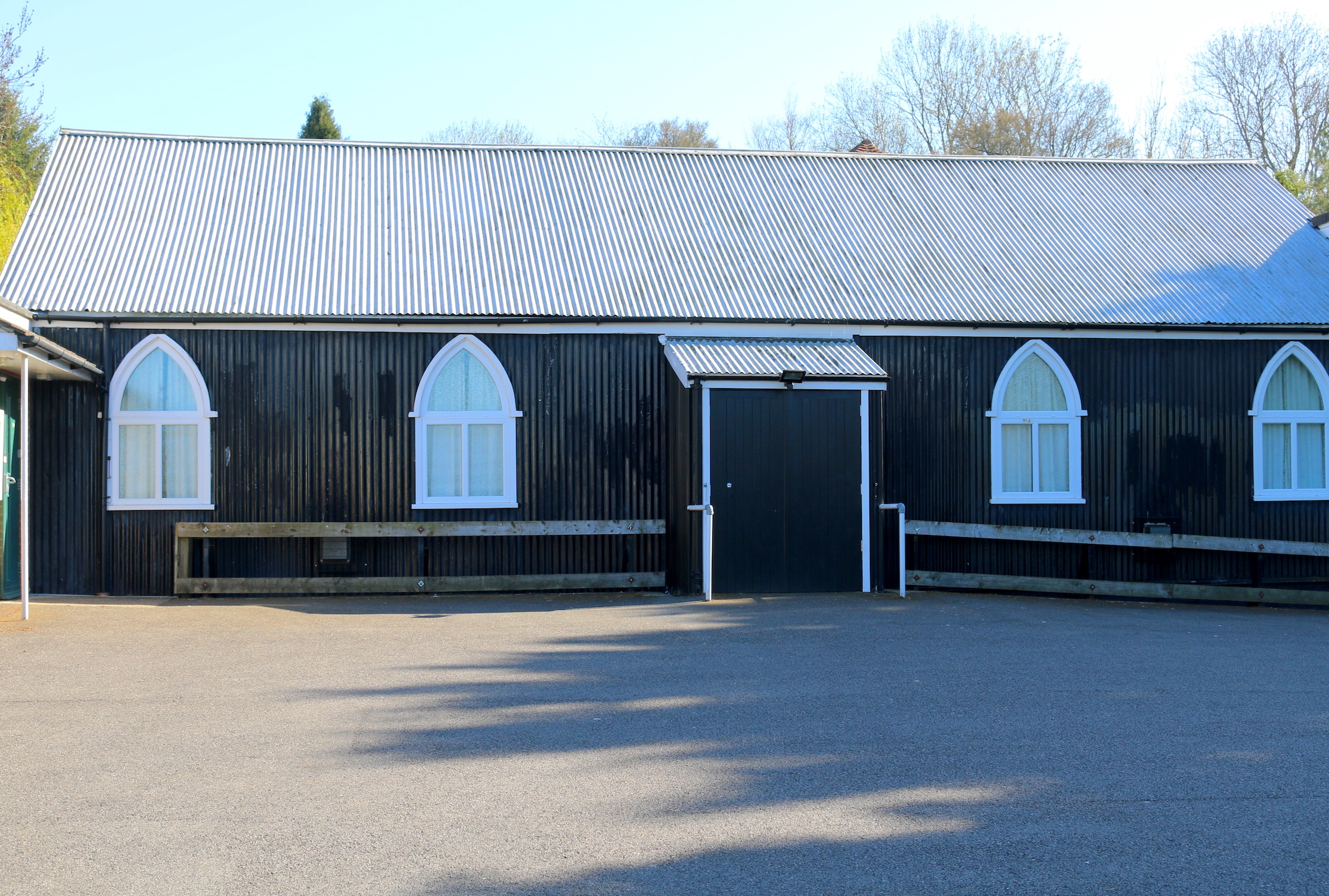
In the grace of thought: ‘The Thought-in-itself’.
“… thought must never be understood as mere subjective activity. Thought is beyond subject and object. It creates those two concepts just as it creates all others… I should never say that my individual subject thinks; since my subject exists in the grace of thought. Hence thought is the element that goes beyond myself and connects me with objects.” (Gesammelte Aufsatze 4 1904-1923/ Collected Essays: 59)
The imaginal (a spiritual science?), with a moral imagination (intuition as a spriritual awareness of the self) that leads towards a practical philosophy – walking imaginatively with a heightened practical philosophy. This kind of practical philosophy (doing-thinking) such as the embodied thinking of walking subjects with that extra-sensing of a collective movement working as one ‘graceful’ doing-thought.
“Multitude, solitude: identical terms, and interchangeable by the active and fertile poet.” (Baudelaire quoted in Rebecca Solnit: 204)
Something like a body of people walking seamlessly and intuitively in step, together and apart, through the complexities of a bustling city: gliding, stopping, observing, sharing. In this there is an education of a particular spirit and independence of thinking, through intuition, imagination and inspiration (invention) – that is attuned to the extra sensory, such as:
‘…certain reflective and meditative practices – such as deep listening, or non judgemental observation – one is able to progressively achieve a distance from oneself. Such distance is necessary to enable us to act out of one’s own inner conviction and without external constraints.” (Zumdick: 59)

The faint whiskers on the paws and forelegs of foxes to allow them to see and feel space in the dark, as the extra sensitive touch transmitted from the tips of our fingers resonates and trembles into our hidden interiors. At dusk, we go out as a collective of footpads – inspirallondon associates – other/walking as urban foxes, with this thought in mind: who are the messengers of the dead tonight, as we step out into an uncertain future?
‘The Speakers for the Dead are also tasked with bringing into heart and mind the new things of earth, not only the symbionts and symanimants and their communities and corridors, but also the emerging kinds of beings and ways of life of an always evolving home world. The Speakers of the Dead seek and release the energies of the past, present, and future Chthulucene, with its myriad tentacles of opportunistic, dangerous, and generative sympoiesis.’ (Haraway: 168)
I am not I
I am this one
Walking beside me whom I do not see;
Whom at times I manage to visit;
And whom at other times I forget;
The one who remains silent while I talk,
The one who forgives, sweet,
When I hate,
The one who takes a walk
When I am indoors,
The one who will remain standing
When I die
Juan Ramon Jimenez (Translation Robert Bly)
Return to Etruscan values? Dissolving into Caesar’s dark Well…
Resistance Songs – Belle Ciao – Version des partisans (versione partigiana)
Beside the ponds that conceal the dark source of Ravensbourne River, in the depths of Caesar’s well spring I stand watching a moorhen nesting, its sharp defense call bitting the air. At the far end of the pond an ambulance is parked up in the evening sun, and an ambulanceman leaning on its door rolls up a cigarette. He is in need of some peace and calm, an escape from the chaos back in London. We are all going to need to think beyond the present disease, beyond our appetites and our obvious fear of death but with a care for everyone, including the dead and dying.
In a place like Cortona you can imagine the sophistication and vitality of Etruscan civilisation – an everyday life that still existed in many significant respects up to and until the Renaissance despite the brutal erasures of Roman Regimes – when the scholars and intellectuals who were digging up the great bronzes and treasures of Etruria, could if they had the sensibility and humility have gone out into the countryside, been able to hear that culture still beating in the customs, language and beliefs of “pre-Christianised population. Instead they made the objects centre-pieces for their grand collections, polishing the fine bronzes and fantasised. But these objects and the rediscovered knowledge they concealed were the touchstone for a renaissance of thinking.
We go back in time to go forwards to skip over the Roman barrier and peer into another European past less of pax romana and citizenship as being part of a closed club of nations and towards a porous melting-pot of polyglot cultures, hybrid and wide open. Now stuck in our homes, enclosed in dwelling-places we feel the sense of that suffocation and need to skip over the other side like a fox gliding effortlessly through fenced enclosures. It is that desire to free of the four walls and breath in the open air. Walking as constellation:
“the body, the imagination, and the wide open world… it is the lives drawn between them, – drawn by the act of walking for cultural purposes – that makes them a constellation … lines drawn between the stars are like paths worn (out) by the imagination of those who have done before.’ (Rebecca Solnit, Wanderlust: 290-1)
If Rebecca Solnit calls forth the body and the wide open world to join in a trilogy with imagination. Let then, the body be intuition, and the wide open be inspiration/invention and the stars of the European flag be another set of nations, made from the marginal, the buried and the yet to be imagined.
Addio a Lugano Italia Settentrionale (Expulsion of anarchists to Switzerland written by Pietro Gori 1894)
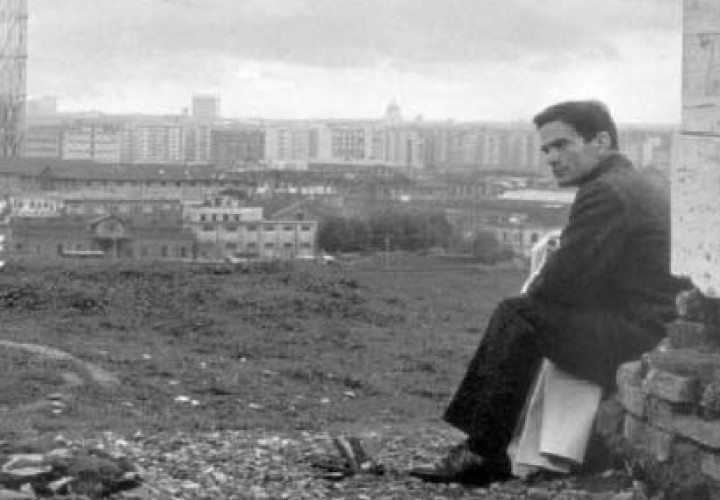
La Ricotta – The margins as underworld once more centre stage.
‘There wasn’t one moment of the day, in the ring of suburbs which made up a grandiose and plebeian metropolis, when a new linguistic ‘invention’ didn’t ring out in the streets or allotments. It was a sign that you were dealing with a living “culture”. All this is faithfully represented in Accattone. Between 1961 and 1975 something essential has changed: we have experienced a genocide.’ (PPP, 1989: 190)
So, claims Pasolini, just weeks before his untimely death. His is the disillusionment of a poet, whose love of life, of some other values, precious to him, no longer necessary, are being erased before his eyes. He is powerless to arrest this movement, but will not be silent, as he is dragged down to the underworld:
‘The Persephone experience occurs to us each in sudden depressions, when we feel ourselves caught in hatefulness, cold, numbed, and drawn downward out of life by a force we cannot see, against which we would flee, distractedly thrashing about for naturalistic explanations and comforts for what is happening so darkly. We feel invaded from below, assaulted, and we think of death.’ (Hillman: 49)
His letter an abjuration of the ‘Trilogy of Life’ cries out with a suicidal disappointment: “even the reality of innocent bodies have been violated, manipulated, enslaved by consumerist power.” (PPP: 175). He cannot entirely justify himself – as a poet that would be death, to betray his words, his former dreams and hopes, but he can, recant: “…One must be able to take stock of the degree to which one has possibly been used by the integrating power. And then if one’s sincerity or necessity has been taken over and manipulated I think one must simply have the courage to abjure them.”
Now it is a life and death race to “express reality through reality” before that reality on the margins is entirely erased and covered over, and our body of memory is buried and recast as a terrible nostalgia (where nostalgia is seen as an affront to progress). To allow the body to re-cant and sing another tune, that was always Pasolini’s way, literally taking his body back to the alleyways and into the side streets.
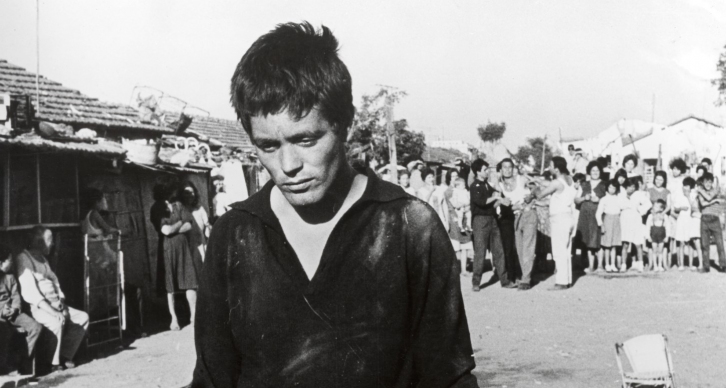
In this last Self Interview on Salo written as a vindication of the unremitting cruelty of this film, he writes with a railing anguish:
‘Our memory is always very poor. Thus we live what is happening today: repression imposed by a tolerant power which, of all forms of repression, is the most atrocious.
… With Salo, I am speaking to everyone in general, to another me, and to all those who, like myself, detest Power for what it does to the human body: the body’s reduction to a thing, the annihilation of man’s personality. And so it is also opposed to the anarchy of power, because there is nothing more anarchic than power. Power does whatever it likes. Driven by its economic needs which elude common logic, it is completely arbitrary. Everyone hates the power to which he/she is subjected – … it manipulates [the human] transforming their consciousness – establishing new, false and alienating values, the values of consumerism, giving rise to what Marx defines as the genocide of living, real, and previous cultures.’ (19745 – PPP, 1989: 181 -184)
Accattone’s last words after crashing his motorcycle as he tries vainly to flee the police are: ‘Aaaaaah…. Now I’m fine!’ He goes to his death open-eyed, absolved. I leave the last word to Pasolini (1922 -1975):
It has been said that I have three heroes: Christ, Marx and Freud. This is reducing everything to formulae. In truth, my only hero is Reality. If I have chosen to be a filmmaker as well as a writer it is because, rather than expressing this reality through those symbols that are words, I have preferred the cinema as a means of expression – to express reality through reality…
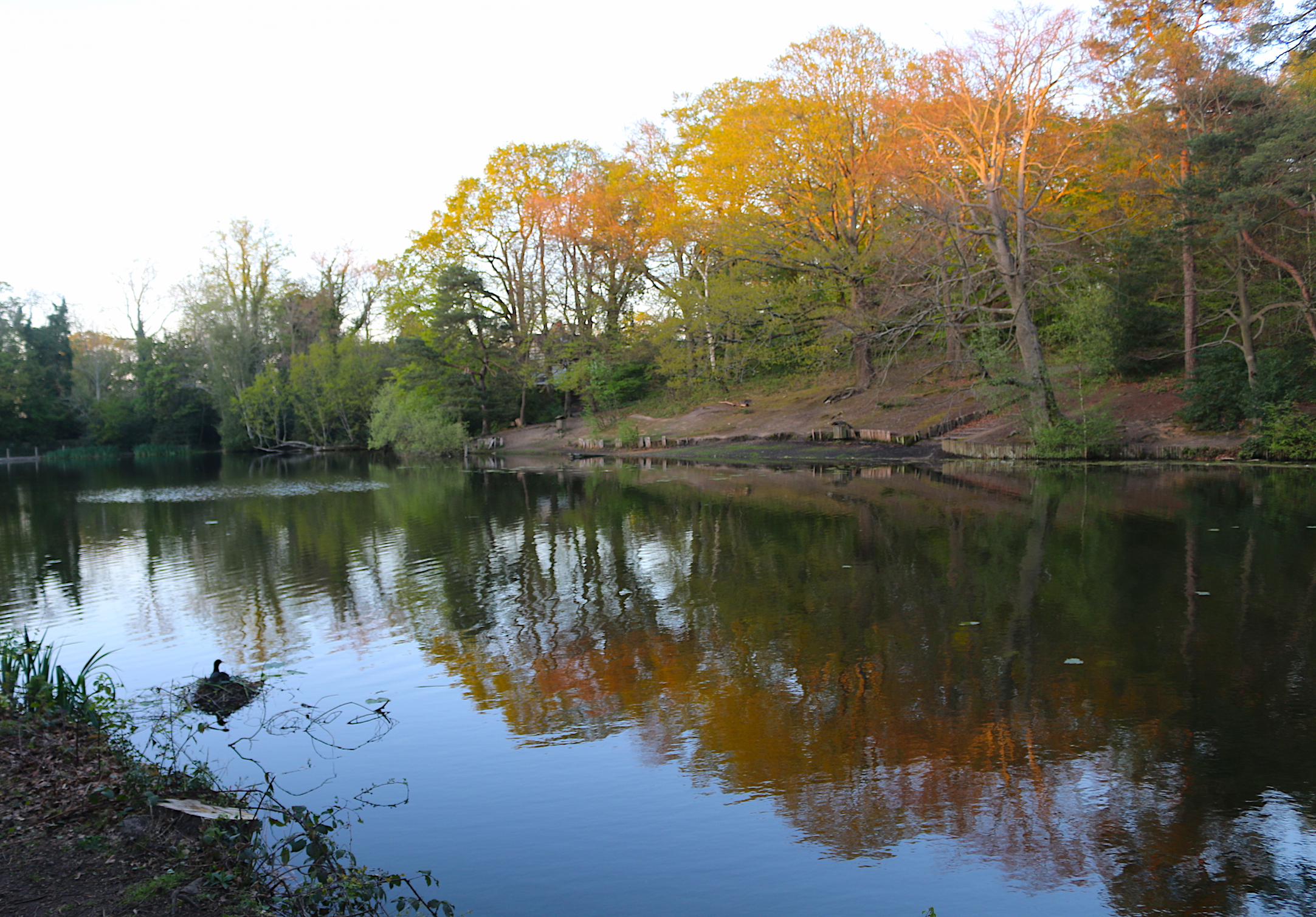
Reality augmented – virgin forests of the imagination.
The great chasm between the augmented real in which we have been asked to live now, often against our will – a virtual reality that freezes and sputters and is finally mute, pitted against the real (with all its sweat and spume and failings) – falls somewhere inbetween, as another reality seen from another perspective.
‘…George Sand, who found that “on the Paris pavement I was like a boat on ice. My delicate shoes cracked open in two days, my pattens sent me spilling, and I always forgot to lift my dress… [then] put on men’s clothes … [that] gave her a freedom of movement she reveled in: “I can’t convey how much my boots delighted me… With toe steel-tipped heels I was solid on the sidewalk at last. I dashed back and forth across Paris and felt I was going around the world.’ (Rebecca Solnit: 203-4)
But no longer the lonely wanderer, but with a poetic sensibility to call to the other, in collective and collaged sounds, cries, sometimes with sobbing pleas, echoing around the world: “In the 19th century, the theme of the city as wilderness would come again and again… The city was called a “virgin forest,’ its explorers were sometimes, in Benjamin’s famous phrase, naturalists “botanizing on the asphalt,’ but its indigenous inhabitants were often “savages.” (Rebecca Solnit: 203)
Solnit relies on de la Bretonne’s Les Nuits de Paris ou le Spectateur Nocturne (1788) to reconstruct her argument and plays on this male fantasy of the virgin forest. It is very beguiling and remains a shibboleth of walking art. But we know the city is not a wilderness – yet. Nor is it a virgin forest filled with savages.
‘In his late-night wandering, Bretonne meets with shop girls, blacksmiths, drunkards, servants, and of course prostitutes, spies on politicians, in debate and aristocrats in adultery, sees crimes, fires, mobs, cross-dressers, a freshly murdered corpse. He writes of Paris in the way many others would later: as a book, a wilderness, and a sort of erogenous zone, or bedroom. …’I would walk on then, wrapped in the darkness of the night whose silence and loneliness were touched with a horror I found pleasing.” (ibid: 202)

Now we re-enter the portal of night, turn off the torches and devices, tracking into the darkness, guided by the moonlight:
‘Our culture is singular for its ignorance of death. The great art and celebrations of many other cultures – ancient Egyptian and Etruscan, the Greek of Eleusis, Tibetan – honour the underworld. We have no ancestor cult, although we are pathetically nostalgic. We keep no relics, though collect antiques. We rarely see dead human beings, though watch a hundred imitations each week on the television. The animals we eat are put away out of sight. We have no myths of the nekyia, yet our popular heroes in films and music are shady underworld characters. Dante’s underworld was our (Western European) culture’s last, and it was imagined before the Renaissance had properly begun. Our ethnic rooys reach back to great underworld configurations; the Celtic Dagda or Cerunos, the Germanic Hel, and the Biblical Sheol.’ (Hillman: 64)
Pasolini railing against the television, against that veneer of images that masks the real – a vision of a Berlusconi before his time. The premonition of the poet is only possible because s/he is the only living human who are allowed to descend to the underworld and return again to life, to speak an unambiguous truth.
“It is only at the point of death that our life, to that point ambiguous, undecipherable, suspended – acquires a meaning.” (Pasolini,1967)
As Hillman argues the psyche and unconscious realm should be seen as a descent into the world of the soul/psyche – into the shadow land of shades skia – shades – and – eidola –images of soul (Hillman: 51). Here it is possible to see the shadows in the dark: “ these quick-moving images were also called shadows in Egypt and in Rome, where funerals were held at night. They were black…” (Hillman: 55 – from J. Toynbee, Death and Burial in the Roman World, 1971: 46)
This paradox of casting shadows in the darkness is no longer just a metaphor. It is the introspection of a poet (at the feverish height of their intuition/inspiration/imagination). This other perspective – the perception of perception – in catching oneself in one’s own shadow, in the repressed death metaphor:

One can sense the summons of the night itself.
From the Imperative (Alphonso Lingis Nightwatch 9-11)
‘As the days comes to an end, the twilight dissolves and the surfaces, absorbing their colours, leaving their reflections suspended in the surface. The luminoius transparency in open space condenses into beams and phosphorescence. Things lose their separateness. The shadows advance over the colours and the contours that they outlined are lost. Darkness infiltrates the landscape, obliterating its paths and filling up its open planes. Overhead the blue of the atmosphere receded and the starlights drift over unmeasurable distances. …When the night itself is there, there is no longer anything to see. The cries, murmurs, and rumbles no longer locate separate beings signalling one another or colliding with one another on observable coordinates. Shouts or distant lights do not mark locations in the night but make the whole of the night vibrant. The odors drift. The ground which we feel and which extends indefinitely about no longer supports things in their places. That we touch adheres to our hands and is no longer the contour of something closed over its own structure and substance. The rain no longer streaks the distance of its fall.
Though there is no longer anything to see, we see and do not see nothingness. We see the darkness. The night is not a black mass that stops our sight on the surface of our eyes; our look goes out into the night which is vast and boundless. The sense of sight is not a substance but an event; it pervades a space freed from barriers and horizons. It extends a duration which moves without breaking up into moments…The darkness which softly wipes away the urgencies and the destinations and hard edges of reality is felt in an enjoyment that conforms to its depths without resistance that gives itself over to the rumble of the city and the murmur of nature, to the silken, mossy, liquid substances that caress our bodies, to the odours and savors adrift in their own space. The visible night gives way to a high noon of sounds, odours and textures.
… There is a wilfulness that is determined to seize hold of the life in which one finds oneself born and harness all its energies into giving oneself form, identity, and significance. Willfulness stakes out paths and directions, takes hold of ends, stabilizes, and maintains a practicable field… Each one of us knows how the night itself summons us.
Insomnia is also a spell that one accepts and obeys, recognizing the summons to aimlessly wander the night, to exist as the pulse of anonymous awareness where the night watches and is for itself. It obeys this summons in the seductive fatalism that recognizes a destiny. Do we not also know moments when night summons us in the high noon of the world? In the day agitated by the orders shouted by and to others and stamped on things, one listens to oneself. One hearkens to ones inner garrulousness assessing prospects and ambitions, and one’s consciousness is a mirror in which one evaluates the images of one’s shape and skills that are cast on others. But when one hearkens to the wakefulness of sensibility in the inner night of one’s organism, one can sense the summons of the night itself.’ (Lingis: 9-11)
What a call to go out into the freedom5 of the night, if one can, if one dares and if one really needs to: to the margins reality rushes, with a poetic force. And there he hangs, Stracchi the poor/good thief, dead from indigestion, hanging but stuffed – what an image. Waiting, desperate, for too long abstemious, we gorge ourselves on false abstinence, not too risk too much, confronting the force of an other reality … to stop up the oncoming night and finally fill it again, with meaning.
“…the artist, the poet, is one who doesn’t commit suicide. He is alive despite everything because art is, above all, a form of vitality, an affirmation of life. Where there’s no vitality. There is no art.” (Pasolini last thoughts: 314)
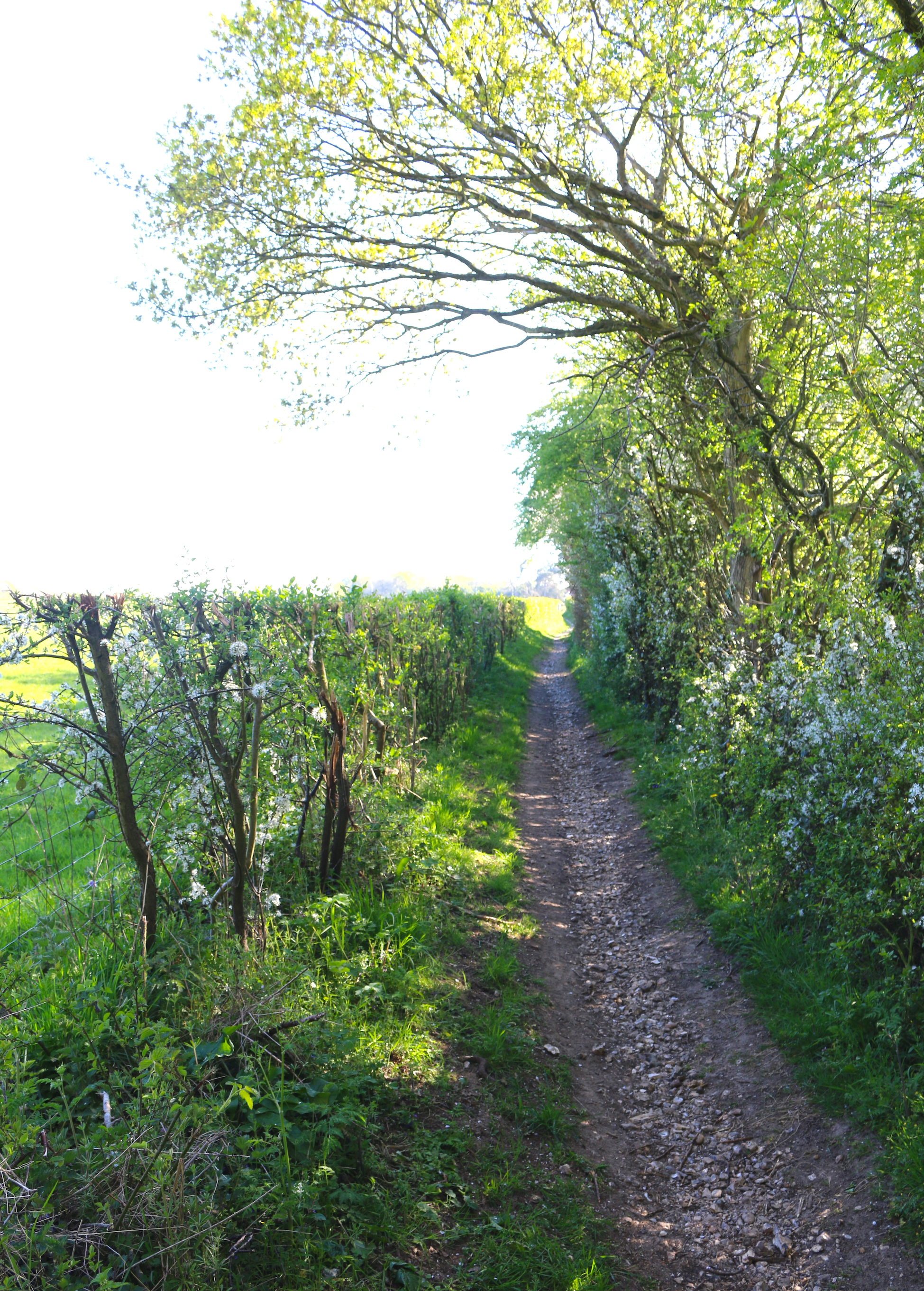
NOTES :
1Gilles testified that “when the said children were dead, he kissed them and those who had the most handsome limbs and heads he held up to admire them, and had their bodies cruelly cut open and took delight at the sight of their inner organs; and very often when the children were dying he sat on their stomachs and took pleasure in seeing them die and laughed” (Benedetti, Jean (1971), Gilles de Rais, New York: Stein and Day: 115)
Several years after Gilles’ death, his daughter Marie had a stone memorial erected at the site of his execution. Over the years, the structure came to be regarded as a holy altar under the protection of Saint Anne. Generations of pregnant women flocked there to pray for an abundance of breast milk. The memorial was destroyed by rioting during the French Revolution. (Wikipedia 04/05/2020)
2“Spanish bluebells, a more cultivated form of bluebell, are normally found in our towns and cities in gardens and parks. Yet this welcome splash of colour in urban areas is putting the future of native bluebells at real risk. A blend of the English and Spanish bluebells has created a virulent hybrid that is difficult to distinguish from our own true bluebell.” (Guardian: Ian Wright 1 Apr 2011)
https://www.theguardian.com/environment/blog/2011/apr/01/green-shoots-bluebells
3 ’this thesis does not rely on ideas of repression (Freud) or of compensation (Jung), but imagines dreams in relation with soul and soul with death. I have come to believe that the entire procedure of dream interpretation aiming at more consequences about living is radically wrong….When we wrong the dream we wrong the soul, and if the soul has an intimate connection with death that tradition has always supposed, then mistaken dream interpretation deceives our dying.’(Hillman: 2)
4 At death a person faced judgment by a tribunal of forty-two divine judges, minor gods entrusted with the weighing of the heart. If they led a life that was judged to correspond with the precepts of the goddess Ma’at, who represented truth and a good life, the person was welcomed into the kingdom of Osiris. If found guilty, the person was thrown to the soul-eating God Ammit and did not share in eternal life.
5‘Our life is constituted by actions of freedom and limitedness. But we cannot fully think through the concept of the human being without yielding the free spirit as the purest expression of human nature. We are only truly human insofar we are free. This is an ideal, many will say. Without a doubt, but it is one that works itself to the surface of our existence as a real element. It is not a devised or dreamt of ideal, but one that is alive and that clearly announces itself even in the most imperfect form of its existence.’ (Gesammelte Aufsatze 4 1904-1923/ Collected Essays: 167)
AfterWor(l)d [to Gianni Biondillo]:
Death is not
Being unable to communicate
But no longer being able to be understood. (Joseph Beuys)
“Everyone who has found how to live and live well knows there will come a time when he or she will have to find the right answer to the question: Is now the time for me to die? And he or she knows there are times when we have to accompany someone who has to die.
The transport of the one who has at length found the song s/he was born to sing, who one day standing on Himalayan summits or in the white Antarctic night knows that she sees the grand things her eyes were made to see, who has found the intellectual, social, or environmental task that commits in the most exacting fashion all the energies, is the exultation of destiny.
How many people are there who prize only the no-self and a compassion extended to cosmic dimensions!… The one who emerges, not through the force of arms and of propaganda as the leader of her or his people does not only call forth unto a system of just laws, but also to land, a climate, a way of building, a way of rejoicing and feasting, a way of remembering the dead, and of dying.” (Alfonso Lingis – Preface to The Imperative: 2-3)
References:
Buero, C et al (2000) Bella Ciao – Chansons du peuple en Italie, Harmonia Mundi.
Haraway, Donna (2016) Staying with the Trouble: Making Kin in the Chthulucene, Duke University Press.
Hillman, James (1979) The Dream and the Underworld, Harper Perennial Pub.
Jefferies, Richard (1879/1978) Wild Life in a Southern County, with engravings by C.F. Tunnicliffe, Moonraker Press.
Lingis, Alfonso (1998) The Imperative, Indiana University Press
Pasolini, Pier Paolo (1989) Pier Paolo Pasolini: A cinema of poetry (A cultural initiative for the recovery, restoration, conservation and multimedia dissemination of the complete cinema works of Pier Paolo Pasolini). Ministero del Turismo e dello spettacolo
Pasolini, Pier Paolo (2007) A Violent Life, Carcanet Press
Steiner, Rudolf (1995) Philosophy of Freedom – Intuitive Thinking as a Spiritual Path,
Steiner, Rudolf (1923/1984) Gesammelte Aufsatze 4 1904-1923/ Collected Essays: 167)
Solnit, Rebecca (2014) Wanderlust – A History of Walking, Penguin/Random House
Sontag, Susan (2009) Under the Sign of Saturn – Penguin Classics – essay ‘Mind as Passion’ pp 181-204
Zumdick, Wolfgang (2013) Death Keeps me Awake – Joseph Beuys and Rudolf Steiner Foundations of their Thought. AADR
6/05/2020 Charlie Fox – counterproductions.
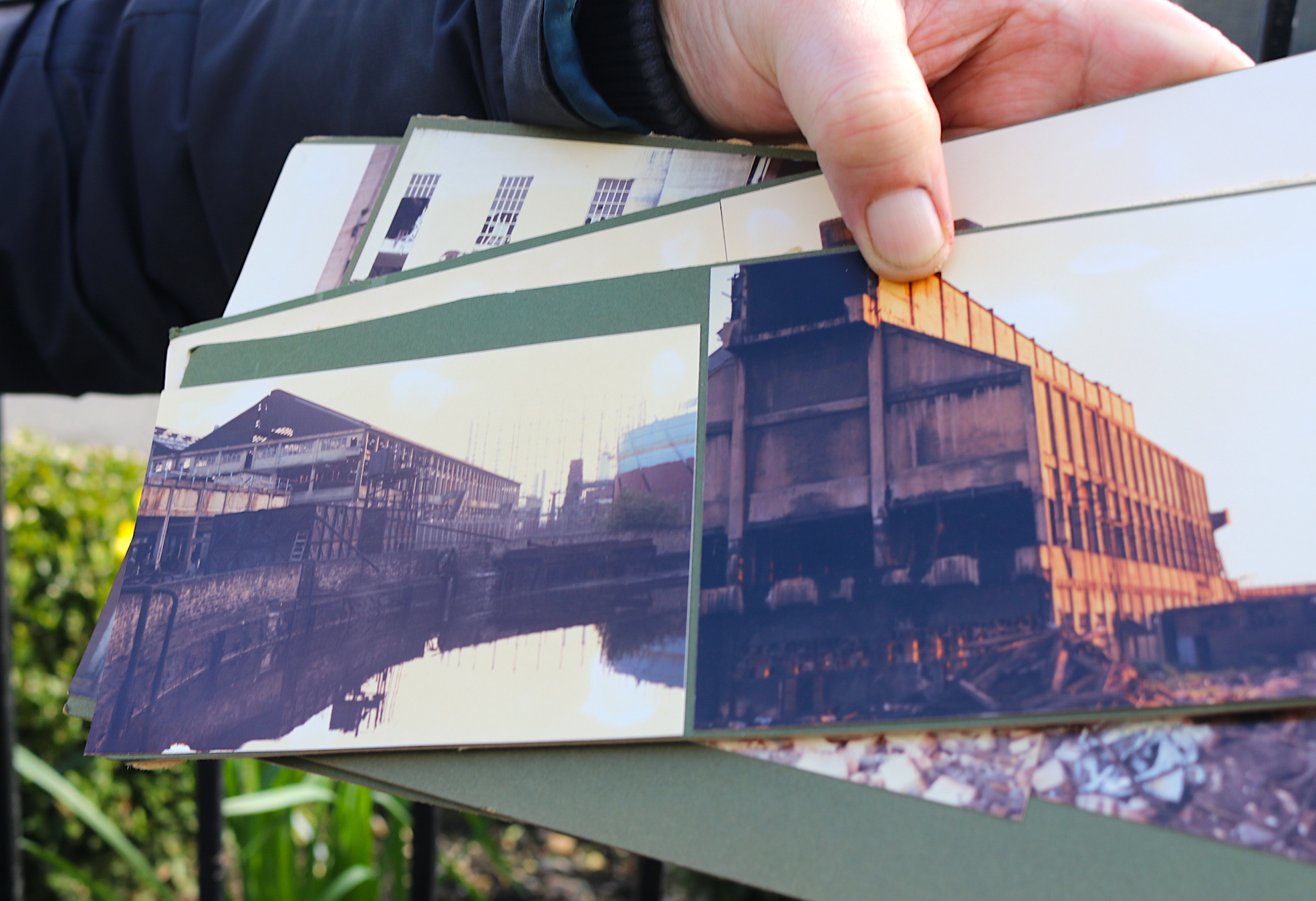
A Propos de Marseille – a Walking Letter for the Bureau des Guides.
Week 3 : Letter 3: a walk for Bureau des Guides, Marseile
“Illness is the night-side of life, a more onerous citizenship. Everyone who is born holds dual citizenship… [and] sooner or later each of us is obliged, at least for a spell, to identify ourselves as citizens of that other place…. Yet it is hardly possible to take up one’s residence in the kingdom of the ill unprejudiced by the lurid metaphors with which it has been landscaped. It is toward an elucidation of those metaphors, and a liberation from them, that I dedicate this inquiry.” (Susan Sontag 2002: 3)
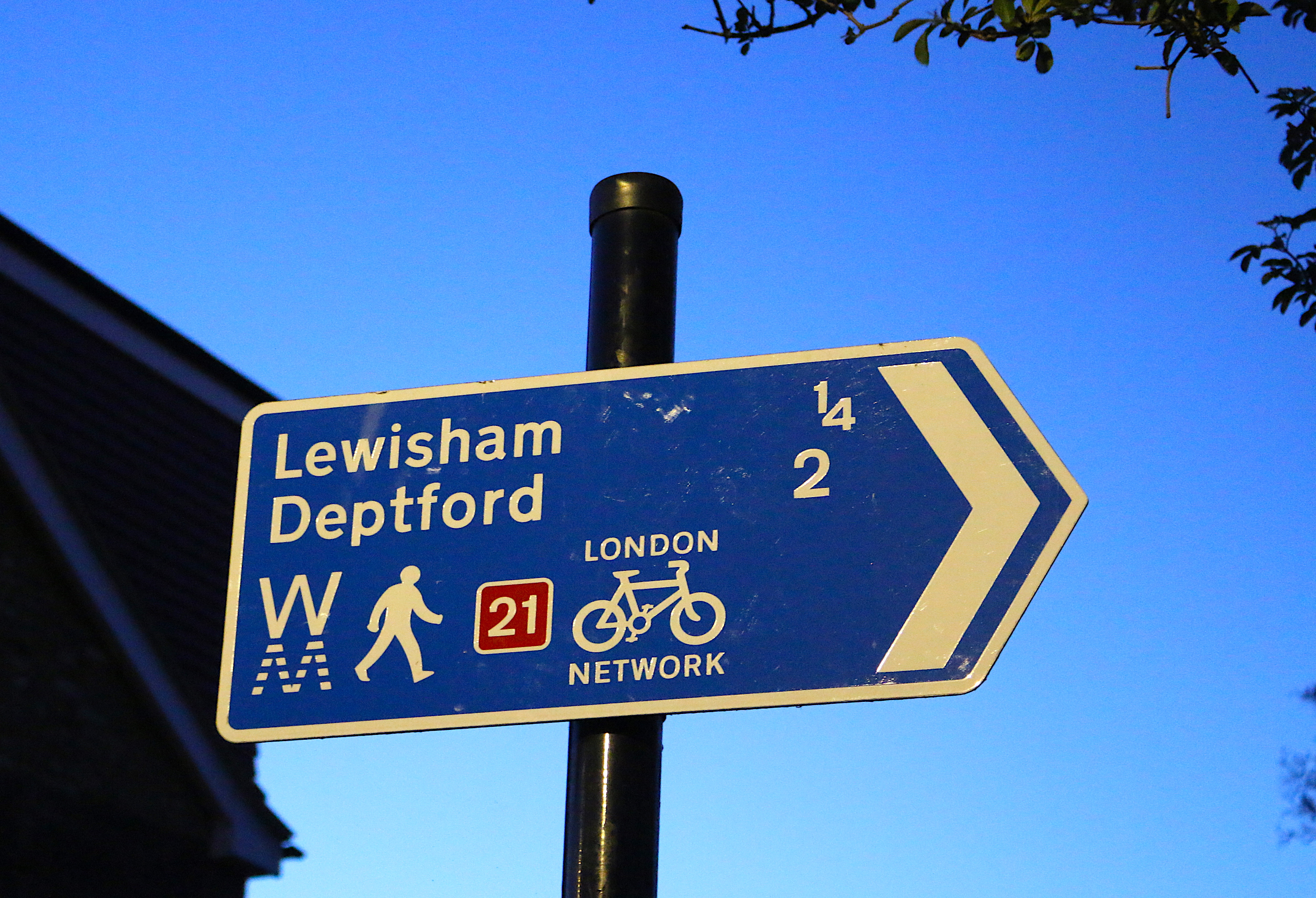
I start with the proviso; that as artist Brian Lobel pointed out to me so candidly the night before London lockdown (UK March 23) one cannot begin to make art, good art, anything significant in a time of change; art in a crisis (too hysterical), artworks with upheaval (too literal), theatrical performance (too excruciating and miss directed). One must wait until the dust settles before it is prudent or even aesthetic to respond. As the author of the recently published Cancer and Theatre, I am grateful to Brian for waylaying me and pointing me in other directions, just as the Bureau des Guides have been my spirit guide, while forging the inspirallondon trail back in London.
But I am impatient and I cannot wait for this distance of time. In this state of exception – with our dual citizenship – I think of you in Marseille and all the pathways taken there by you; making your other ways in that slice piece of the world. When it comes to swimming upstream, against received opinion, I(we) am not one to wait patiently. Was patience always such a virtue? We may well walk it off, impatiently, together, this spell: as “Citizens of that other place.” So, not to be too foolhardy – headlong in joining the twittering cognoscenti – I have this confession to start with: that in these so-called strange locked-down days, I haven’t felt more lucky to be alive, and more in tune with life, even as the other real world/s seems to suffer (but that is another detour for another tale).
This walk I take for you now, is a riddle then – a spell (AUDIO Abracadabra Information – Charles Hayward, 2004, Locus Solus.)
– one filled with charm and the beauty of paradox, with no rhyme or reason but the desire to walk, to speak, to experience, breath. So too, I hope it is not a falsehood to say, that it is written with the fever of life, in all its fluid and contradictory pathways – for lockdown has meant enforced reflection – micro-experiences and attention to those details of life we so easily and casually pass by in our rushing, breathless urge for productivity. It is walked, and signed, with a poet’s urgency, signifying something and nothing, plunging into others places, in fragmentary dream like form. For:
“One of the greatest events of 20th C literature has been the evolution of a particular kind of prose: impatient, ardent, elliptical prose, often in the first person, often using discontinuous or broken forms…” (19)
The dream self or poetic self that emerges in the reverie of night walking, daydreaming, wandering and in unexpected raptures, wondering, that way lays – that asks you insistently to listen, sing, speak. ‘A poet’s prose is the autobiography of ardour. All of Tsvetayeva’s work is an argument for rapture… as [she] Tsvetayeva points out, ‘no one has ever stepped twice into the same river. But did anyone ever step twice into the same book?” (Susan Sontag from Introduction to Collected Writings of Marina Tsvetayeva 1983: 19-21):
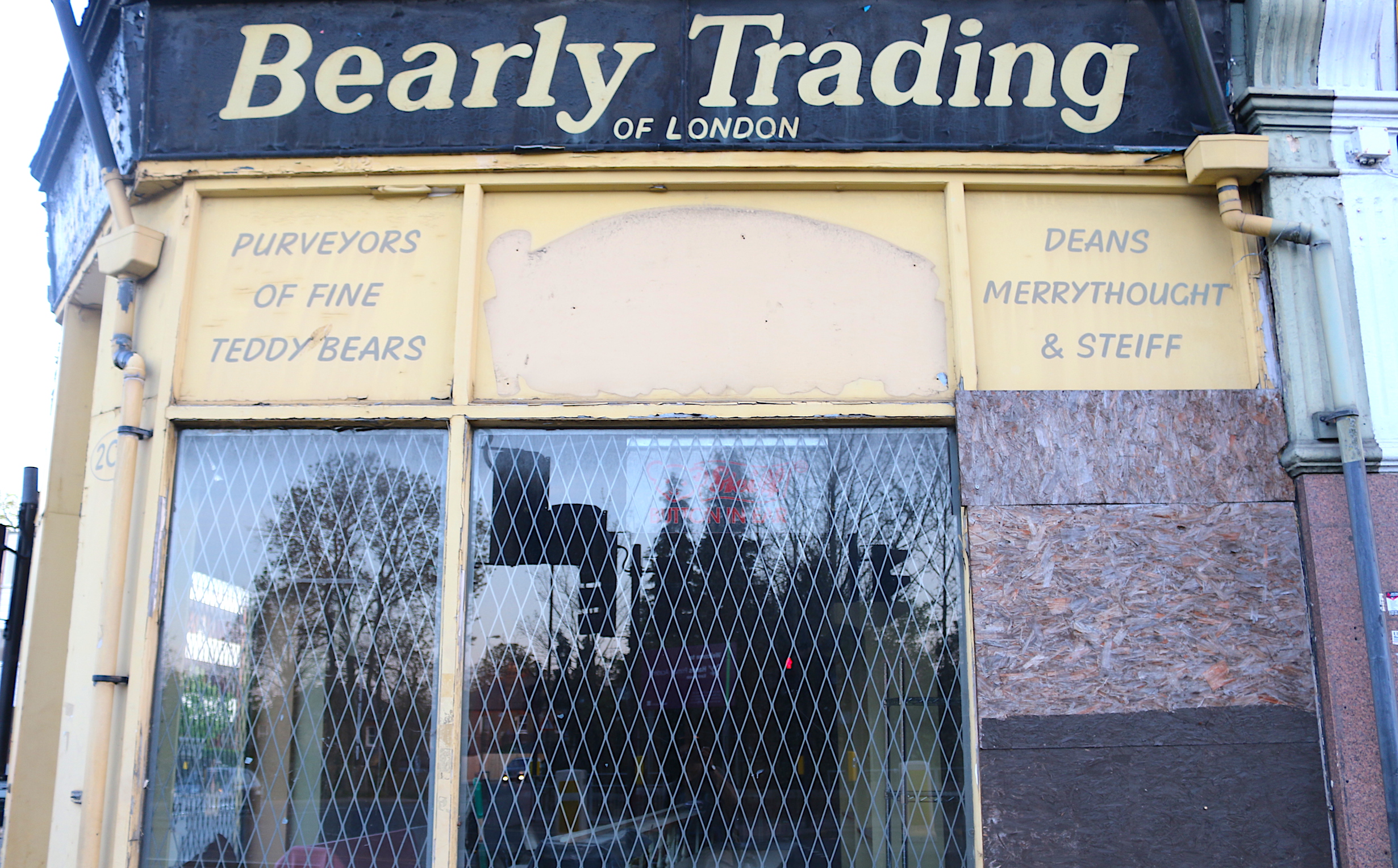
Following well signed routes – the lost rivers of lost London:
AUDIO: Dusk at the Ravensbourne Sunday 5th April – Ladywell Fields – to listen while reading…
I start here on segment 20 of the inspirallondon trail. Some of you will know of the places I speak, will have heard tell of them, perhaps even lived with them, but never experienced them in the light of lockdown.
Honor Oak, Crofton Park, Ladywell Fields, Catford Bridge, along Ravensbourne toward Lewisham and Deptford Creek, turning back along Brookmill Park to Brockley Cross and over the hill to Nunhead.
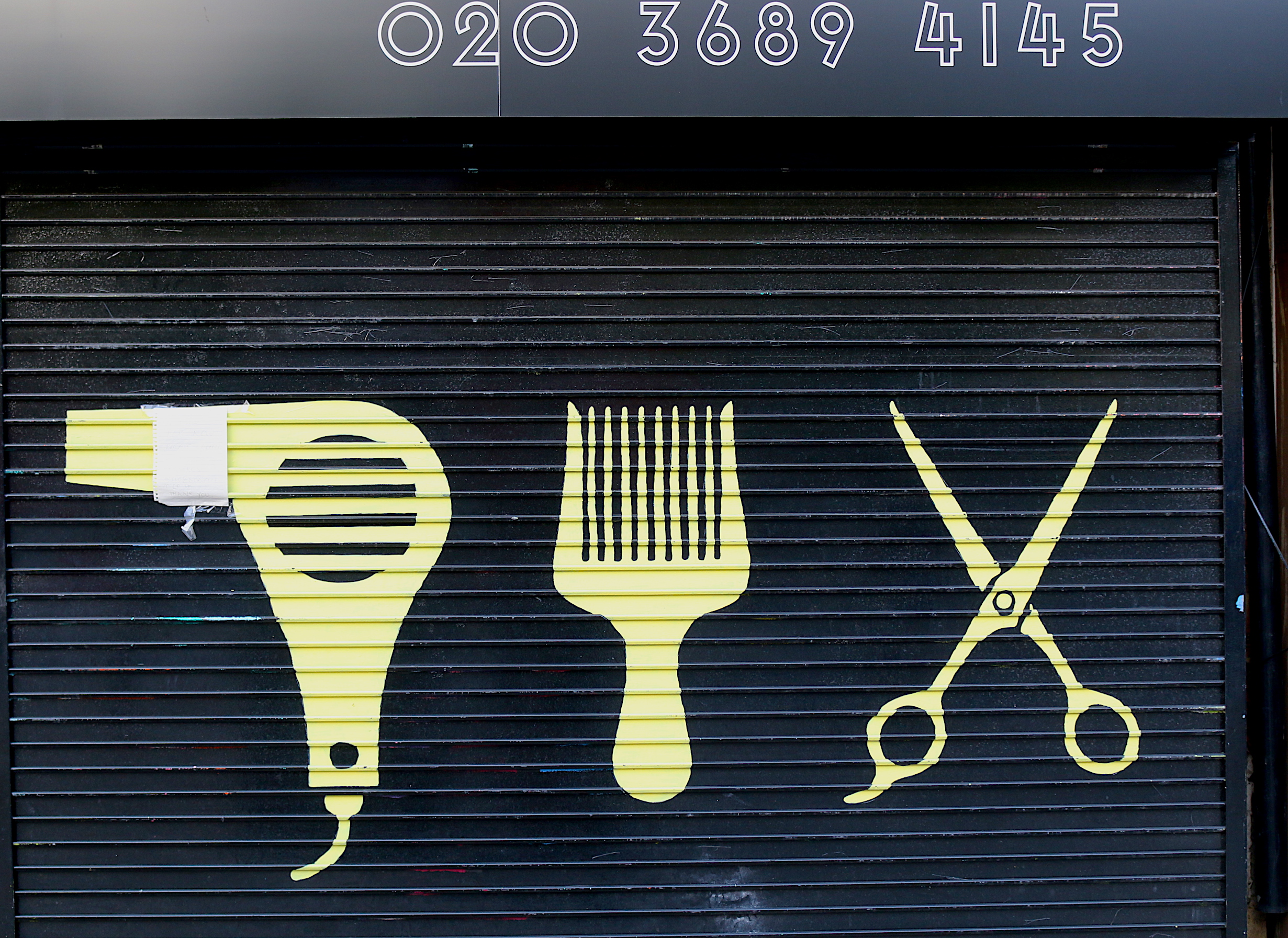
So, with an urgency and obsessiveness I go out at night and at dusk, to walk those parts of the inspirallondon trail that I can join together, finding signed routes to suture the deserted streets (following the charm of foxes); to weave in and out and across, threading ways through that sensory city that is always reignited, infused with Spring. It is a realisation too, that the Ravensbourne river flows down toward the Thames at Deptford Creek joining Segment 34 to 22 to 11 (skirting Segment 6), combining a looped walk with my current artistic research for HydraCity1.
This so-called lost river rises at Caesar’s Well in Keston just shy of Downe (near Charles Darwin’s House), four miles south of Bromley town centre and then flows through Lewisham and Greenwich to the River Thames at Deptford “where its 1/2 mile muddy tidal reach is known as Deptford Creek.” (Paul Talling). The first part of this pathway I will follow at night in the cold air, the second at dusk, in the crepuscular Northern light which lingers, the third part is but a dreamscape – nightday feverishly Half Human/Half Bike – made from hours of daylight wanderings, retraced. This WaterLink Way walk – bound by watery street names – buried, the river beneath, as concealed excess effluent chutes, now that the mills have rotted away or been dismantled for luxury apartments.
You have a feeling, a buried topography under foot, that the river delta still exists somewhere beneath us and is still shifting, leaking and oozing, liquefying the sediments on which the Shard and Gherkin and the Canary Wharf float. Now out in Doggerland, the gravelly swirling mounds spits and spurs, that lie beneath the Thames’ muddy estuary, and as it stretches out into the North Sea, making up the channels and trenches that now crisscross the submerged land bridge to Europe. Flowing out I will follow the Waterlink Way, near the source of the river by Ravensbourne Station and up to Lewisham – with detours along the River Pool; to follow this well-trodden path, but at night – a pathway undermined and underpinned by these subterranean tributaries, along the Pool, Quaggy, Mill Brook, Ravensbourne, Creek, Beck and Stream.
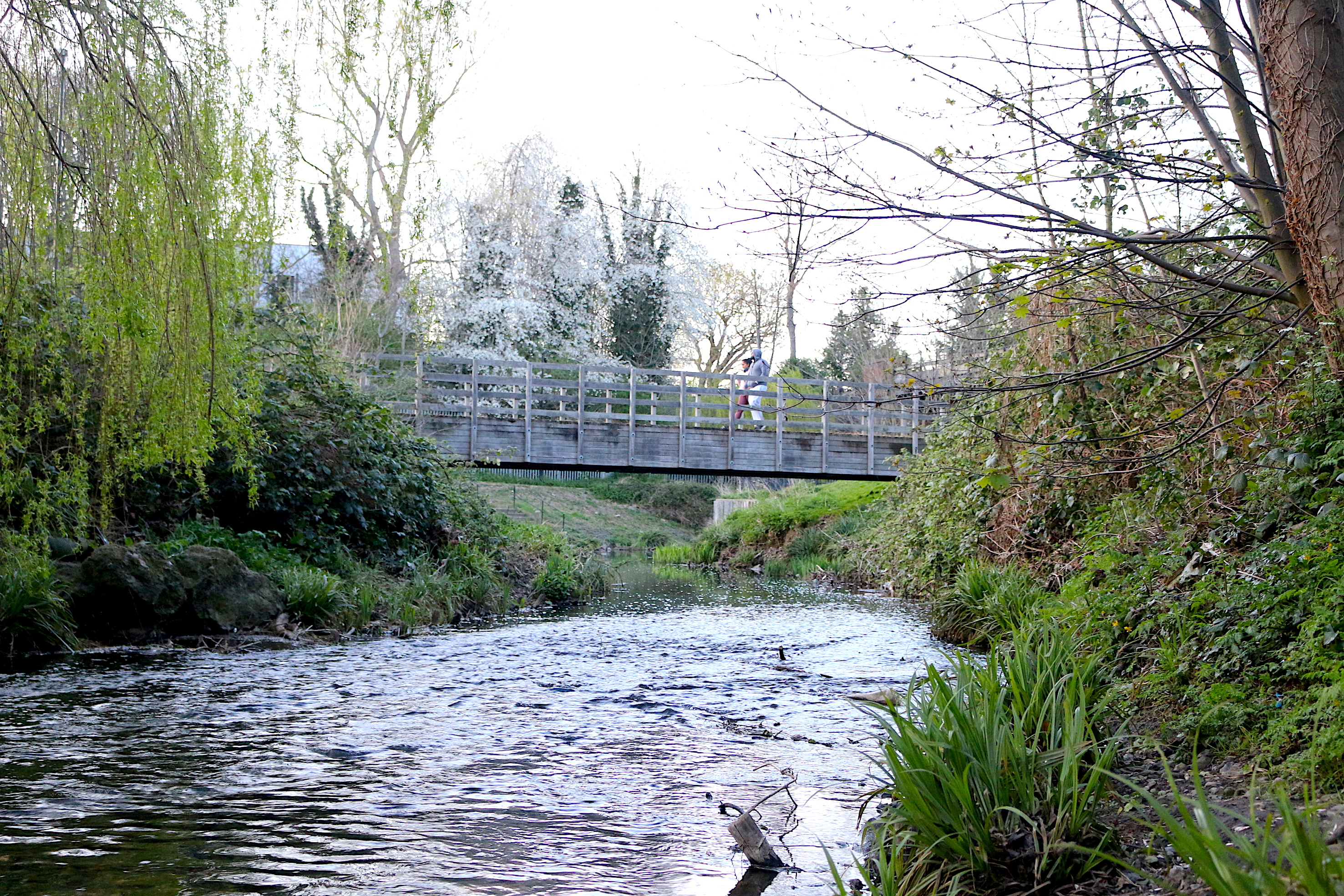
“In June 2009, London Mayor Boris Johnson fell into the River Pool whilst promoting volunteering to clean up the waterway”.
This part of the Waterlink Way is pure Johnson, a semi-manicured curving stream laid out as a vista – serving a functionless spectacle – as you step out from the exit of Ladywell Station, a fantasy stream. This curved ditch only serves as a long water pool when the rain comes, as the hemmed in concealed concrete culvert that carries the old river still runs along and outside of the Park. Buried in shade and concealed beneath mature trees it runs up from University Hospital Lewisham. It is very peaceful here in the hospital, I look into the curtained windows and can detect no movement behind the windows.
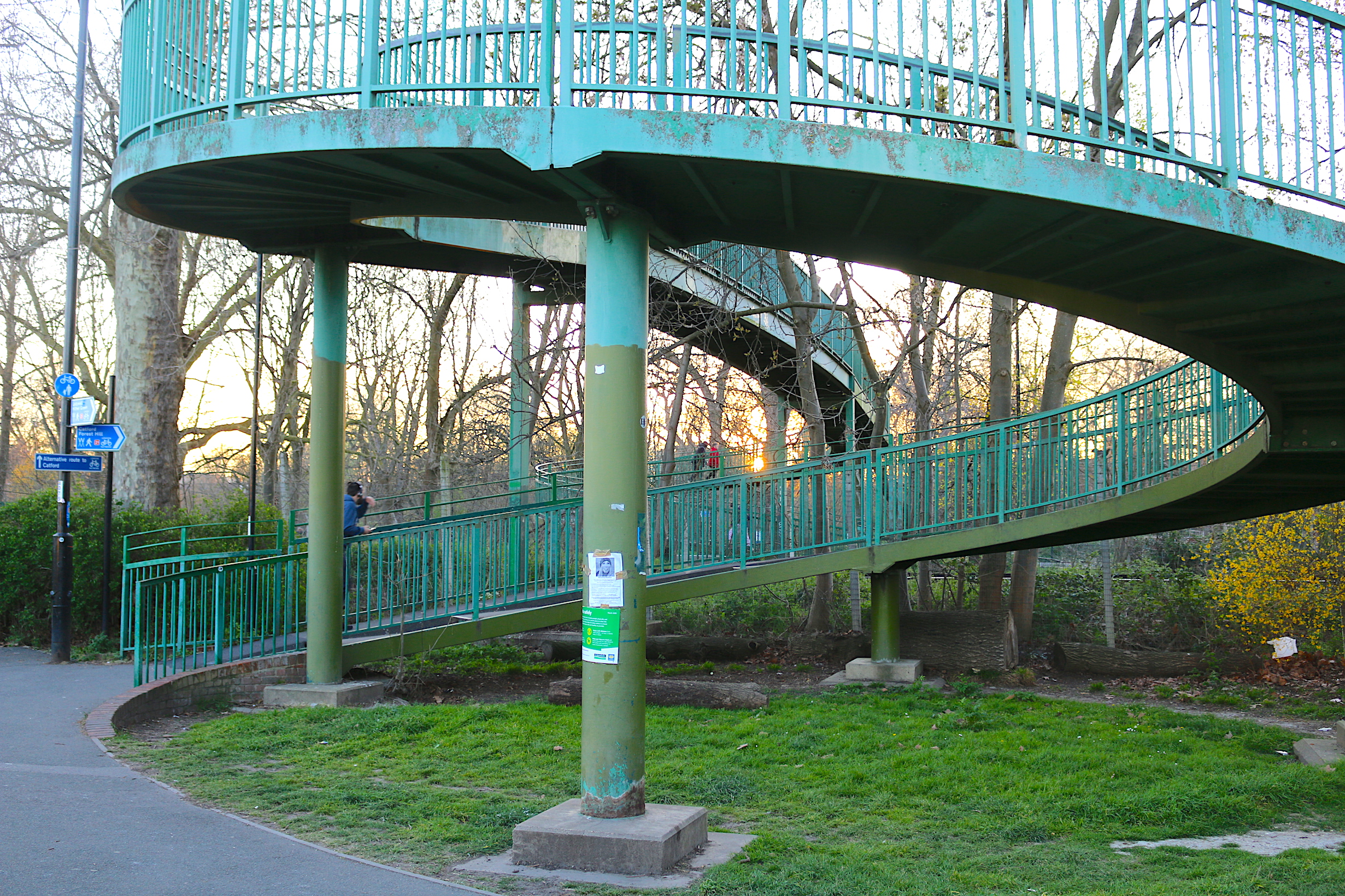
Now in a less well-kept part of the Parkway you reach a metal spiral staircase – a squat double helix stretched apart, one part looms over you, the other descends back across the void. It serves not to cross the river but to straddle a main railway line. I am halfway across this suspened gantry when two trains pass underneath. The pathway opens out into Ladywell Fields. For an instant, you can imagine you are really out in the countryside, meadow land. I stop, taking out the recording device I have in my coat pocket. It is without its spongy wind baffle. I improvise by placing my coronavirus dust mask over the mesh mic. It rustles on the microphone, registering maximum input, remote, moving. There is a kind of silence in the peace surrounding me: the river, a gently tinkling, is fringed with scrubby trees and small bushy shrubs, an unkempt undergrowth rustling with songbirds and invertebrates.
But it is the noisy garish parakeets* that prompts me to press record – dusk chorus – a cinema for the ear “cinema pour L’oreille”. The squawking of these large parrot-like birds, foreign heralds for a native London chorus – space and time concentrated in an evocation of a certain crepuscular atmosphere: with a few precise sounds – the cooing of a pigeon from under the railway arch – foreground, two blackbirds preparing together Spring rituals, the shuddering of wings, the branches flexing, in the distance, coots and ducks, their splashing calls. A bucolic spring evening, and not an aeroplane in the sky. *‘…parakeets can be a reservoir of pathogens. They carry some diseases found in livestock, although there is no evidence that they pass on to them… pet parakeets do sometimes transmit a flu-like infection called psittacosis to people; an outbreak in France in 1930 apparently caused some owners to release their birds into the wild, which has been proposed as the origin of the European population.’ (Graham Lawton, New Scientist 11 April 2020: 44)
In the GR2013 TopoGuide Julie de Muer invites us to listen to soundscape, to walk blind, to fish for sound (166-167). It is an invitation to all, to find their own landscapes, through another sense other than through over-dominant sight. What pleasure do we hear in the soundscape we are making – what makes this soundscape unique – that each one of us with a different ear, varying acuteness, constructing our own score; what makes it also participatory, a shared experience, that all of us are made aware of our ability to listen and recreate. It allows us to see and perform the world we thought we knew, in a new light. As if surfacing and resurfacing in and out of the subterranean flow we enter different registers of experience.
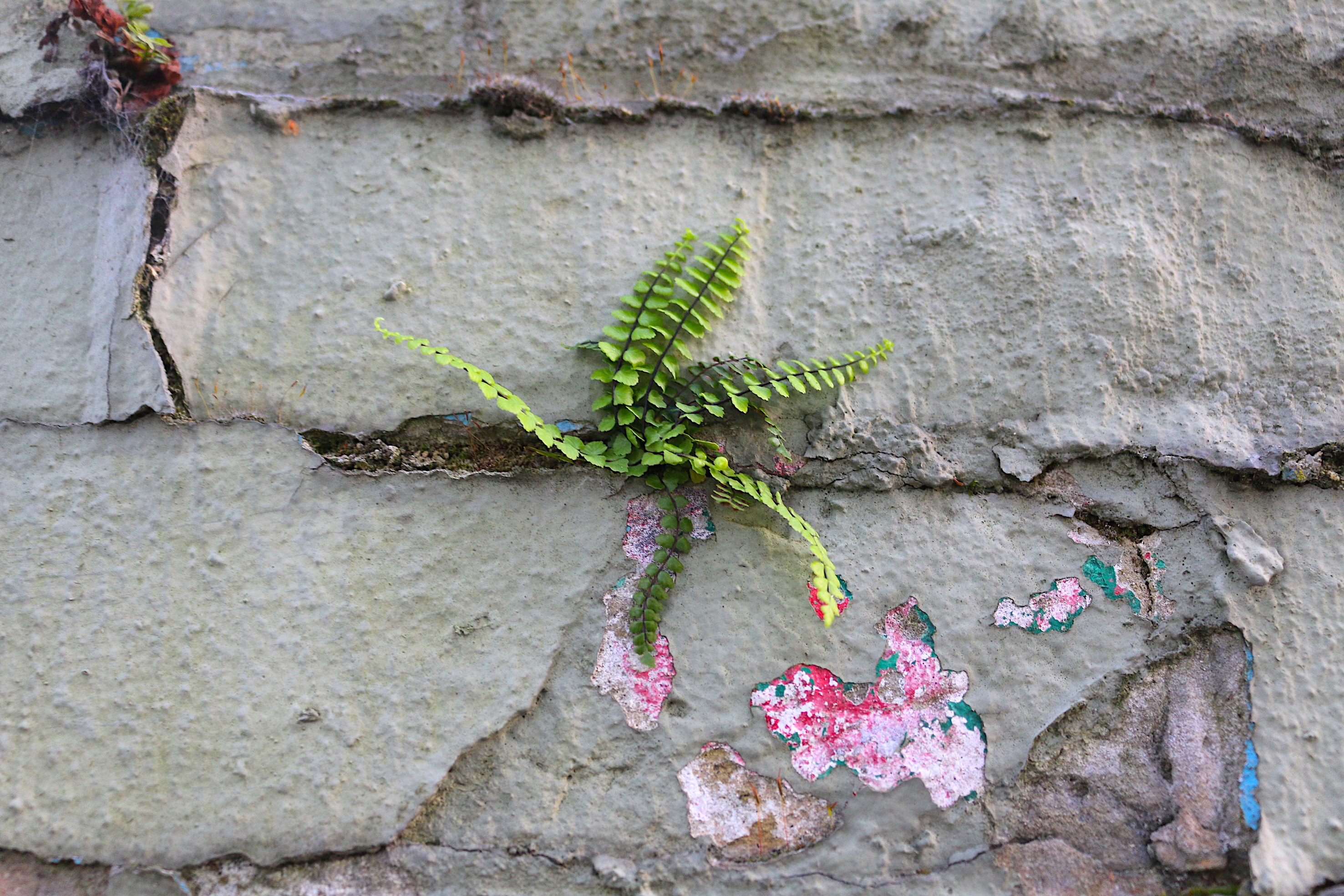
Subterranean mapping:
The web of rivers that make up the tributaries of the Thames lie almost forgotten in the grand spectacle of London – its emblematic image, a serpentine buckling – but what feeds its insatiable thirst, its milky surge but this web of waterways. Often, they are only a rushing of water heard through hidden grates or manhole covers, dislodged sound, water running beneath our feet from drains, and pipes, and culverts, sewage overflows and flood ducts. And then it appears out of the darkness, cool and fresh. Squatting by the river I plunge my hands into the cool water, what kind of organism clings to my skin now, overwhelming my defences:
‘The military metaphor in medicine first came into wide use in the 1880s, with the identification of bacteria as agents of disease. Bacteria were said to ‘invade’ or ‘infiltrate’. But talk of siege and war to describe disease now has, with cancer, a striking literalness and authority…In cancer, non-intelligent (‘primitive,’ ‘embryonic,’ ‘atavistic’) cells are multiplying, and you are being replaced by the nonyou. Immunologists class the body’s cancer cells as ‘nonself’… As Tuberculosis was the disease of the sick self, cancer is the disease of the Other. Cancer proceeds by a science-fiction scenario: an invasion of ‘alien’ or ‘mutant’ cells, stronger than normal cells (invasion of the Body Snatchers, The incredible Shrinking Man, The blob, The Thing). …And Reich’s image of death in the air – of deadly’ (SS 67-68)
In lockdown, we have been asked to confront our fear of death, and lethewards the rivers flows into this underworld where everyone is suspect, everyone contagious. And yet we can slip below the surface, in a fluid wandering, and reappear somewhere entirely new – beside the Quaggy? The bubbling brook, the frothing stream, the tinkling beck, sweet waters – river ways cleaned up as pleasure ways, to be rebranded. But what of their utility for the other city dwellers, our mammalian compatriots, for the amphibians and invisible invertebrates? Being waylaid unexpectedly by this correspondence of streams and flows – hydraphonics, hydreography (A blend of water choreography, social interactions, and sound searching) – sometime soothing, sometime stinging, sometime corrosive, as water laced with acidic mineral. In the background, the intermittant wail of sirens.
I swivel on my hips holding the microphone, a woman who had earlier passed me without a side-glance, returning from her circuit exercise, smiling, asks what are you doing? You recording this?” A gesture – a silent reply. I cannot speak, to interrupt the soundscape, sacrilege.
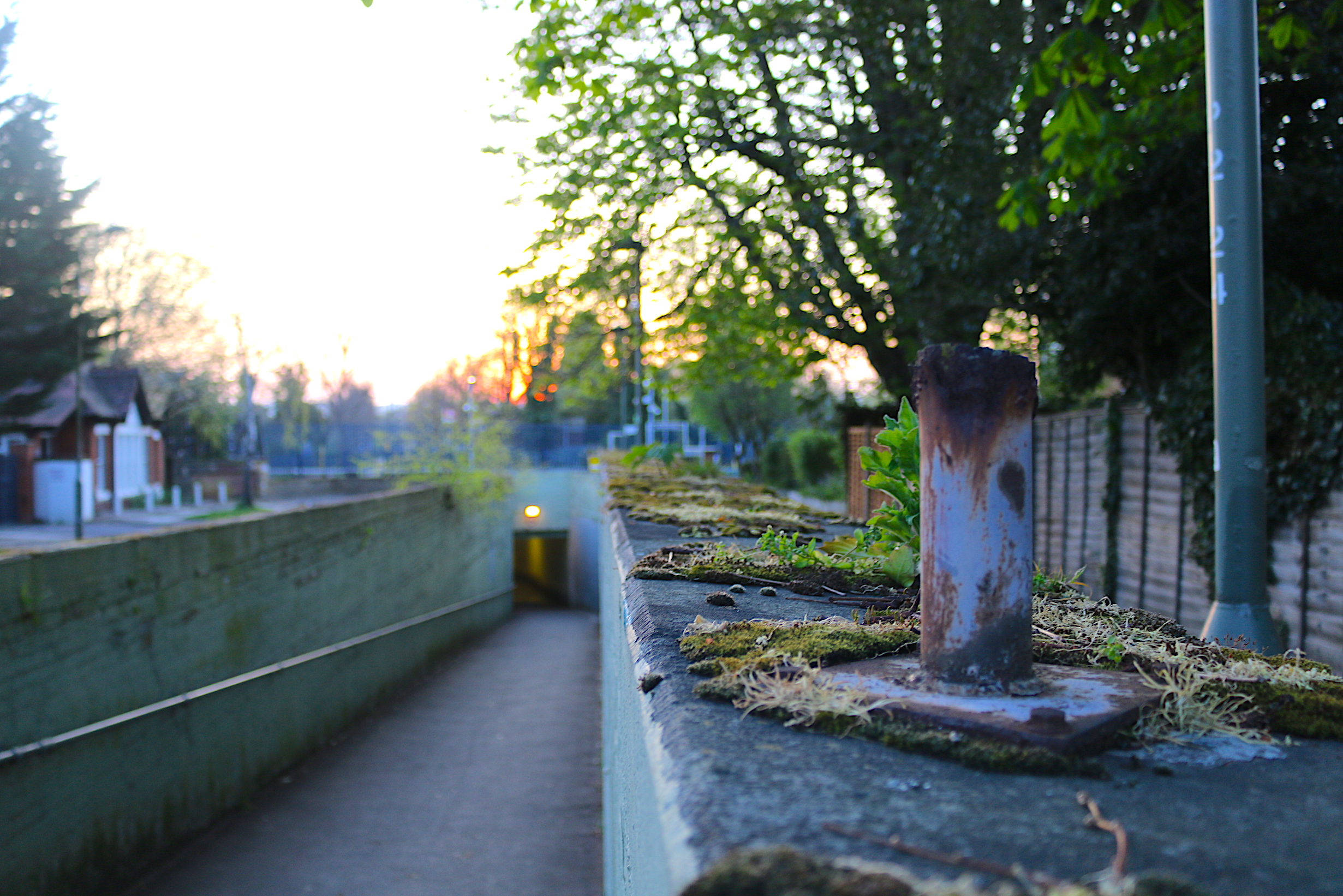
In a city like Marseille, where everything seems more exaggerated, more subject to the fierce weather – either drought or torrent – perhaps everything appears less muffled, more amplified. But that is only one flow, for there is a variety of climate and micro-climates there too that belies the heat, the long summer drought, the burning wind. Hidden pockets of flashing green and of lush cool foliage, a soft hidden light– think of La source at Fontaine de Vaucluse – springs and water courses that hide beneath the tarmac and concrete. All these sounds and marvels have their own invaluable magic, spells as therapeutic effect, their irresistible charms.
Foraging Sound, Secret Remedies:
I am browsing through – Secrets & Remedies of the Herbs of Provence – Text by Claude Gardet, illustrations by Dominique Mansion (Editions Ouest-France 2009) and come unexpectedly upon this passage:
“With other labiate, rosemary was a component of the “Four thieves’ vinegar” which was very fashionable from the 17th century as an antiseptic. It was said to have been concocted by four highwaymen from Toulouse, or Marseilles, to protect themselves from the miasma of the plague so that they could rob the dying during epidemics. In the 18th century, the botanist Roques declared: “the infusion reanimates the action of the stomach… It can be recommended in cases of fatigue, palpitations, dizziness, sparse menstruation and at puberty.” (Entry on Rosmarinus officinallis – sea rose, troubadours’ herb, incense, Romania 22-23)
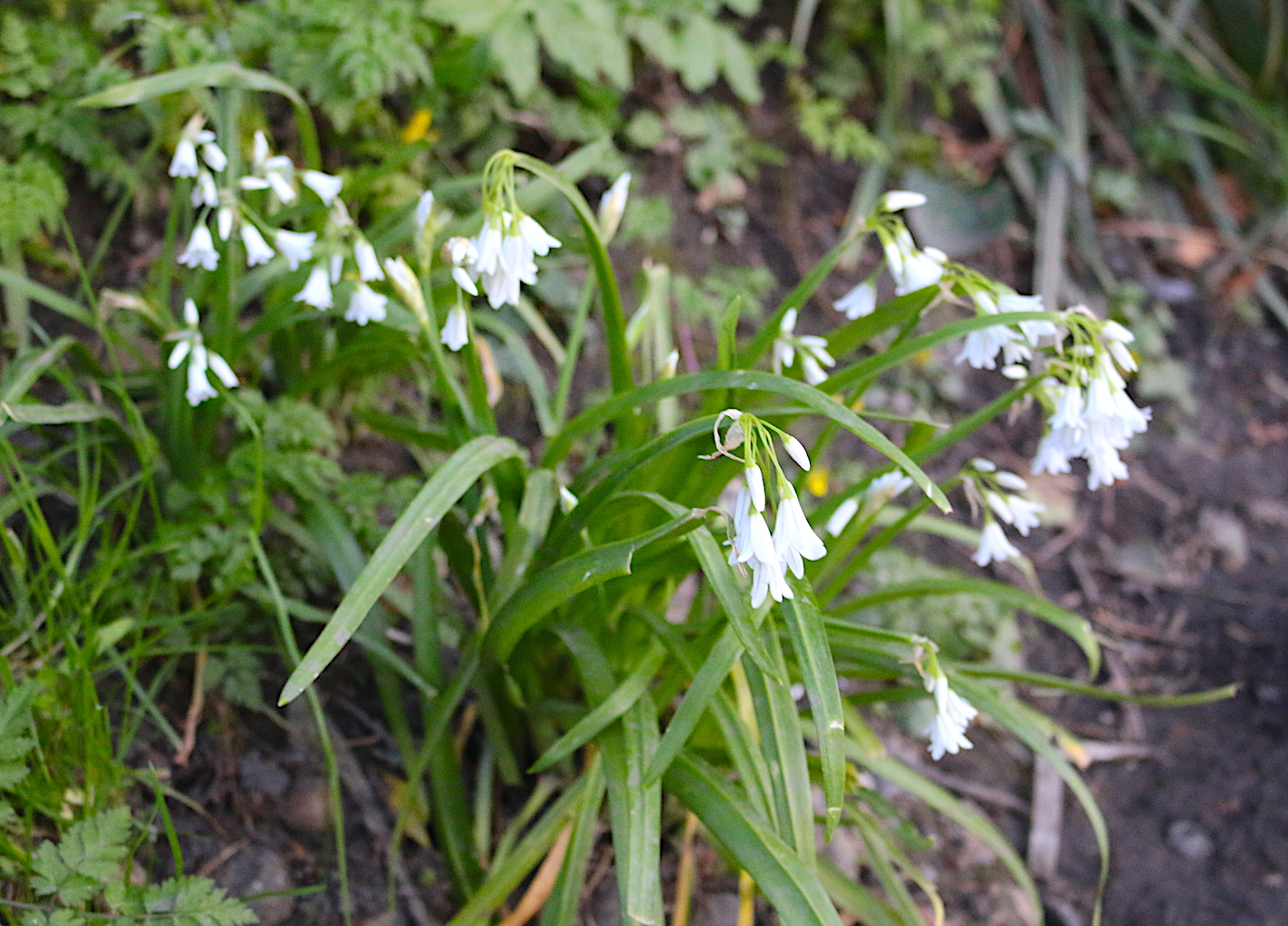
Concoctions to soothe, conviviality – becomes real unexpected hospitality – that transforms generosity into the compost of community: fermenting, decomposing, concentrating nutrients for a new fertility and new growth; composed from the unheard, the forgotten, the overlooked, the repressed. All composted, to reanimate new genii and new hybrids.
Along the WaterLink I think of collecting and foraging: chickweed, goosegrass, fat hen, achillea millefolium (Yarrow), nettle, thistle stems, sweet woodruff and this wonderful plant, alium triquetum (three Cornered leak), growing on the river bank like snowdrops.
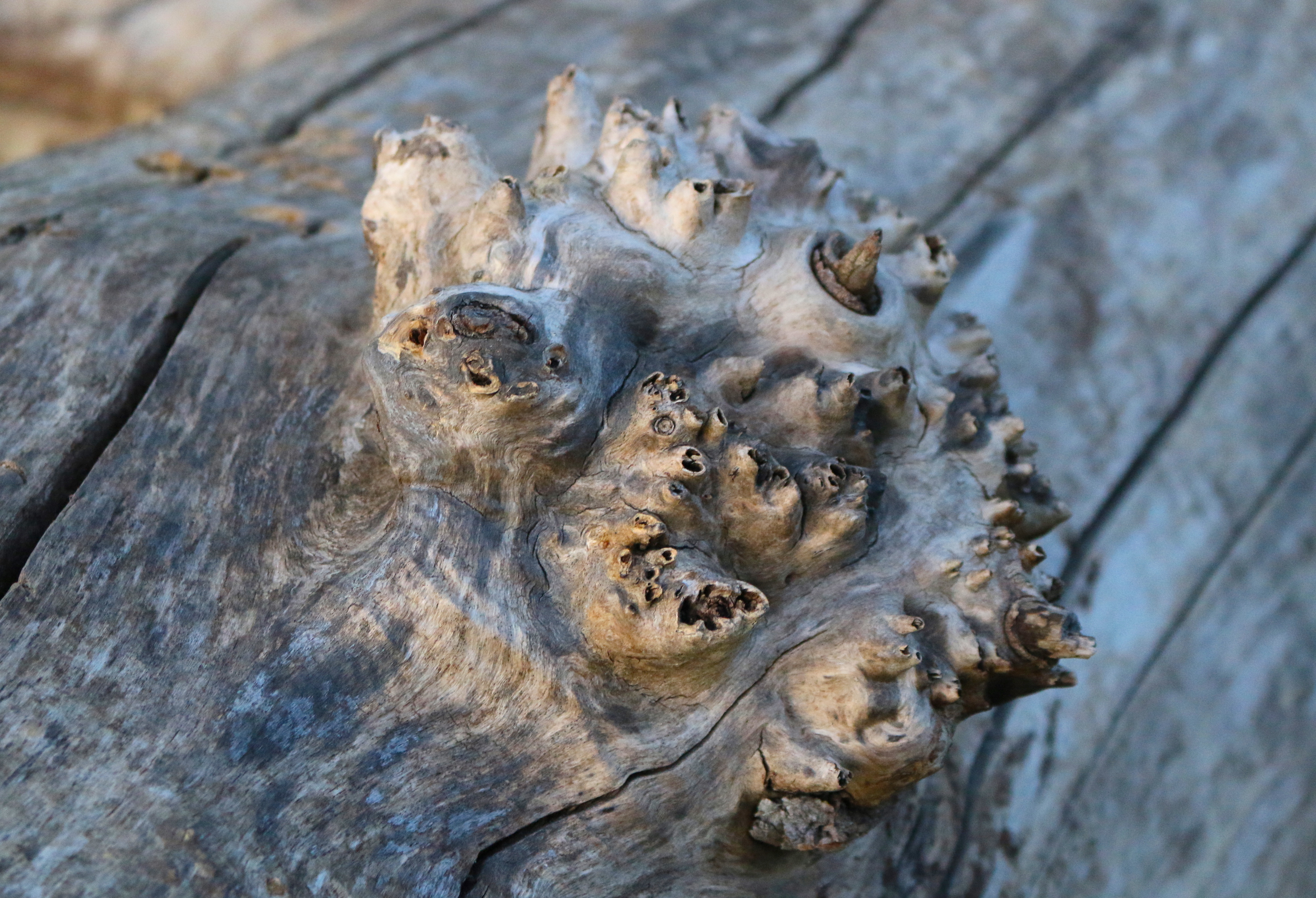
I am returning along the tree-lined river, no longer recording the dusk chorus, I stop to look at an information plaque – ‘the unique Elm of Lewisham’ – this rare ‘Klemmer’ cultivar, stands leafless, a survival from the ravages of Dutch Elm disease. It is almost dark, surrounded only by shadows, I take a quick photograph of this rotting protuberance. What secret remedy allows it to flourish, surrounded by these casualties of City life: the cans, ampoules and syringes, the funghi and rot, the fatique and infertility?
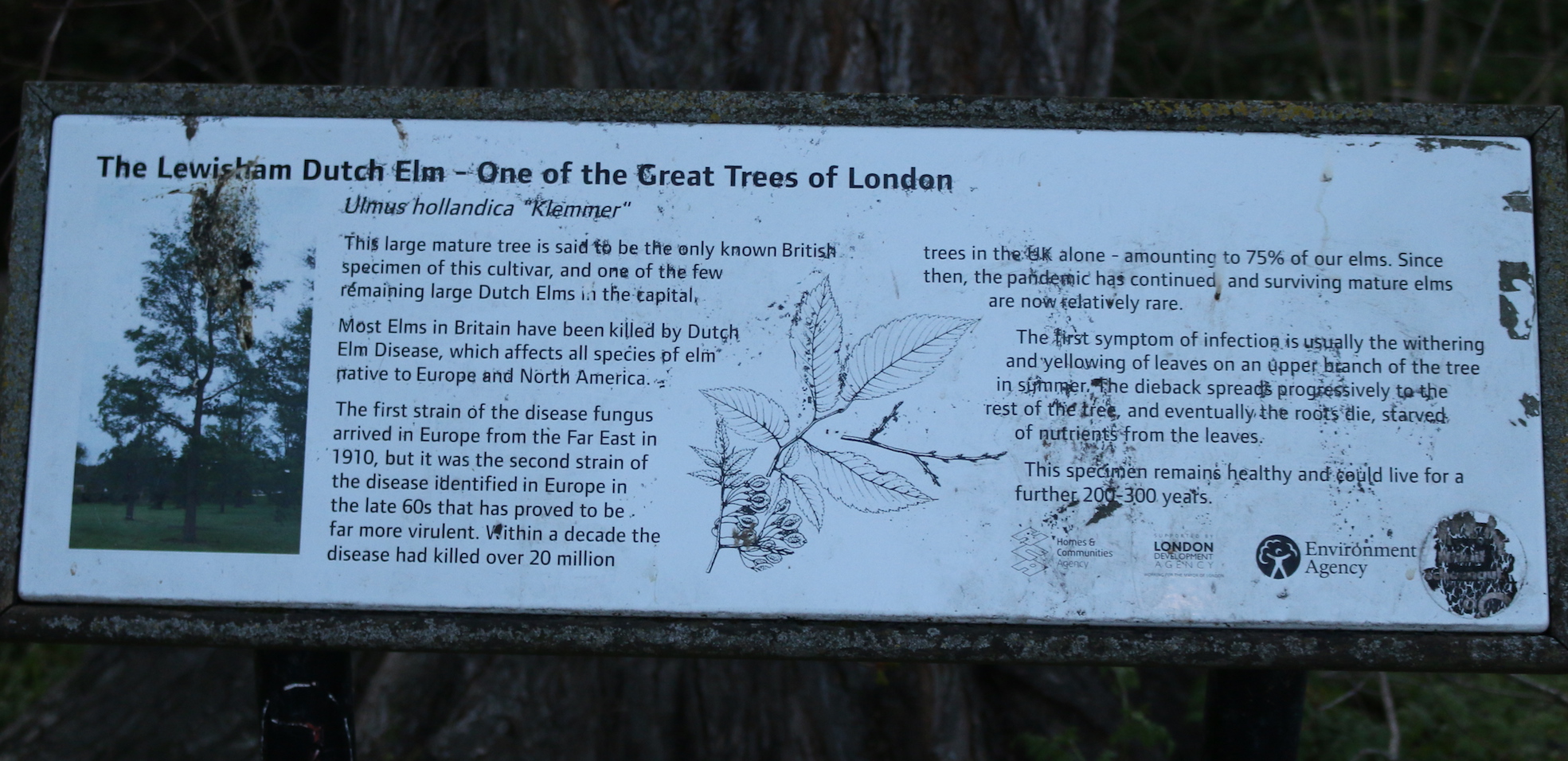
Whereby Water, rapture:
Now I am on the back hills of Beckenham Place Park. No grand entrance here just slipping off the main road into the unkempt wood fringe: the notice board announces Naked City. I stop at the crest of the hill to survey the wild meadow, now brown and dusty with trampling of winter mud, spines of yellow flowers interspersed with electric blue cornflower drift toward the horizon. It is dusk already, almost dark, I stand still, watching, listening:
Ear-drums stretch their sensitive sail,
The widening gaze empties,
an unsinging choir of midnight birds
Swims across the silence.
I am as poor as nature,
As naked as the sky,
And my freedom is spectral
Like the voice of the midnight birds.
I see the unbreathing moon
And a sky whiter than a sheet;
Your strange and morbid world
I welcome, emptiness!
(Mandelstam: 1910)
Such an apt rendering of rapture, Mandelstam in James Greene’s free translations are often close to reverie, capturing more of the lyrical than the hard concrete stone of the poet’s Acmeism. These unusual English versions nevertheless transport us. We too have experienced these moments of mysterious inhalation, arrested by this whereby life. The beating of wings overhead, a silhouette of ravens borne across the sky, a moonlit walk sparkling with ice, these fragments of life, that arrest us in our tracks. We are pausing, our gaze reduced to spectral emptiness – we will have to listen, and sense in different ways if we are to swim out of the darkness…. And now that night has come we/I enter a realm of the phantasy – “whereby the real admits itself as phantasmatic’ (Butler, Judith: 200). Perhaps now, we, I, they dissolve into the dark streets…
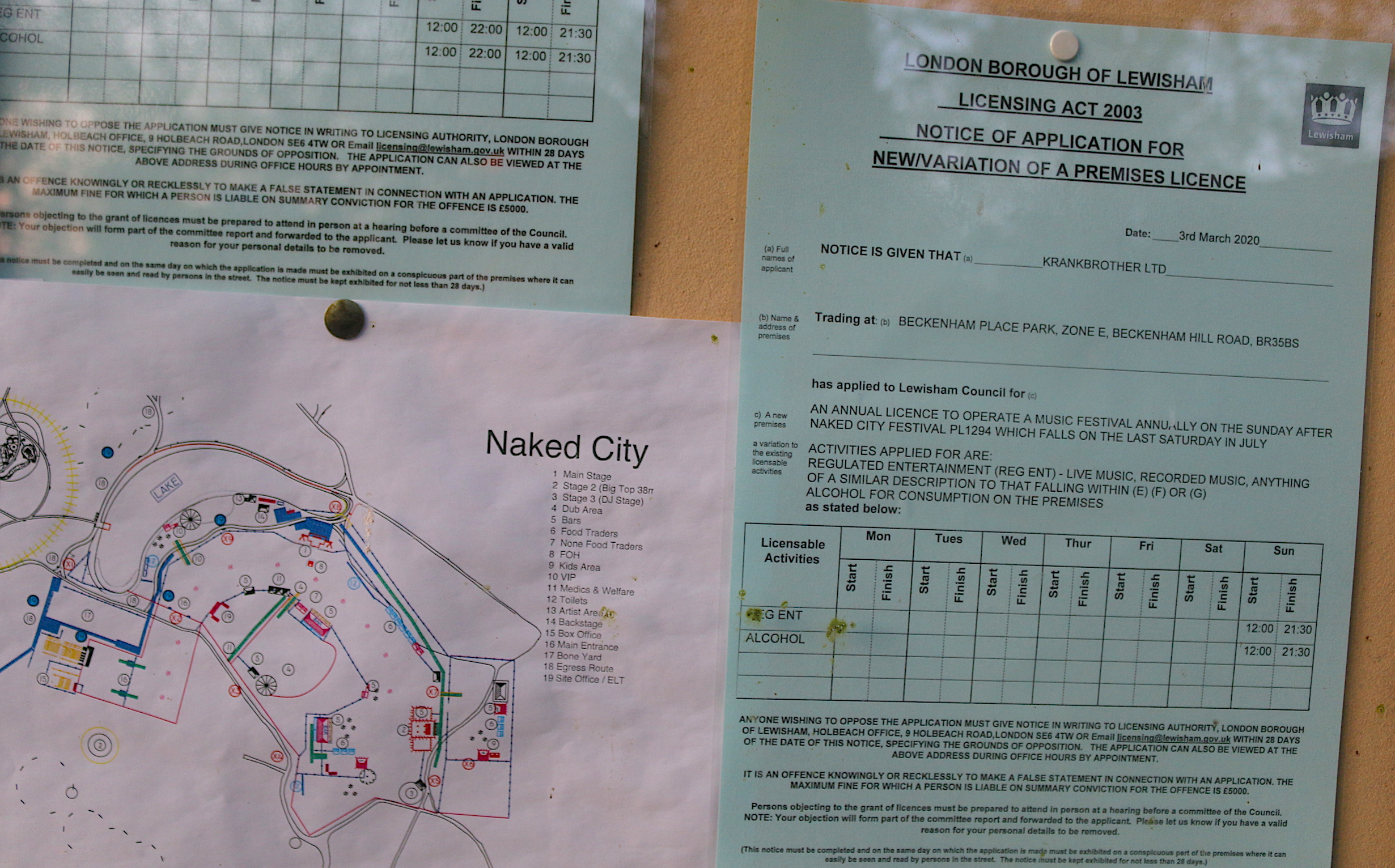
‘…to locate strategies of subversive repetition [enabled by those constructions], to affirm the local possibilities of intervention through participating in precisely those practices of repetition that constitute identity and, therefore, present the immanent possibility of contesting them.’(ibid. 201)
le facteur est un vrai marcheur de l’utopie/ the postie is a true utopian walker…
…the question becomes “…not whether to repeat, but how to repeat or, indeed, to repeat…”(ibid. 202)
The city postie is a true urban explorer – they trace a similar path day in, day out – refining their routes in endless repetition. At this particular time, as in other periods of stress, they have become ‘essential’ workers, heroic messengers lubricating the many hidden transactions between citizen and state, passing from individual to individual documents that never lie, all the while binding us together through a sense of society, through civility and exchange. But how they are, a presence now? Perhaps the only human contact for many souls, however fleeting.
They didn’t bring me a letter today:
He forgot, or went on one of his trips;
Spring’s the trill of silver laughter on the lips,
I see the boats in the harbour sway.
They didn’t bring me a letter today…
(A. Ahkmatova 1911: 9)
Society locked down in ‘self-isolation’, the postie freely roams the streets delivering their parcels of happiness, angst and excess. They know the other ways, the back routes and cut-throughs, yet nothing is quite as it appears. For there are always exceptional circumstances, not least in negotiating the exasperated “etc.” – non-human others: guard dogs on chains, the occasional peacock, caged birds – canaries and reptiles, a bolshy cat, anything that is semi-domesticated, ready to pounce on the unsuspecting, ah the bouc emissaire:
Le facteur from Figures de marcheurs periurbains –une collection de Julie de Muer (Cercle des Marcheurs; 82-3)
<< Le facteur est un grand connoisseur de l’habitat periurbain…[elle/il] reve de cette ligne ligne qui nous relierait les uns aux autres dans la tres grande ville, car le facteur est un vrai marcheur de l’utopie.>>
And then there are the ballads and the tall-tales of the Bureaux Guides, Massilian troubadours (slightly rougher than the classical troubadour/guide, they bring with them a menace of black humour, sprigs of absurdity, the possible from the impossible). Before the rot set in… how they could sing and mesmerise an audience.
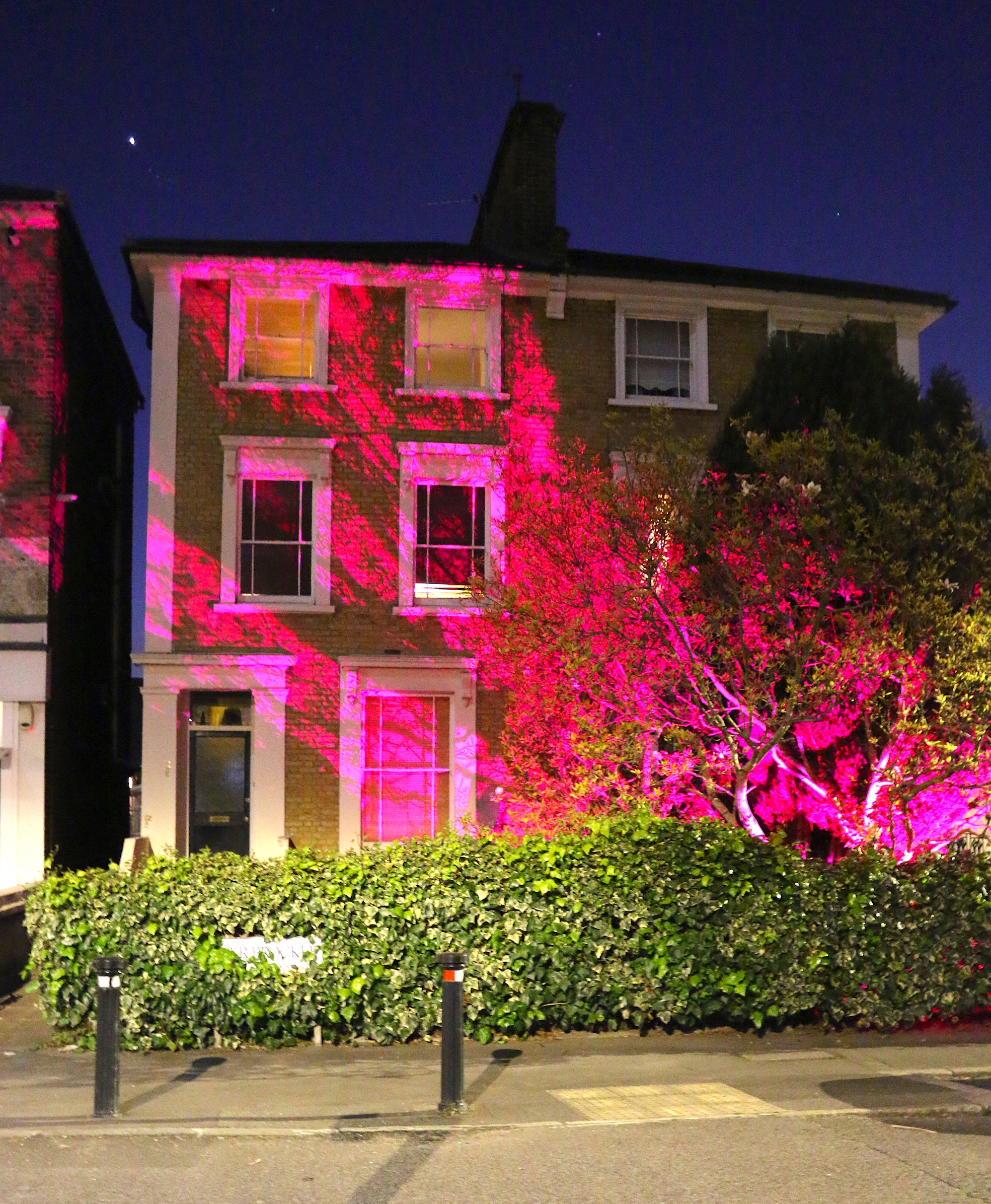
On the first, second and third nights I have to return on the last leg of the walk by the same back road, along Rokeby Road toward Brockley Cross, each time passing this strange spectacle, repeated colourings, from blue, mauve, green to a vivid blood red orange. Without the soothing presence of the facteur, how the mansion bleeds, now in the deserted silent street.
A band apart (part 2) – a Propos de Nice
It would be difficult to relate the exuberance of their youthful companionship. How these three were creative mentors, co-conspirators, collaborators, a band a part – these young lyric poets – full of the ecstasy of their youth: Anna Ahkmatova and Marina Tsvetayeva, Osip Mandelstam, swopping their cities with one another in the brevity of a Russian Spring – St Petersburg for Moscow, Petrograd for Paris, Berlin for Florence, Yerevan for Voronezh, then left out, entirely marginalised, officially forgotten. And now this viral shock, reminds me of them and how I am missing Marseille – barely known but through the brevity of osmosis, of correspondences and practices, through offerings of a shared sensibility, I feel close to you all. In that perseverance to principle, to ways of seeing, doing and thinking together, that are enriching and that nourish one for a life time, even in the hardest of times.
Later, on returning home I stumble upon Coeur fidele – to remain faithful to principles and reject the straight, easy pathway. This early Poetic Realist film was not a success with the public.
Its initial run in Paris in 1923 was terminated after three days (because of disputes among the audience). A re-release in the following year saw a steady decline in the size of its audience. Among critics and other film-makers however, Cœur fidèle attracted considerable attention continues to do so. Georges Sadoul said that the film “was a sensation, and was to remain [Epstein’s] best film”; “it touches us still by its fidelity to everyday life”. René Clair wrote enthusiastically about it: ” Cœur fidèle must be seen if you want to understand the resources of the cinema today. …For a film to be worthy of the cinema, that’s already a very welcome miracle! Cœur fidèle is worthy of it on more than one account.” (Wikipedia)
Musing and amusing associations, enjoying the sheer multiplicity of sensations that the eye conjures: They/we are walking in the afternoon heat to escape the breathless mal/a(i)ria that overwhelms Marseille (that long extended scene on the fairground rides, pure Vertov, reminders of Vigo’s a Propos de Nice) – among the concentrated odours, inscribed with fidelity, on the chosen pathway.
Voronezh (to O.M)
The town stands completely icebound.
Trees, walls, snow as though under glass.
Timidly I walk over the crystals.
Uncertain run of the patterned sledge.
Crows over St Peter’s in Voronezh,
And poplars and the bright green vault of sky,
Eroded, turbid in the sunny dust,
And the slopes wave with Kulikovo battle
The powerful victorious earth.
The poplars like clashing glasses
Suddenly ring out over us more powerfully,
Like one thousand guests drinking
To our triumph at a wedding feast.
Under the roof of the exiled poet
Fear and the Muse stand duty, each in turn.
And the night moves quickly
That knows not of the coming dawn. (Anna Ahkmatova – 1936/trans. Richard McKane: 17)
Hear the line echoing – in life – we are all in a way only guests. In the ancient woods, as I climb back toward the pathway, looking upwards a dead tree silhouetted against the moonlit sun-night rears up. Blasted but intricate. I stop and take its beautiful portrait.
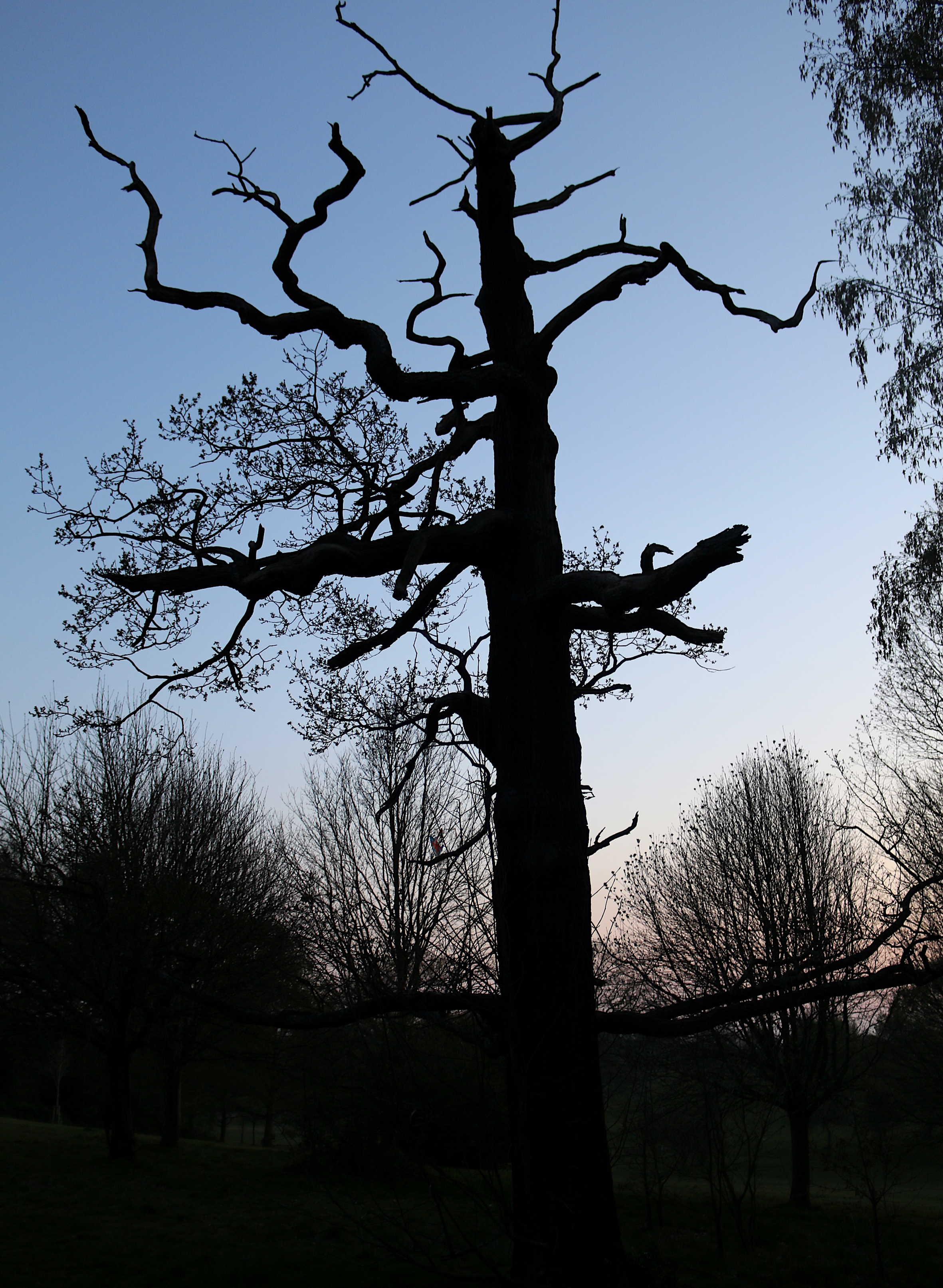
Komarovo Jottings (O, Muse of Crying… M. Tsvetayeva)
And here I retired from everything,
from every earthly blessing.
The forest tree snag root
Became the spirit – the preserver of this place
In life, we are all in a way guests,
Living is only a habit,
And I hear on the aerial roads
Two voices calling each other.
Two? And still by an Eastern wall,
in the undergrowth of the raspberries,
the dark fresh branch of an elderberry tree…
This is a letter from Marina.*
Anna Ahkmatova – 1961 November in Gavan’ Leningrad (in delirium)
*Marina Tsvetayeva, wrote a poem dated 11th September 1931 – 21st May 1935 titled “Buzina”: Elderberry.
Elderberry fills the scene! /Elderberry, green and green. /Greener than mould on the vat! /Summer’s birth, greener than that! /Elderberry, till the light dies! /Elderberry, green as my eyes. Buzina, Buzina, the concreteness of the sounds, so different from the English elder berry, French sureau, but so redolent of something beautiful and ominous, in its repeated musicality. Each one is different, each is able to see differently, each is unique…but how they sing, speaking to one another in an instantaneous – universal secret language – habits torn asunder. They walk cloaked in novel apparel… across time, a duration of patience, where we are all only guests.
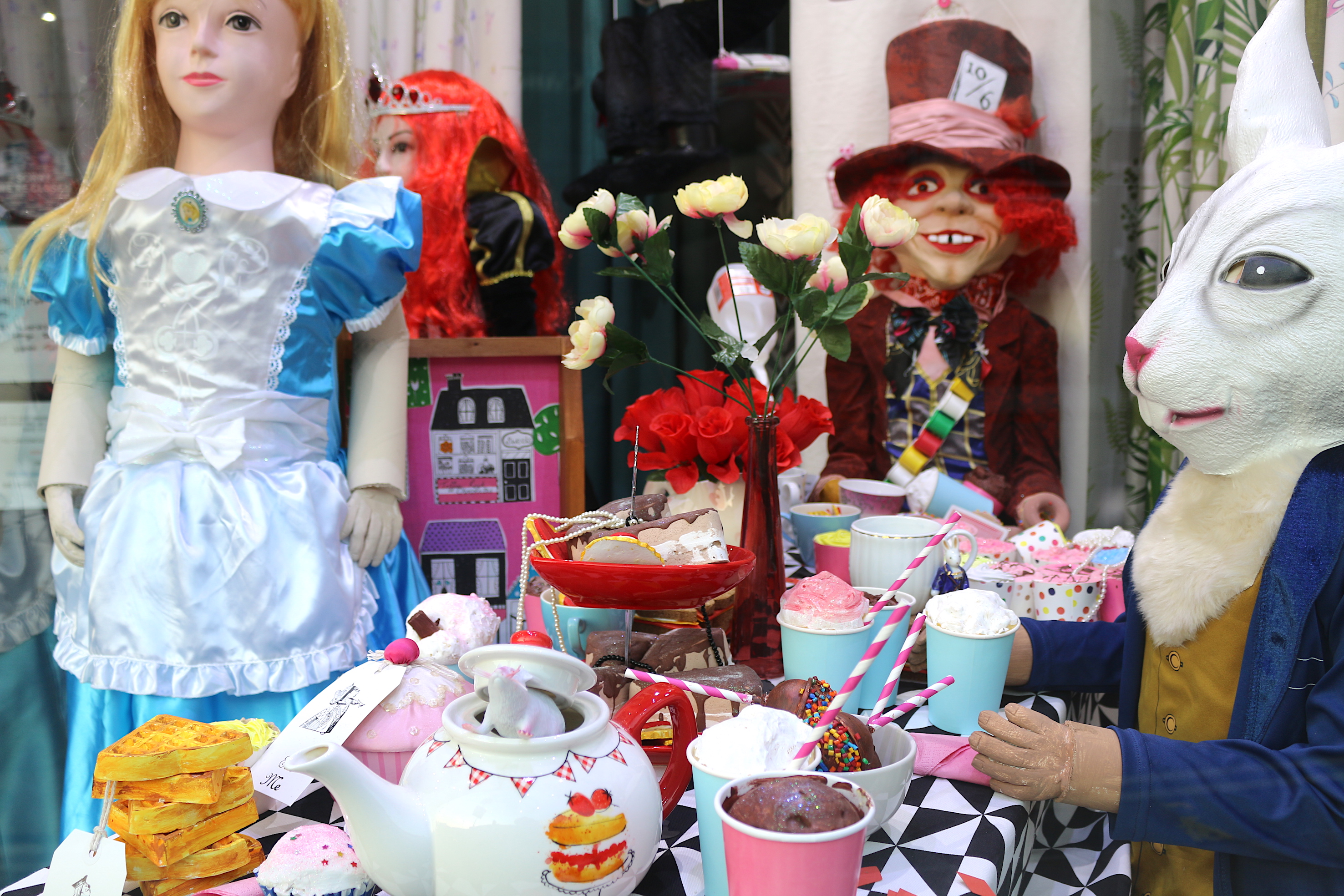
Poetic Realism
Everything goes against the grain or perhaps more aptly finds the true grain – as in a sheet of handmade paper with its hidden fibres long ways – that allows a perfect fold this way but not along the other orientation. Folding in and folding out, focusing in and out, internalising and externalising, in the city, walking, there is this constant choreography of movement – between apperception and being intensely engaged in the interior – in the intensity of the overlooked we stop to observe, to smell, to touch something that mutual stare of recognition – synesthesia overtakes us. And because this is a metaphoric text, guided by the poetic principle – I allow that recognition that Mandelstam claims as revelation even, in re-cognition, as if the scales on ones’ eyes were finally peeled back to reveal our sensing bodies, that concealed interior:
“Everything happened a long time ago, everything will repeat itself, again,
And only the moment of recognition for us is sweet.”
(Mandelstam – End third canto of Tristia 1918: 68)
A form of sensing – a poetic realism – why not? Steal and repurpose this, as a re-cognition of the realistic. Being realistic about what is, and what things might be, behind the surface. Using the metaphoric, the atmospheric, the esoteric as guiding principles.
Last Autumn, we stood at this spot, right here, and imagined returning together to swim outside in the newly constructed swimming lake. Was it icy then? The fashionably free – the pleasures of swimming at night, skinny dipping, or in those stolen moments dipping your feet into water as clear and electric as mountain torrents. But this is not an image worth painting now. The artificial pond fringed with long swaying grasses, now fenced off with an eight feet high metal barrier, is no longer so enticing. Quel domage. Instead I hold my head up and look beyond with this prescription of synesthesia:
With its extremely subtle acidic reactions, the eye, an organ possessed of hearing, which intensifies the value of the image, which multiplies its accomplishments by its sensual insults (which it fusses over like a child with a new toy), raises the picture to its own level; for painting is much more a matter of internal secretion than of apperception, that is, of external perceiving. (Mandelstam from Journey to Armenia, 1988: 211-13)
I hear something hidden here, in my attempt to paint this scene with a camera lens – Beckenham Place Park bandstand – and the memory is all sound, not young David Bowie; but the cawing of magpies, ravens and crows rustling in the branches and always in the distance, like a long hot summer evening, the cooing of wood pigeons as we gently swim out into the dark centre of the lake; the rocky beach recedes, people sunbathing beside their children playing, their chatter dissolving into the froth and splash, limpid watery resistance. Now revealed a ring of soft blue trees tumbling back down to the dark water – surrounding you – you hear only the sound of your own breathing and arms gently turning, oscillating, held up by a strange wilful buoyancy, we float.

Homeopathic doses – sympathetic magic… for reading aloud these -“Recipes for hospitality”
Récits d’hospitalité – the radical hospitality of the Hotel du Nord – no longer just a place to stay but recipes for participating in the creation of alternative sustainable structures following the principles of The Faro Convention – with its productions locales de fabriques, d’artisans, de créateurs – The Faro Convention Network is made up of a growing number of “heritage communities” participating in a dynamic pan-European network, offering extensive knowledge, expertise and tools, within a framework for constructive dialogue and cooperation.
AUDIO “Нежнее нежного…” Recipes for reading out loud:
OCTETS (Canto 6-9)
6.
The notched paw of maple
Bathes in round corners,
And one can paint pictures on walls
From the colour flecks of butterflies.
There are mosques that are alive,
And now I have guessed it,
Perhaps we are in Haghia Sophia
With a numberless multitude of eyes.
7.
Schubert on the water and Mozart in the birds’ song,
And Goethe, whistling on a twisting path,
And Hamlet, thinking in hurried footsteps,
Took the pulse of the crowd and trusted in the crowd.
Perhaps the whisper was born before the lips,
And leaves circled and fell when there was no wood,
And those to whom we dedicate our experience
Had acquired their features before that experience.
8.
In needle sharp plague goblets
We drink the delusion of causes,
we touch with hooks magnitudes
Small as an easy death,
Even where the spillikins had coupled together
A child conserves his silence –
The great universe sleeps in the cradle
Of a little eternity.
(May 1932-July 1935: 74-75)
Oh Osip, you gossiping Joseph – you admit it then – what a right Charlie! Not Numenism but nominative determinism?! Julie – ‘youthful, downy’ – of Muer, [oiseau, mammifère] to moult (British English), to molt (USA English) [of a serpent] to slough its skin, but also for a young boy, voice breaking. But I say muet – speechless/dumb – for all your sonorous dexterity, a cane in the hand to plant into the stony ground, listening to (La Canne a Sons: Le Cercle des Marcheurs: 167) Me/main; not then by my hand but with a slight Provencal accent – me magne – perhaps to get a move on, schnell, spinning like a city DJ; joined to Loic logically as Magnant/Magnent, that is again to get a move on and cross the Field – with light steps – to that very core of generosity and hospitality – towards Christine Breton, communal thinking – to rest your head for a night only in a Hotel du Nord (dear lord not a Breton Hotel). There, on the north-west coast where they speak, and they are, an/other language.
Finally – I know now – it was all just Alexandrine, that caravan of thought fields but it sounds feelingly if read out loud.
Octet 9.
And I walk out from space
Into the overgrown garden of magnitudes,
And pluck fleeting constancy
And self-consciousness of causes.
Infinity, I alone read
Your herbal without anybody else,
A wild, leafless book of healing,
A huge-rooted book of riddles.
(May 1932-July 1935: 74-75)
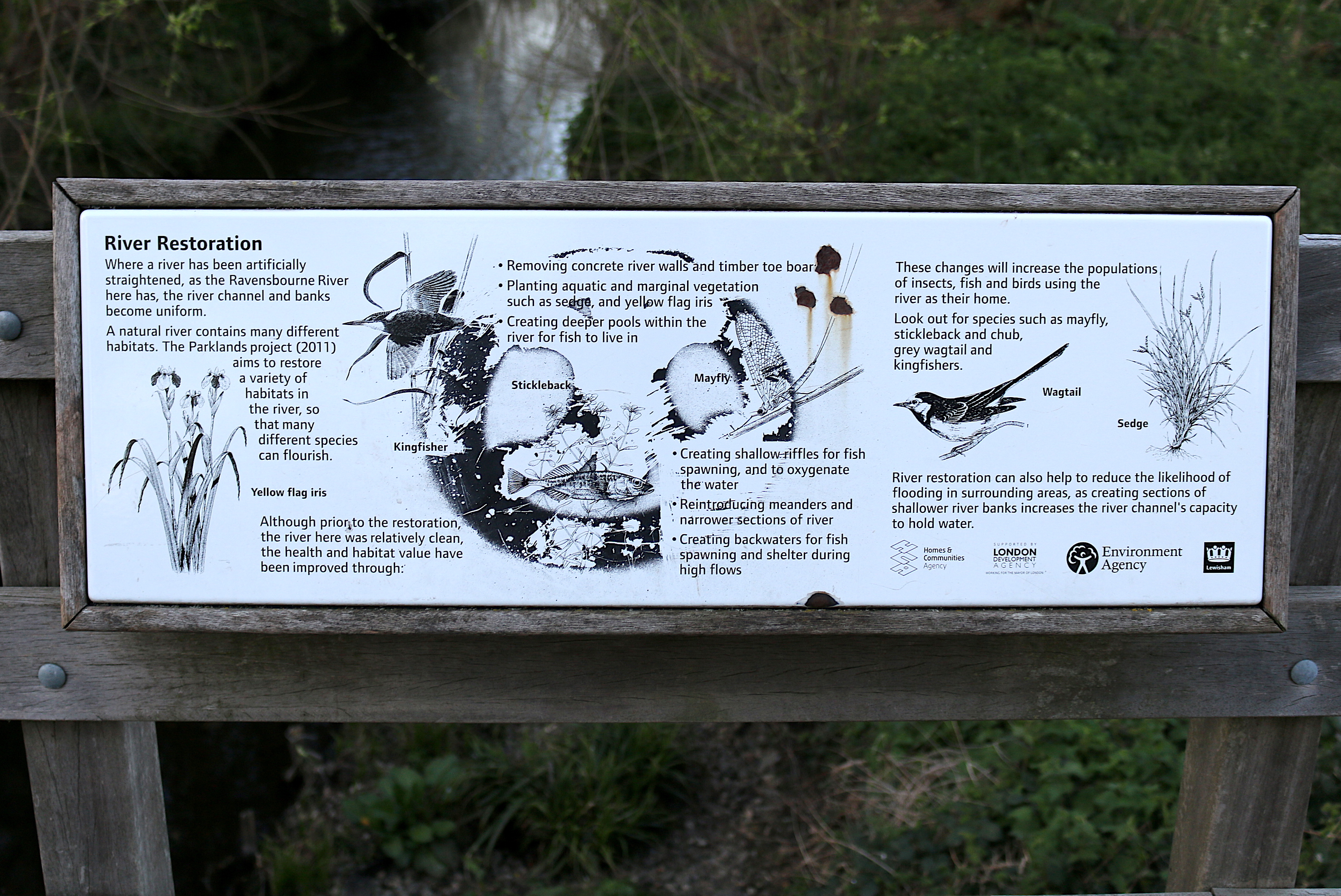
Sound – the first music in poetry – then the incantation of meanings rolls off the tongue urgently. Water from a spring, a perfect natural rustling tympanum, as a waterfall pours from a hidden earthy orifice – sous la Cascade des Aygalades. I was always thinking of the sea, not just to swim in it, to cool off but the strange sea grasses, the algae fronds that dance in the gentle tide and sometimes dancing in the wave whipped spume.
But evocation of beauty – other beauty – a proposition of taste, gout, without smell, a blind landscape – without touch, a still deadpan smile, feeling, the eros of walking – that is to love it, sometimes avidly, overwhelmed, otherwise tenderly, with careful pleasure, and sometimes forensically, as envious of the exquisite unique moment/place in the overlapping of senses that cannot be undone, as those rare but inspirational fragments of re-cognition. I rest my case… (that is a ridiculous Mandelstamism, too many verses, too many numbers, too much spirit) with concrete intoxication, do I care?
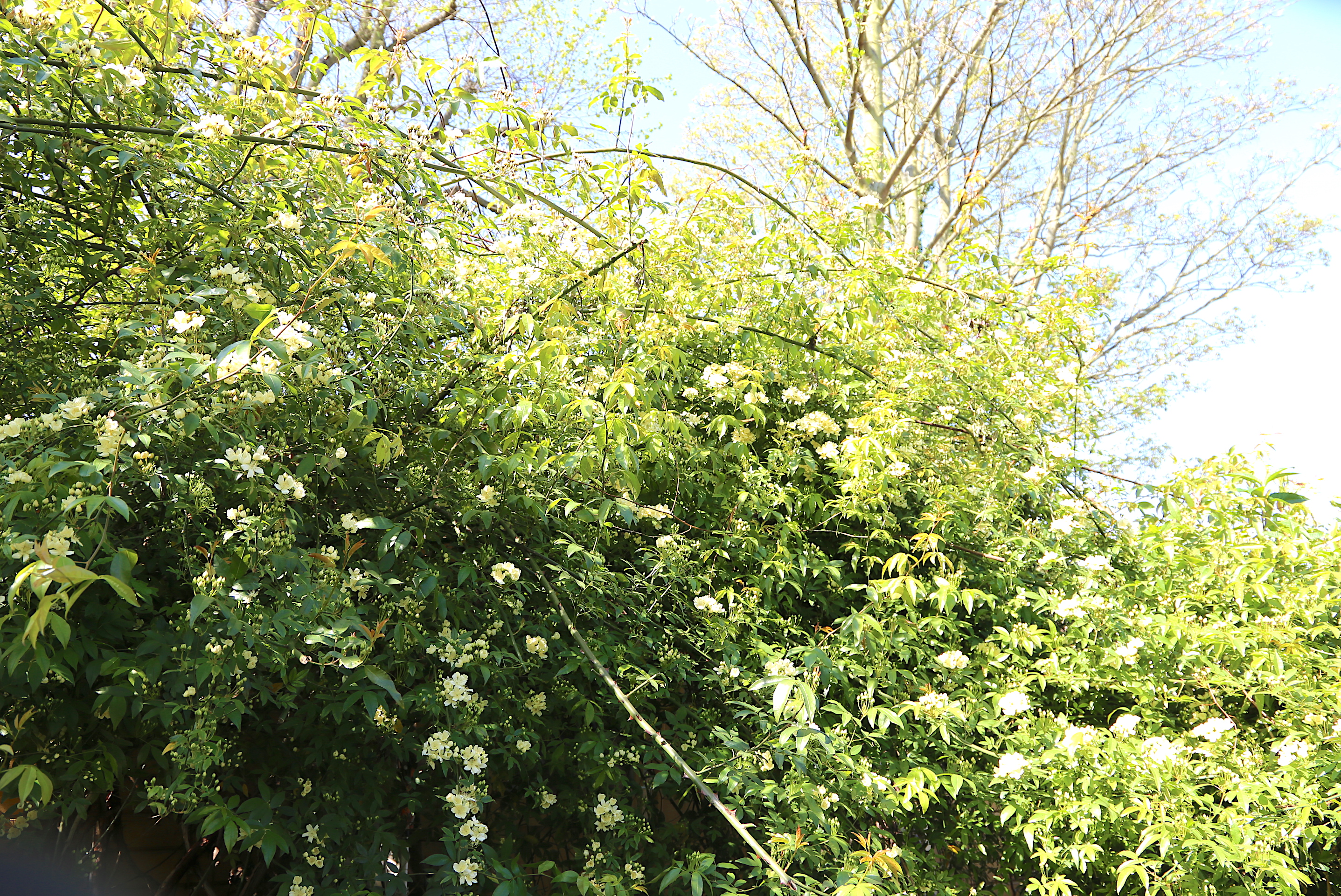
Himalayan Rose: the intoxication of place.
There is an extraordinary rambling rose in the back garden. It climbs the shed and trees with an alarming vigorousness – a hybrid cultivated from the Rosa brunonii – in early spring it is covered with clusters of fragrant white flowers that give off an intoxicating musky scent, more concetrated at dawn and dusk. This vigorous specimen is not only impressively scented, but also incredibly vicious, with its slender shoots armed with the most tenacious of barbs that tear at your flesh or clothes. In the last week, I have watched it unfurl and is now in full bloom, seated over five metres away, and it still sheds its sweet fragrance onto my skin. This display, brief and wild, over in less than three weeks, this grappling and mountaineering rose, a neo-native dog rose on acid, enrapturing intoxication:
Le rosier musqué de l’Himalaya (Rosa brunonii) est une espèce de rosier, proche de Rosa moschata, classée dans la section des Synstylae, originaire d’Afghanistan, du Bhoutan, de Chine (Sichuan, Tibet, Yunnan), du Myanmar, du Népal, du nord de l’Inde et du Pakistan. (Wikipedia)
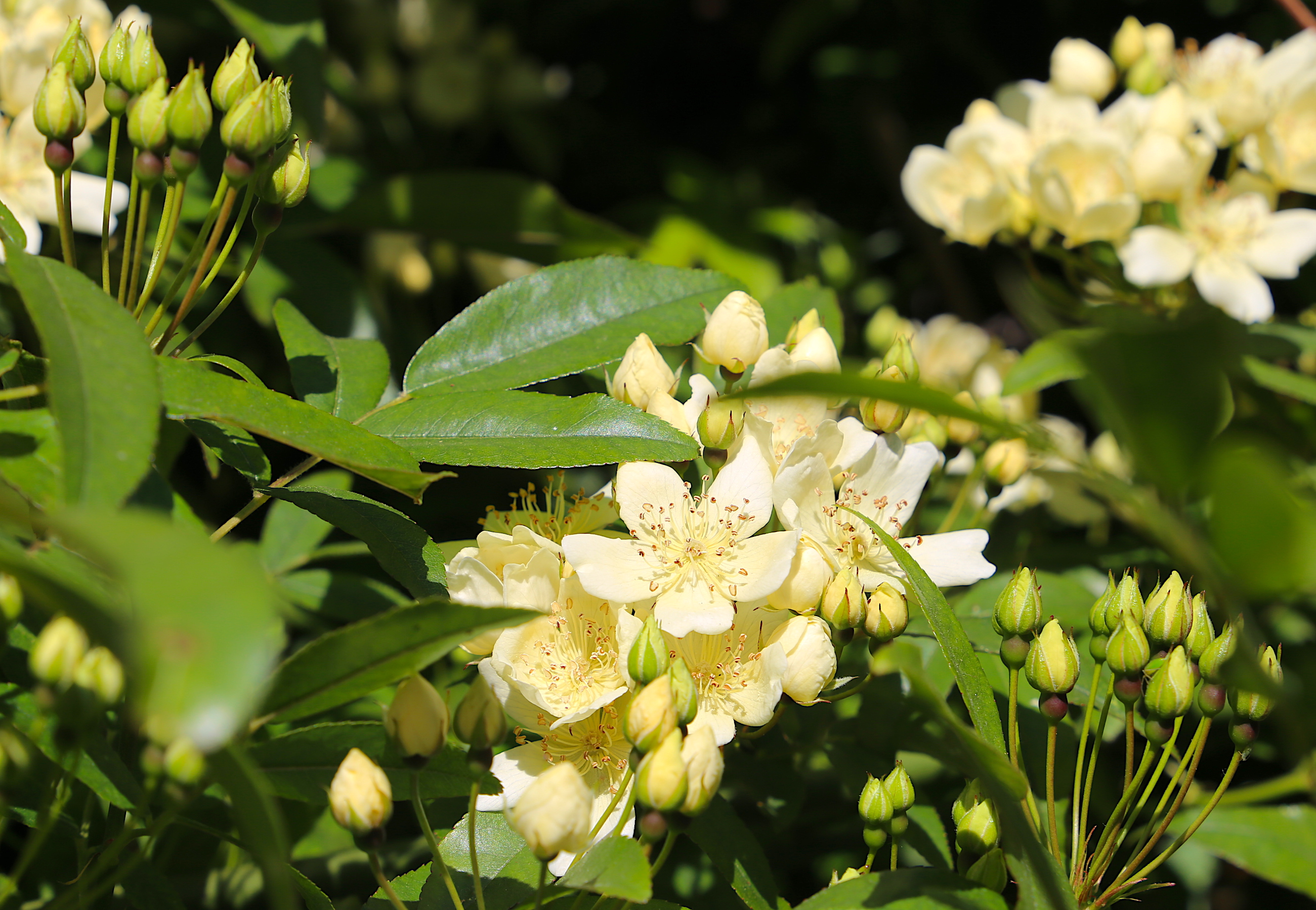
It is said that no true wild precursor of the musk rose or climbing tea-rose have ever been found, “though it is recorded in cultivation as least as far back as the 16th Century, indeed being mentioned in A Midsummer Night’s Dream (1595/96). It is important in cultivation as a parent to several groups of cultivated roses, notably the damask rose and the noisette group, and is valued for its scent ….’ (sic Wikepedia 14/04/2020)
Such specimens and woody shrubs, collected by colonial plant hunters now infiltrate our collective consciousness as part of that quintessentially English garden popularised by Vita Sackville-West, in a studied balance between a wild unkempt and the carefully propagated; roses intertwined with fruit trees, clambering amongst the branches, blossom, twig and flower interleafed as if in the wild.
It is probably true, not just a myth, that it was in the wood, in the packing-crates, and on the humid rootstock that other uninvited life was transported into the heart of Europe2. Lifeforms like the insatiable Serpula lacrymans and its tendril mycelium that so infected the landed aristocracy of North Europe at the end of the 19th Century. But is that just a dream alibi for the collapse of thousands of English stately homes, some foreign invasion, blinding obvious visions, “dry rot”:
Titania: “Oberon what visions have I seen I think I was enamoured of an ass. How come these things came to pass?” (Le Songe d’une nuit d’été -Midsummer Night’s Dream from libretto of Benjamin Britten’s opera).
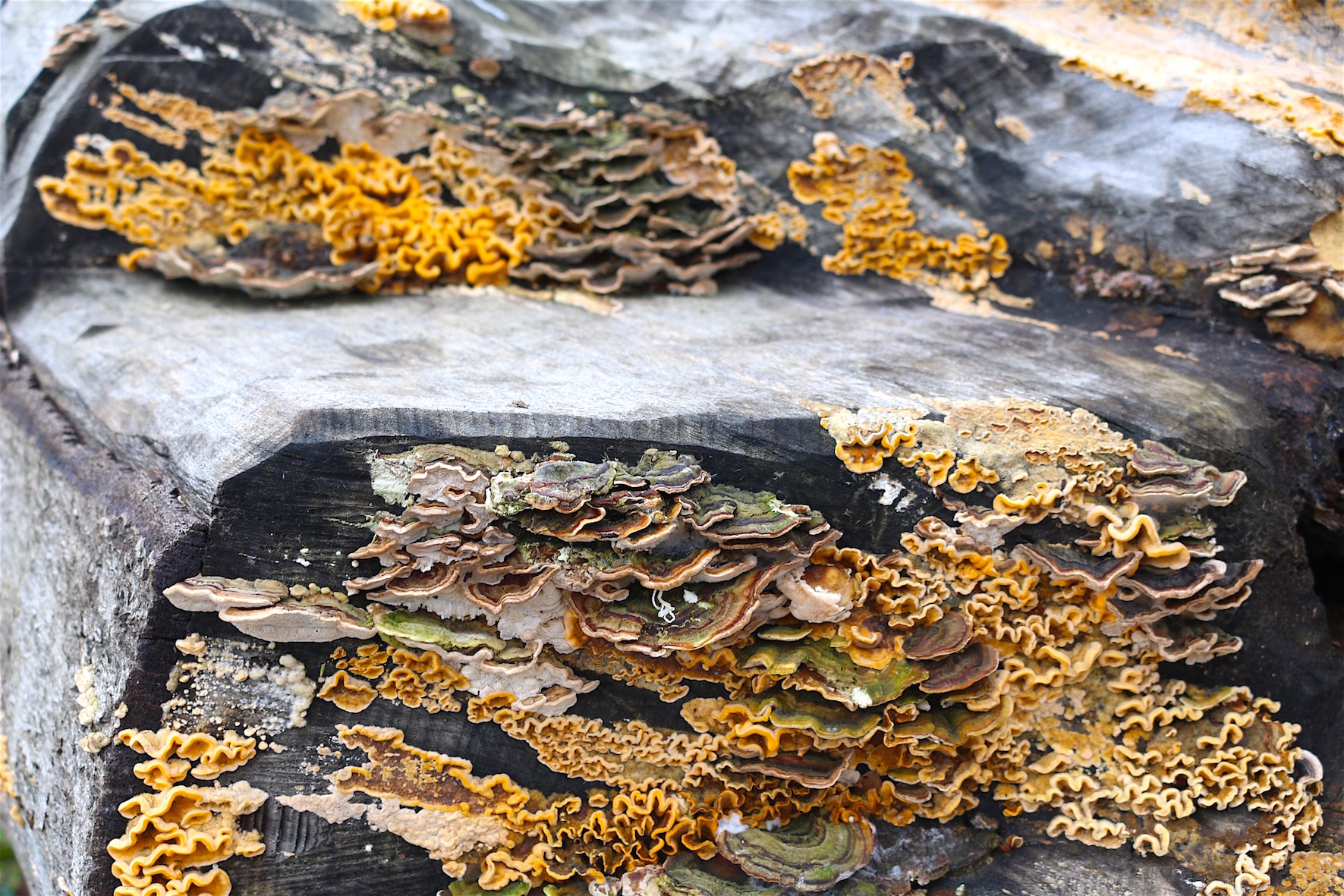
This dangerous metaphor of dry rot, the disease that ravaged stately homes? How The Cherry Orchard transposed from the rich Russian steppe takes hold of the English Gentleman’s imagination: ‘Dry rot (Serpula lacrymans) is a wood-destroying fungus that is found in most parts of the world. Although it affects forest timbers, dry rot is best known for its ability to destroy timbers in ships and buildings.’3
From this popular garden university, filled with rot, I share this composted found poetry:
Of white, fluffy ‘cottonwool’ mycelium here under humid conditions –
Tristes tropiques – ‘Teardrops’ develop on the growth,
they glow with fruiting bodies that are soft, fleshy crepes,
brackets with an orangey-ochrey surface,
This surface that has wide open pores.
Silky grey mushroom, a coloured skin
frequently tinged with patches of iridescent lilac and burnt yellow
proliferating under less humid conditions.
This ‘skin’ peeled like a mushroom, reveals
additional remedies & measures, this masonry sterilisation,
secret European societies… that contaminate the body
infiltrates the mind and infects the senses.
(adapted from https://www.safeguardeurope.com/applications/dry-rot)
If these were only fluid conclusions, tinged with on the ground research into London’s waterways then waylaid by outdoor thoughts – they herald the emergence/emergency of a truly European Open University4.
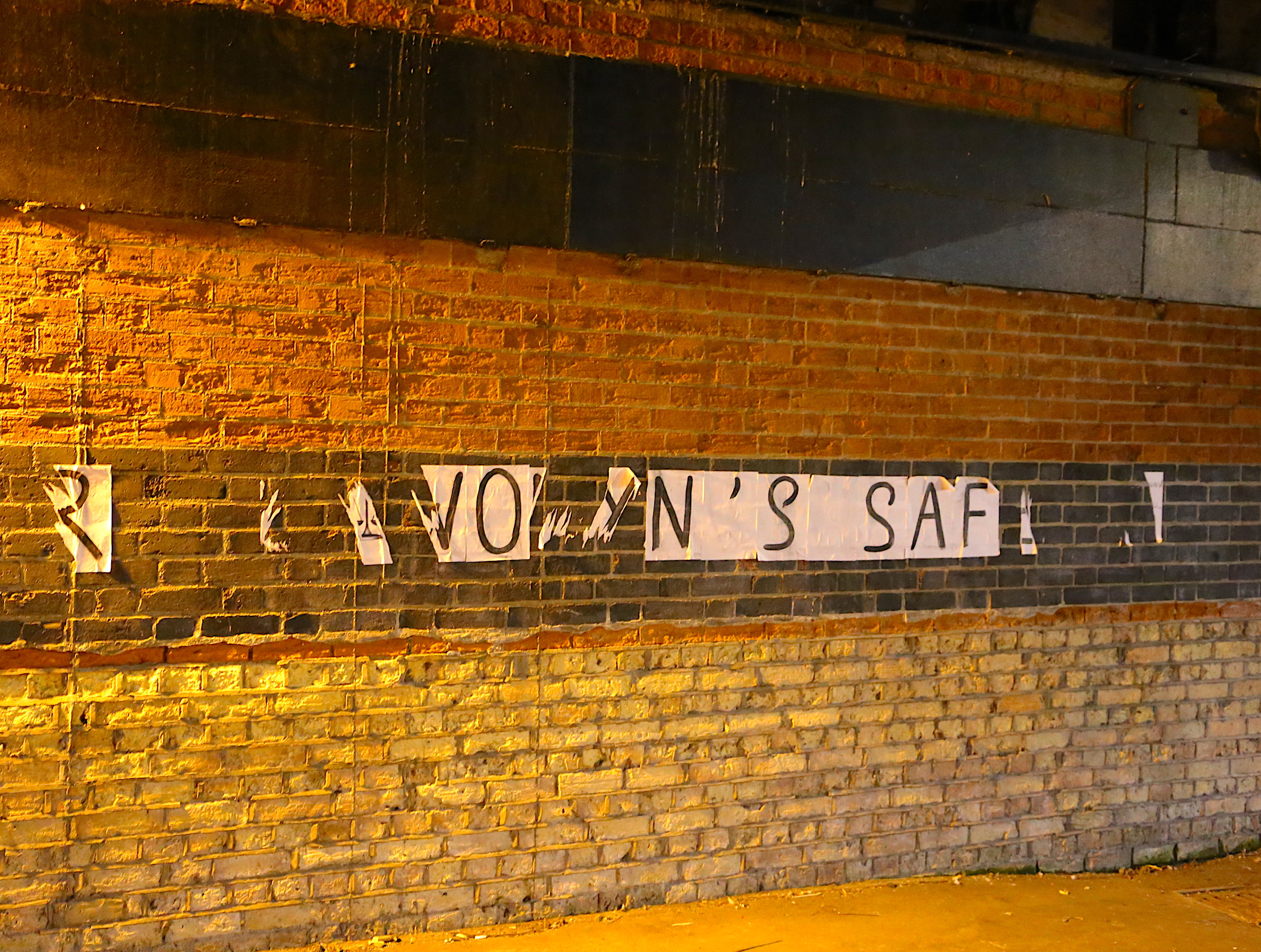
Extracted from Control of the Dry Rot Fungus in the Built Environment
‘Conclusions: S.lacrymans remains a fascinating and enigmatic organism. Its origins are still obscure: for example was it once widely distributed around the world with current climatic changes forcing it to survive only in very restricted areas, or was its ‘natural’ distribution always limited, and have man’s activities resulted in its introduction to the built environment within Europe? In addition, why is the organism so successful in the built environment? Is this due to lack of natural competitors or simply that a damp, badly maintained building in, for example, northern Europe offers a substitute environment for the forest floor in the Himalayan foothills. As more isolates of S.lacrymans become available, and more sophisticated techniques are applied to the study of their genomes, the answers to these questions should become available. Current evidence supports an emergence of the organism from its Himalayan home via the timber trade between India and the UK/ Europe, but the case is by no means proven as yet.’
(From The Domestic Dry Rot Fungus, Serpula lacrymans, its natural origins and biological control. John W. Palfreyman Dry Rot Research Group, University of Abertay, Scotland)
Fluid Conclusions:
There is no use admitting much of what I saw and mused upon, as I wandered along the Ravensbourne River is flawed: fluid conclusions, detours, playful decentering and a/musing. Nevertheless, we work against the broad narrative… for the indescribable, the fleeting and the unreproducible moment – so brief in its coming and going – life proceeds without interpretation, leaves little trace – but what memories?
In Paris (Spring, Autumn, Winter)
Starlit houses, and sky below,
Earth dazed in the nearness.
The same secret longing though
In Paris, so vast and joyous.
The evening boulevards noisy,
The last ray of light dies,
Couples, paired round me,
Fierce lips, insolent eyes.
I’m alone. It’s sweet to rest
My head on a chestnut tree.
As in far Moscow, my breast
Throbs to Rostand’s poetry.
Paris at night, painful strangeness,
Dear the heart’s ancient folly!
I’m going back to violets, sadness,
A portrait of someone kind to me.
There that gaze, pensive, a brother,
There that mild profile, on the wall.
Rostand, L’Aiglon that martyr,
And Sarah – in dream I find them all!
In Paris, so vast and joyous,
I dream of clouds and grass,
Laughter, shadows, ominous,
And the pain that will not pass. ….. Marina Tsvetayeva – Paris, June 1909.
It is passing, we must cherish our sense, and most of all our senses:
‘And it is in this light of the condition of our senses, our capacities (rather than those of another age), that the task of the critic must be assessed.
What is important now is to recover our senses. We must learn to see more, to hear more, to feel more.
…In place of a hermeneutics we need an erotics of art. (Susan Sontag, Against Interpretation: 13-14)
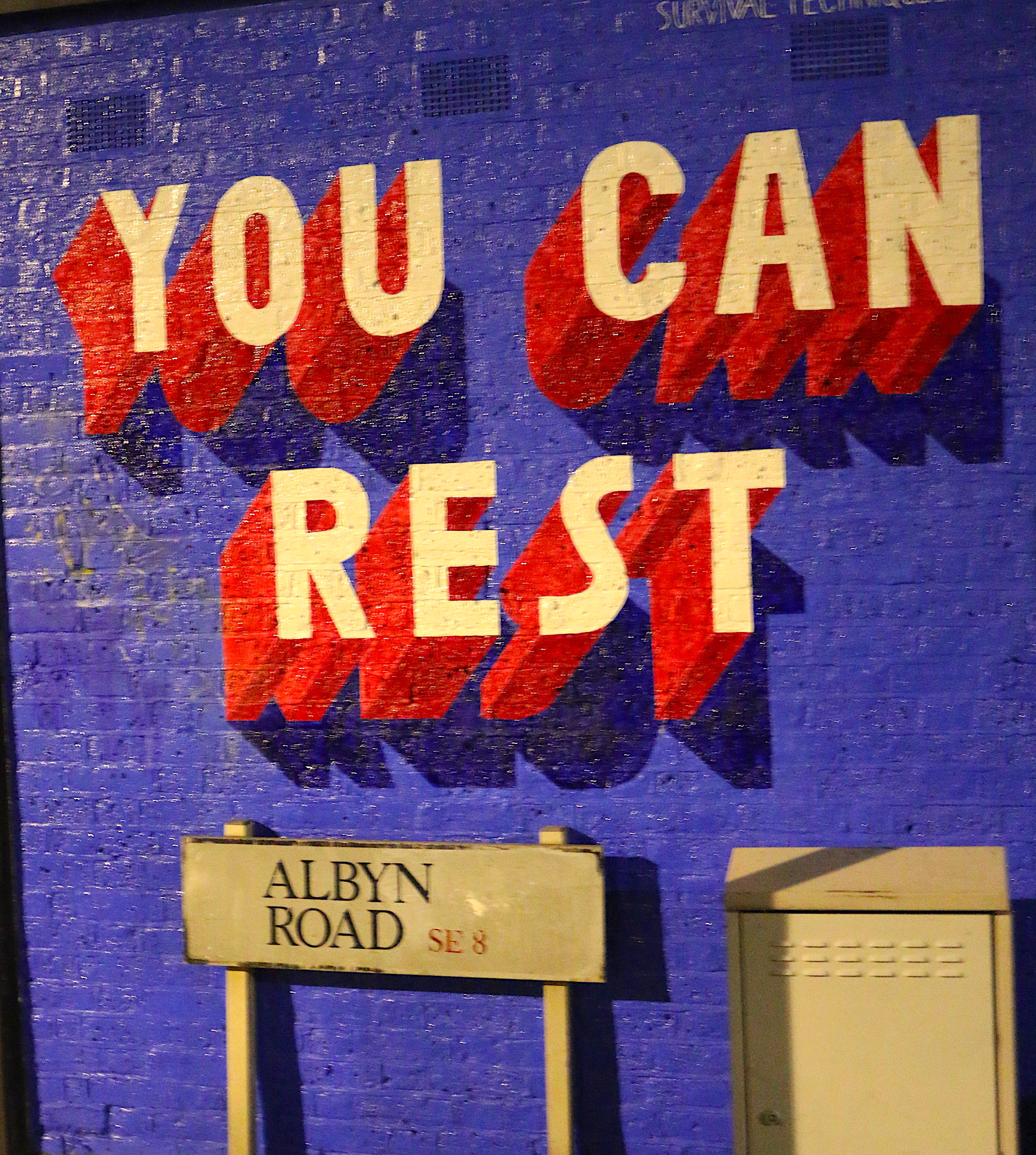
Postscript:
AUDIO: Late Dusk – Train time (9pm 05/04/2020) by Ravensbourne River walking back to Ladywell and Catford Bridge.
‘….hidden passions are now considered a source of illness. ‘He who desires but acts not, breeds pestilence,’ Blake wrote in: one of his defiant Proverbs of Hell.’ (Susan Sontag, 2002: 46)
Repetition is not just rehearsal for an other future – it is performing the future – experimenting until it bursts forth with all its force and contingent truth. Revealing something of my passions is not to overflow unnecessarily but to act from the interior, out into the world, where nothing inside is not profoundly and consistently affected by, or overruled by that world: “There is only a taking up of tools where they lie, where the very “taking up” is enabled by the tool lying there.” (Butler, Judith: 199). Tools of gesture, performativity, of the other lyric world of poetic realism – all these I share with you: gestures of attention and rediscovery that lead to renewal in other ways of doing/thinking apart, but together.
An enthusiasm or forensic attention to life between buildings – perhaps more between the life between occupants – less abstract and more experiential, outside. And not just in thinking how it is done – observing – but how should it, or could it be done by experimenting. In this the politics and the aesthetics is less artistic and more theatrical – but that comes down to a struggle with everyday beauty – what is valued for its intrinsic beauty and what for its extraneous values of communion, discussion, in genuine attempts to share and make together. The sealed end-product of visual art is prised open in an exposition of process and by a love of open-ended performance.

The theatrical – that suspect ‘diminished’ art form – somewhere between playing and pretending offers the best opportunity to work together, prepare, rehearse, perform and in so acting, improvise life from the opportunities, resources, materials and emotions present. And it is always emotion that wins out, in the affect machine of theatre. Collapsing these categories, and making the artificial just become the real is not an entirely predictable art but it has the advantage of offering an experiment that allows for fluidity and emotional flaws.
“Life between buildings offers an opportunity to be with others in a relaxed and understanding way…One is not necessarily with a specific person, but one is, nevertheless, with others… As opposed to be a passive observer of other people’s experiences … in public space the individual himself is present, participating in a modest way, but most definitely participating.
Low-intensity contact is also a situation from which other forms of contact can grow. It is a medium for the unpredictable, the spontaneous, the unplanned.” (Van Gehl: 17-19)
Encouraging the unpredictable, being aware of the unintended, the interruptive, the transformative… So as not to succumb to sloppy sentimental thinking, or reach out for fear as response, but to fight and resist, building from the experiences, the scars and the deep transformations, to re-engage with a world out of step with itself, I made this walk with you, Guides des Bureaux. The river now a steady stream, can rage and surge with stormy outbursts, overflowing boundaries and creating new gulleys and other pathways or it might almost disappear to nothing, without rain to feed the flow. Yet walking to ‘gether’ we are changed for ever. I am sick of this diseased virtual, only the cantankerous real will do:
I know the truth! Renounce all others!
There’s no need for anyone to fight.
For what? – Poets, generals, lovers?
Look: it’s evening, look: almost night.
Ah, the wind drops, earth is wet with dew,
Ah, the snow will freeze the stars that move.
And soon, under the earth, we’ll sleep too,
Who never would let each other sleep above.
3rd October 1915 (Marina Tsvetayeva)
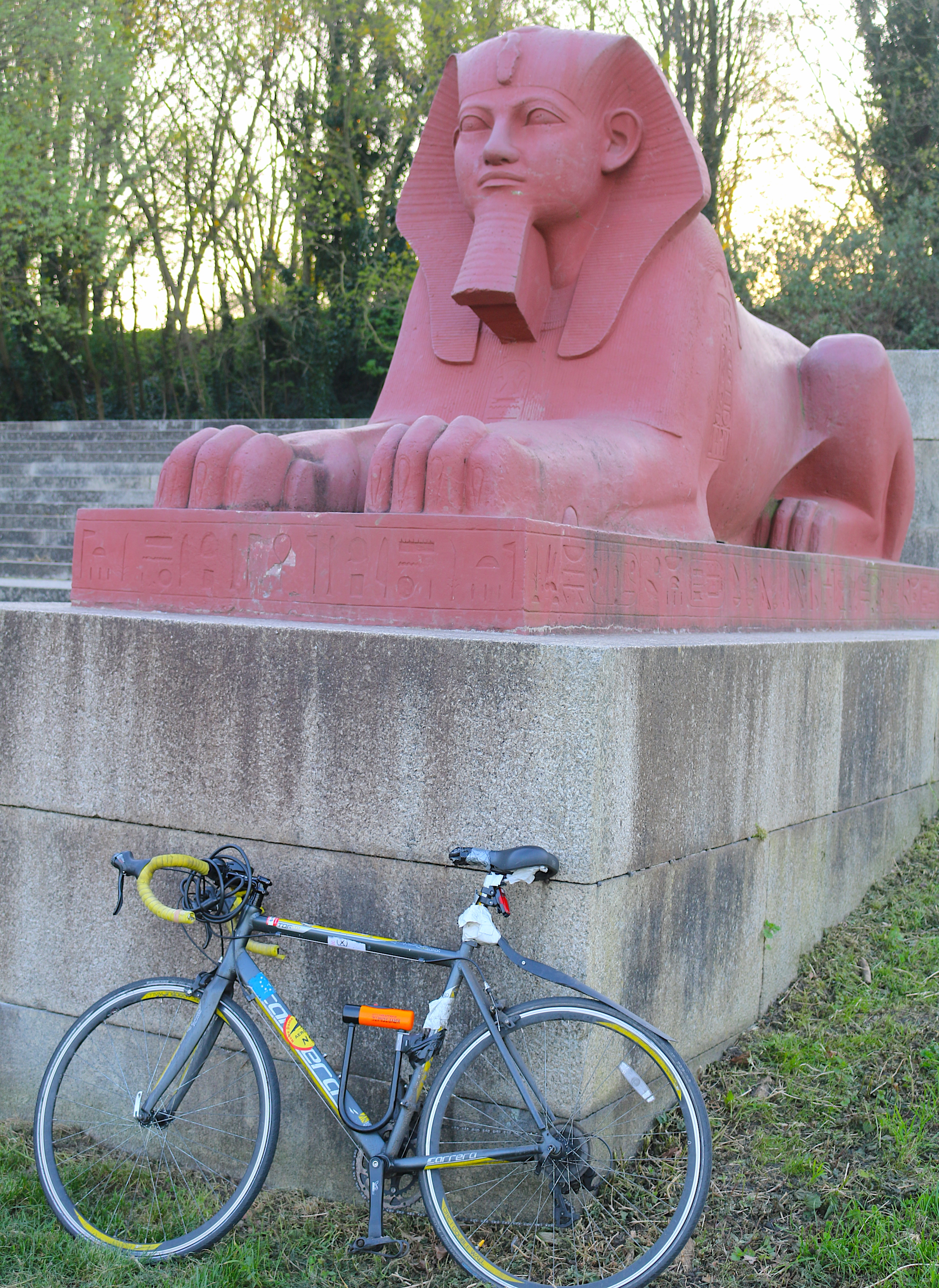
1 It rises at Caesar’s Well in Keston just shy of Downe (near Darwin House), 4 miles south of Bromley town centre and then flows through Lewisham and Greenwich to the River Thames at Deptford “where its 1/2 mile muddy tidal reach is known as Deptford Creek.”
2 ‘Sifting the truth from mythology becomes easier if we remember that dry rot is produced by a fungus that originated in logs on the forest floor – in the Himalayas, the Rocky Mountains or perhaps in central Europe… [they thrive on] because building materials provide a good source of calcium and iron.’ (In materials and skills for building conservation – ed Michael Forsyth 2008, Wiley and sons)
3 ‘It is important to identify whether timber decay has been caused by dry rot or another wood-destroying fungus such as one of the wet rots. This is because dry rot has the ability to travel through building materials other than timber, giving outbreaks the potential to spread quickly through a building. For this reason, additional measures (e.g. masonry sterilisation) often have to be taken when treating dry rot outbreaks over and above those necessary when dealing with outbreaks of other wood-rotting fungi.’ (https://www.safeguardeurope.com/applications/dry-rot)
4 « Les chemins de l’eau » par Paul-Hervé Lavessière – Sur le GR2013, des marches mensuelles seront ainsi proposées par Nicolas Mémain et le collectif SAFI, et dans la métropole toulonnaise, par Paul-Hervé Lavessière, en vue de la construction d’un Sentier Métropolitain du Grand Toulon. Pendant 5 ans, ces trois guides, vont élaborer, une petite université populaire d’écologie métropolitaine – une « mission de service public pour penser, marcher, transmettre ». Les monographies des rivières – Fleuves côtiers, canaux, bassins… les infrastructures bleues sont la base des infrastructures vertes, et donc des éléments structurants de la métropole. Elles permettent d’approfondir des milieux spécifiques, dans plusieurs communes et également d’apprécier divers modes d’aménagement et de gestion. Conférences sauvages – Écouter les histoires d’un ruisseau- Série de points de vue pour entendre parler du territoire de l’eau. Voix d’eau est un cycle de conférences sous la Cascade des Aygalades. Au fil des rencontres, il propose une série de points de vue pour entendre parler du territoire de l’eau et plus particulièrement du devenir du Ruisseau des Aygalades.
Bibliography:
Akhmatova, Anna (1983) Poems – Selected and Translated L. Coffin, WW. Norton & Company
Blake, William (1988) Oxford Authors – Collected Works ed. M. Mason, Oxford University Press
Breton, Christine et Mioche, Philippe (2011) le livre du ruisseau, Editions Commune (17 novembre 2011) from Récits d’hospitalité
Breton, Christine (2011) La ville perchee, Editions Commune – Récits d’hospitalité
Buckmaster, Ceridwen (2013) Street Food: Urban foraging and world food. Invisible Press
Butler, Judith (2007) Gender Trouble, Routledge Classics
Le Cercle des Marcheurs (2012) GR2013 Marseille-Provence: Sentier metropolitan autour de la mer de Berre et du massif de l’Etoile.EditionsWildproject & FF Randonnee
Gardet, Claude (2009) Secrets & Remedies of the Herbs of Provence, illustrations by Dominique Mansion (Editions Ouest-France 2009)
Gehl, Jan (2011) Life Between Buildings: Using Public Space, trans. J. Koch, Island Press
Lobel, Brian (2019) Theatre & Cancer, Red Globe Press
Mandelstam, Osip (1989) The Eyesight of Wasps – Poems Translated by James Greene, Angel Books
Mandelstam, Osip (1988) The Noise of Time. Translated and introduction C.Brown, Quartet Books
Mandelstam, Osip (2011) Journey to Armenia. Trans. S. Monas, Notting Hill Editions
McKane, Richard (1985) The Shalford Book of 20th Century Russian Poetry, Kozmik Press
Sontag, Susan (2009) Under the Sign of Saturn. Penguin Modern Classics
Sontag, Susan (2002) Against Interpretation and other Essays. Penguin Modern Classics
Sontag, Susan (2002) Illness as Metaphor & Aids and its Metaphors. Penguin Modern Classics
Tsvetaeva, Marina (1983) A Captive Spirit: Selected Prose. Ed. & trans J. Marin King, Virago Press
Tsvetaeva, Marina 24 Poems, Translated by A Kline https://www.poetryintranslation.com/PITBR/Russian/Tsvetaeva.php
From V. The French (Journey to Armenia)
Now I stretched out my vision and sank my eye into the wide goblet of the sea, so that every mote and tear should come to the surface. I stretched out my vison like a kid glove, stretched it onto a shoe tree, onto the blue neighbourhood of the sea…
Quickly, rapaciously, with feudal fury, I inspected the domains of my view. One puts the eye like that into a wide goblet full to the brim so the mote will come out. And I began to understand what the obligator nature of colour is – the excitement of sky blue and orange football shirts – and that colour is nothing other than a sense of the start of a race, a sense tinged by distance and locked into its size…
With its extremely subtle acidic reactions, the eye, an organ possessed of hearing, which intensifies the value of the image, which multiplies its accomplishments by its sensual insults (which it fusses over like a child with a new toy), raises the picture to its own level; for painting is much more a matter of internal secretion than of apperception, that is, of external perceiving. (Mandelstam 1988: 211-13)
Week 2. Walking with the Other: Like Shadows and Ghosts, the Urban Foxes’ of South London
“…sleeping on the roadside with their human brethren, these streets dogs are more laid back and yet more wary than any out of town dog. Sharing the streets with a constant flow of strangers and with a population of street people, is more intense, more demanding but with certain opportune recompenses. And those ears, pricking, flexed, muscled, limp, constantly twitching with anticipation and with all their individual micro expression. Each Dog, welcoming, with their own way of cocking their head and saying hello.” (Street News from Kolkata)
It’s getting used to the silence, or what we take for it, in a city like London, a sudden lack of traffic, silence in the skies, no pubs, restaurants, places of meeting open late at night, just the occasional roar, and that blast of searchlamps from the empty night buses chasing shadows across the sleeping streets. I have left my front door, just like this, many times before, to step out into the evening and take in the stilled air. The city is a different place now, surrounded and teeming with an otherness that will not be tamed. But tonight, it is colder again, like winter has returned and I sense that the foxes I have been following over the past nights, would be less active. No takeaway bags and leftovers at the Two Sisters Indian, the shy individual I spied there has evaporated into the orange sodium mist.
They, and the other nocturnal fauna living alongside us, are the others I walk with now at night and I will make my way with them and around them, as I climb alone over Nunhead Hill and drop down toward Brockley Station. Carrying a camera to capture something of this hidden activity; I walk steadily, becoming comfortable to hearing only ones’ footfall, the sound of your breathing – air chilled – circulates in your chest. Footpads, cat burglars, stalkers, hunters of the night will catch their breath like this, but I am on the lookout for the solitary, on the prowl, fox or vixen, the occasional couple.
The streets marvellously quiet have taken on a hyper real quality as if you are walking through a vast film lot suddenly abandoned by the cast and crew. It’s not true though, this sur-real. The spectacle was only ever temporary. For now, we are entering the realm of padded feet with softened concealed claws, eye to eye, what does this vixen see? Her ears and nose alerted to the onlooker, she wears a nonchalant but wary gaze. These Vulpes are not street dogs used to interacting and serving their masters but animals surviving on their terms, across all manner of terrain. They are wild, that is, other. We will not be patting them or feeding them biscuits from the hand. These scavengers, omnivorous savage skippers have become the ‘dumpster diving’ masters of inner and outer London. They have no regard to law or custom, to the niceties of recycling and trash disposal. They hold to another regime – more Skipping, practising their creative use of human detritus. Every morning you can see the evidence of their crafted uses of our squandering – ripped bin bags, their innards sprayed across the streets – are the forensic bone and carcass of consumerism. They regurgitate the city’s waste in a night time of archaeological dismembering. In the lockdown city, humans trapped inside, will there be less discarded food waste for them to gorge on?
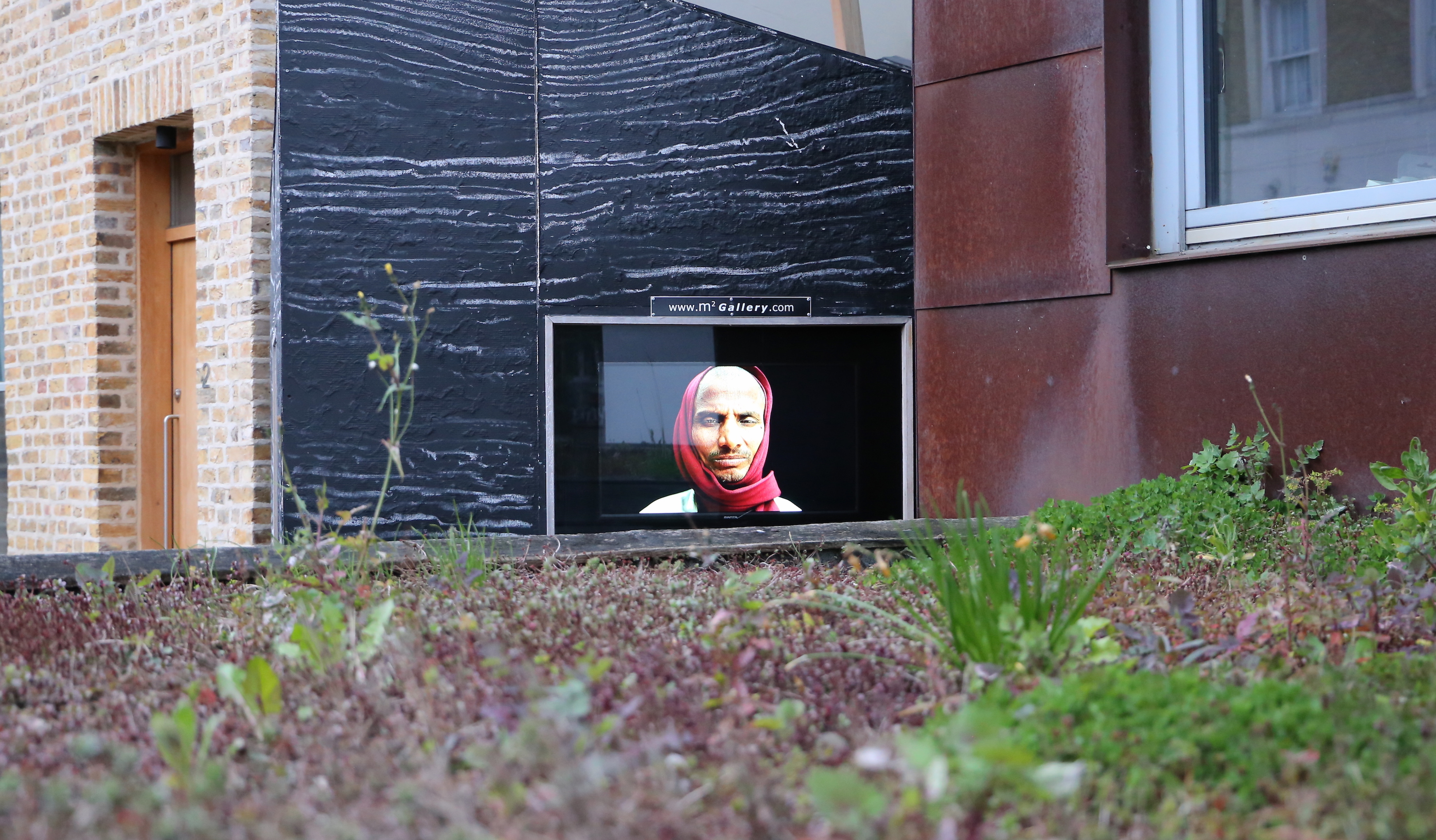 M2 Gallery – Still showing work to passing creatures. “Giving Back to the Streets”
M2 Gallery – Still showing work to passing creatures. “Giving Back to the Streets”
When working in Marseille I was surprised to see so many people going through the bins, sometimes with trolleys, carts and filled bags, collecting and sifting a life out of others waste. Common in other parts of the world but in the wealthy heart of Europe? In France, the laws established by the Revolution allow for the right of gleaning – active use of excess produce – even in open fields and on private property collecting food that would otherwise rot is seen as a legal right, but in the Anglo-Saxon culture such frugality is usually treated as property theft. In step with the nocturnal fox we can see the world turned sideways, the world of the homeless, squeezed between buildings, in the hidden passageways, in between, tunnelled into and camped out in overlooked corridors. Somehow, they make their way alongside the ever-turning indifferent city. Of course, this gleaning is going on here but it’s not something you witness so brazenly – it is definitely not encouraged – but like the ‘sly’ fox waiting for night to contribute to the city’s eco-system, skippers play their unique role in exposing the other daylight robbery of inequity, inequality and waste. Normally, foxes only really appear around dusk, slipping through their territories with a nonchalant ease, in search of daily food to be eaten or cached. So near to the vernal equinox they have as much time by night to enjoy, as day to relax and sleep. In the summer, it becomes more frantic, they can be found prowling around in daylight looking for a free meal, competing with seagulls, pigeons and rats.

This restless research – night into day – going out into the darkened streets to escape into wholly other world, as if I am in a dreamscape, the unconscious ripped through the surface of the everyday. I wander, with light companionable steps, following these night prowlers, drawn into their trails, down and out of back alleys, round corners, into estates I did not know with all their intricate hidden desire lines laid out across the common parts. Like the Street Dogs in India we are in the presence of animals living on the margins of human civilisation, adapted, comfortable; able to create effective temporary structures in which to survive and thrive – half in or on and half out of our self-centred anthropocentric world. And how we are taken out of selves when we see them, stopping to observe; that way of being arrested by the stranger, face to face we feel something, some thread and kinship. Half animal/half companion and nevertheless we are only ever able to glimpse this other consciousness in a reverie of acute observation.
Following, street dogs in North India I was privileged to see how:
“…the Dogs evolved but without the regime of strict domestication, closer to Coyote and Wild Dog cousins, these village street dogs that litter North India have their own way of living in the complex hierarchy of modern Indian Society. They are the true heirs of the Cynics, eating, sleeping and copulating as and when they see fit, adapting easily to the situations they find themselves in.” (The Cynics of Rajasthan, 2018)
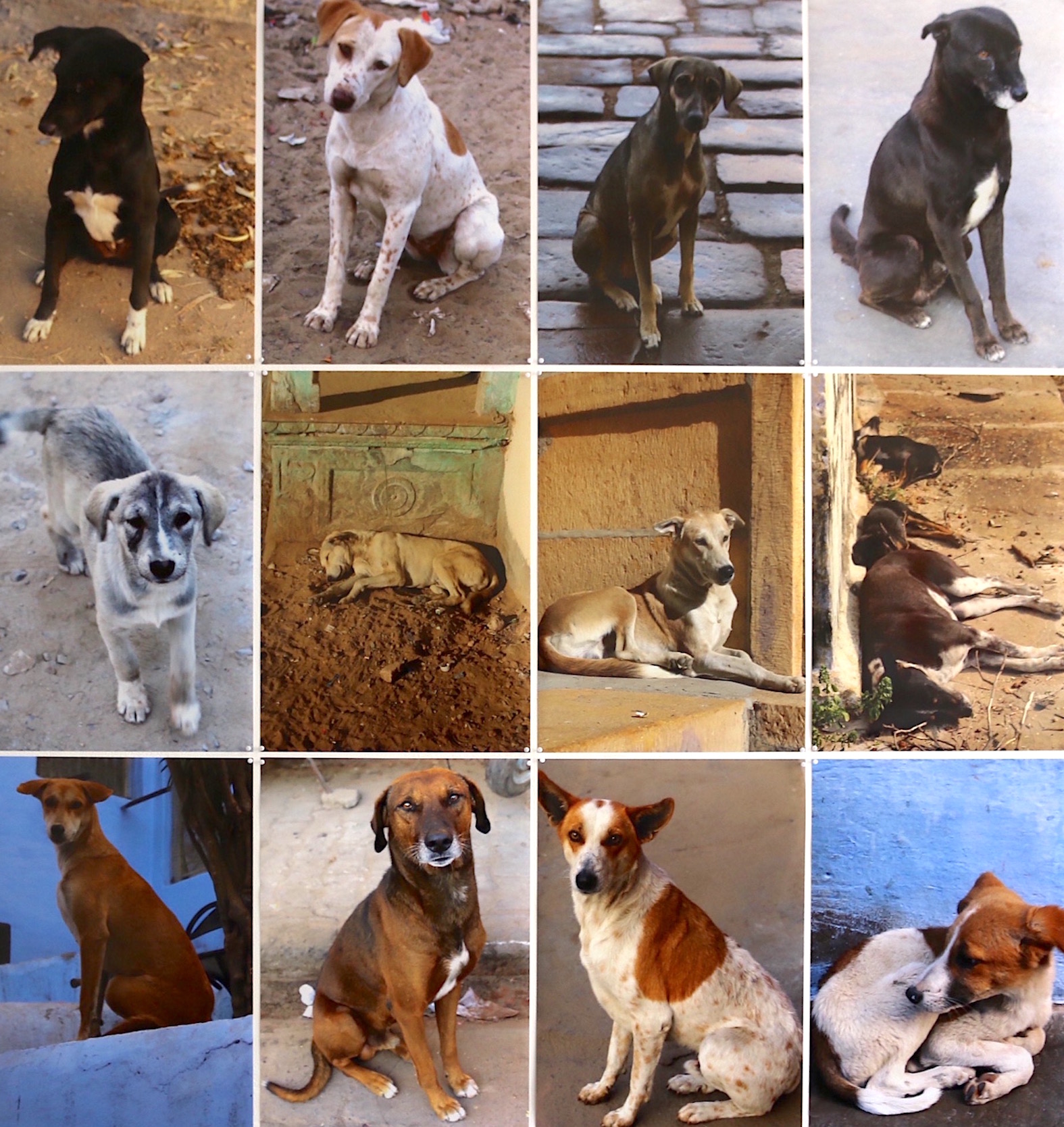
The fog of human life – the typhos the Cynics fought against, in all its unnecessary artificiality – lifts, and in night calm you begin to see the city in another light. Lucid, with a spring in the step, you can practice eudaimonia and sharpen your mind with revitalised lucidity (atyfia). Light is a factor at night in so many ways. From entering streets and passing one Borough or housing estate into another, the quality of lighting alters dramatically. It is partly the eye and partially the way the camera processes the intensity and colour saturations. As I enter Hilly Fields the light drops dramatically and you enter a night scape without street lighting. From East to West and North to South, swivelling, you can see stripes and layers of illumination. In the near foreground, on the edge of the common, terraces lit up with lamps, then a grey darkness; again, in the far distance, silhouetted on the horizon a string of red lights, the tops of skyscrapers and the cranes used to construct them pinpointed by warning lights.
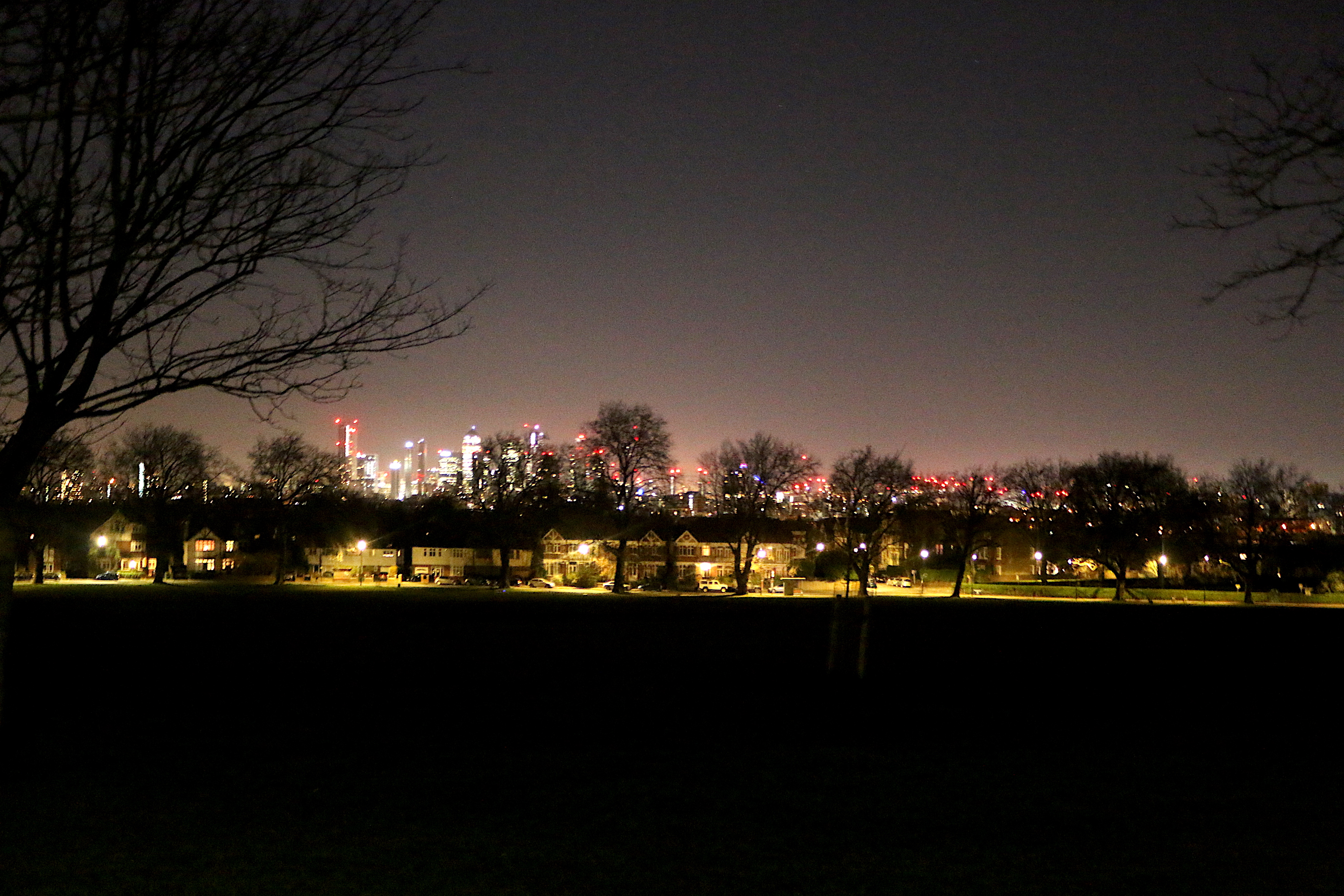
Light pollution is still prevalent in lockdown and I wonder how it might be to be here with all the lighting turned down or even switched off. Just as the skies are almost completely free of the noise pollution of air jets, why not free the night sky from its pall of pale luminescence. On a moonlit night, the human eye becomes accustomed to seeing and sensing just as the fox. Unfortunately, we do not have the same acute night vision as the cat-like fox.
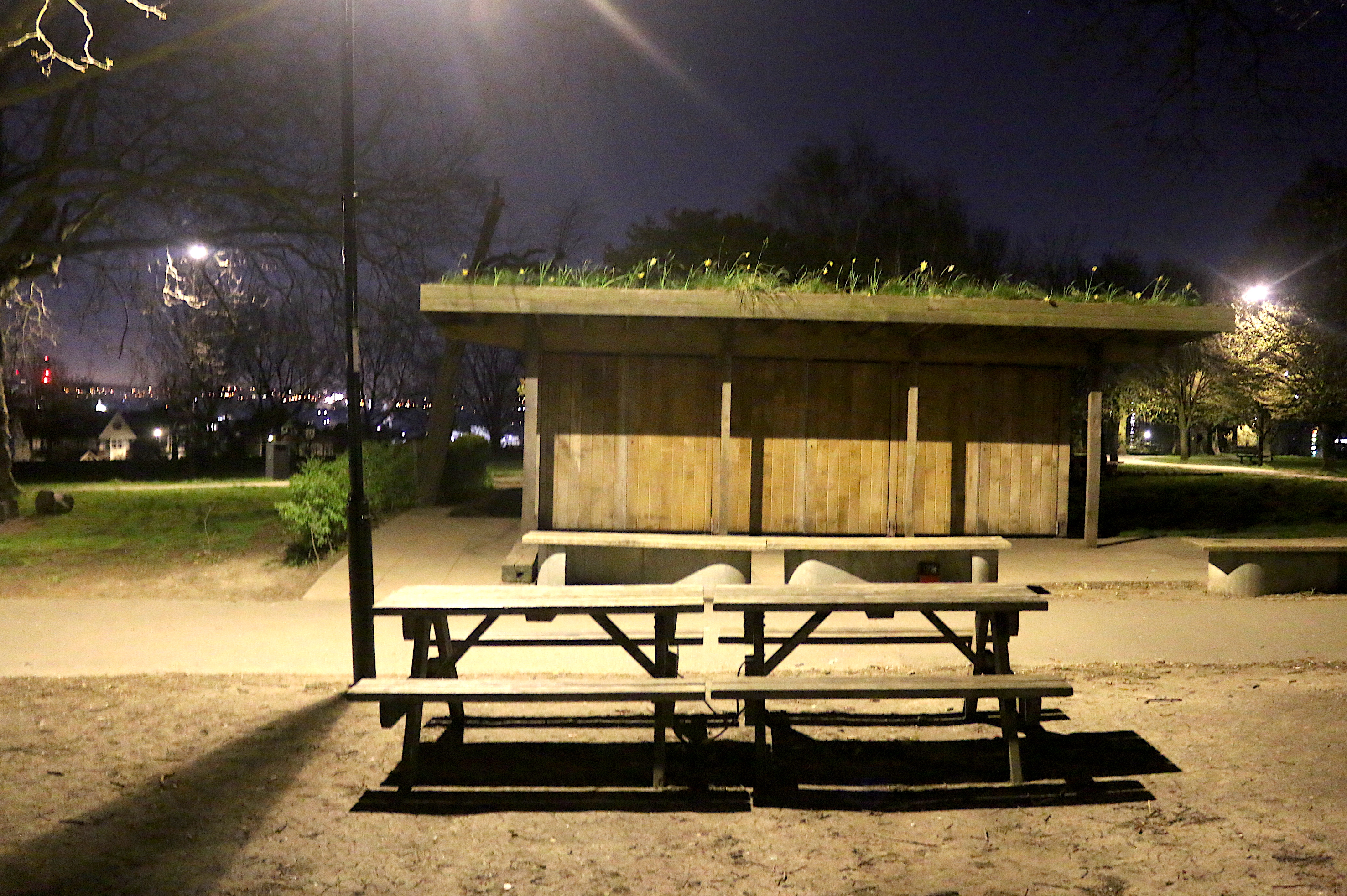
On Hilly Fields the inspiral trail falls toward Lewisham, to the gentle cut made by the Ravensbourne River. As I cross the fields, pass the café shed, I see a single fox gliding across the grass. Too dark to film but I stay stock still, watching. It stops, it must have my scent, turning its head quickly, freezing. He/she has seen me and darts quickly away in to the scrubby copse. Foxes can run at over 45 miles per hour, springing and jumping, as agile as any feline. But unlike the cat they are monogamous, and here, just behind, cantering across the turf comes his/her partner. Working together, they look out for each other, backing up and calibrating danger, dissolving into the darkness, they can disappear in an instant:
“an adult fox can get through a hole 10 cm square, and scale a 2 metre high wall or fence with comparative ease.” (Birmingham & Black Country Wildlife Trust)
In the urban forest, it is less other predators or lack of food, but disease, unexpected encounters with traffic or dogs that cause most grievous injury or even mortality. The myths and prejudice against the urban fox as a threat: hunting in packs, attacking people and killing indiscriminately, has a long tradition – the cunning fox as scapegoat[i]. It was headline news in London – on a hot June night in 2010 a fox had apparently attacked two children in a house by Victoria Park. This article – Invasion of Urban Foxes – written for the Guardian gives a fair idea of the panic and hysteria attending such rare encounters. Foxes though curious and cheeky are not ordinarily aggressive in this way, only defending themselves if cornered, whereas dogs bred for their aggressive fighting behaviour can turn on anyone or anything without warning. There is something of the human in domesticated dog behaviour that a wild ‘dog’ like the vulpes vulpes, shy, cautious, opportunists never display. Nevertheless, or precisely because of their ‘nature’ they remain convenient scapegoats for our more destructive aggressions.

Here near Elverson Road I turn back toward home. I am returning along the side roads towards Brockley Cross. Who else is out at the is hour. I have seen no rats or other rodents, the occasional cat, straying onto the emptied streets. It’s only then that I disturb an old fox lurking under a car perhaps with some prize morsel – the fox’s eyes fixed on me with a wizened look; two foxes together, one territory. We back away from each other, slowly, slipping away from each other. This practice of walking with strangers or walking in order to encounter strangers has very little to do with urban flaneurie, a particular night walking, in the pleasure of encountering the nocturnal city bustle, illuminated by glistening artificial light. No, it is a kind of shadow walking, on the edge of human vision, outside the curfew:
“The city at night in the seventeenth and eighteenth centuries became flamboyant. In Europe’s main thoroughfares, the demise of the curfew was dramatically confirmed. During a visit to London in 1786,…, the German novelist Sophie von La Roche – positively marvelled at the sight of the ‘eternal stream of coaches; and the mass of people processing along Oxford Street at 11 pm.” (Beaumont, Matthew 2016: 119)
In the easy fog of night – one now most make the best of a curfew – out of this miasma the question becomes how much one should collaborate or openly resist current strictures, or to balance one’s response somewhere in the in-between. In Donna Haraway’s philosophy of animal companionship the need for mutual interaction is counter-balanced with the desire to overcome the strangeness of our relationships with animal otherness through acts of enthusiasm and over-exuberant coupling, but without anthropocentrism – echoing with deep ecology or deep listening. When we enter this web, there is nothing that is not possible, nothing too outlandish or preposterous. From the melancholic vista of anthropocentric extinctions comes a vision of cross-species fertilisations and parasitic graftings. (John Russell – SQRRL text & film). How then to take account of this radical thinking in the real? Intervention and perambulatory discourse? How to make our steps light enough to make some real difference, and yet to leave no unnecessary mark or impress.
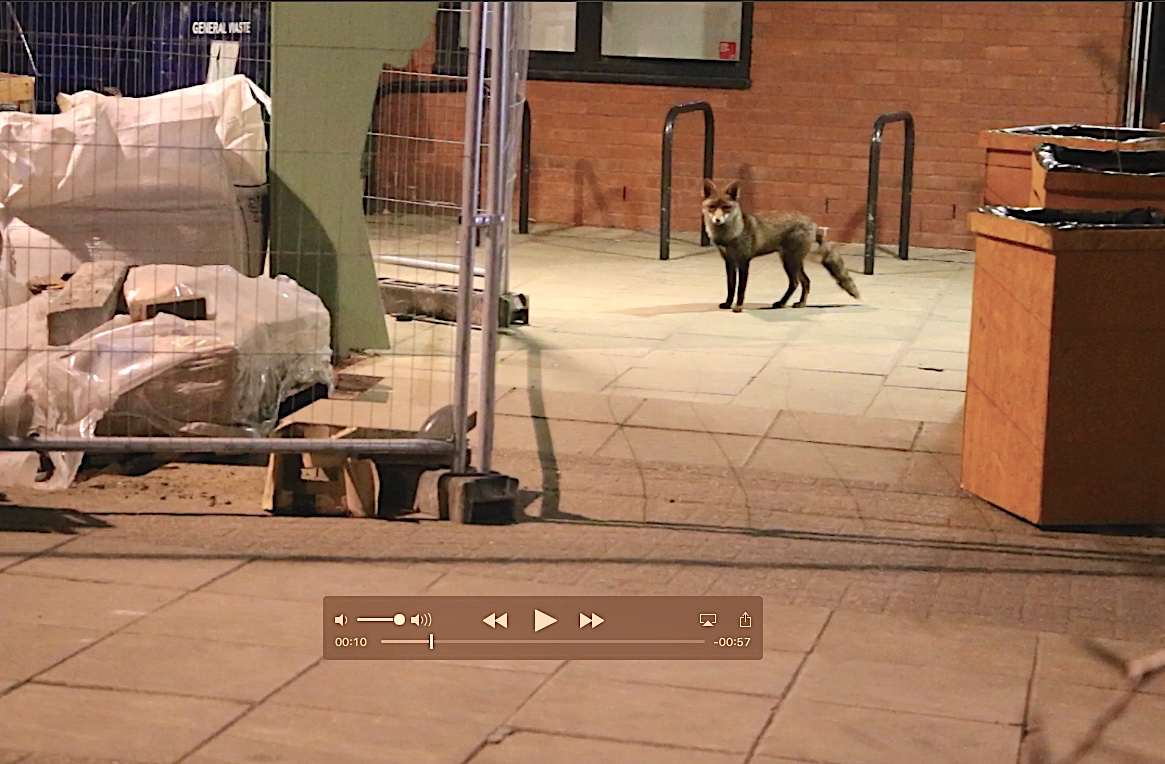 Film Still: of Fox skipping at building site ‘General Waste’.
Film Still: of Fox skipping at building site ‘General Waste’.
I have noticed a particular dancing move that all the foxes seem to make in our encounters – as they stare at you, fixed in wary concentration, they suddenly turn their bodies 180 degrees; then pausing backs turned for an instant, swivel their heads 180 degrees with eyes fixed directly back toward me. Then they retreat, and sometimes do this manoeuvre again and again, until they slip away out of sight. This must be some signal they use to say – backing off peacefully on my terms – and it is a lovely technique, of feinting to go and then checking back on what you are doing. It’s very like the movements of a human attempting to steal up on someone, or another animal, that rapid movement then stillness – like children playing blindman’s bluff. Perhaps something of the daft unfathomable, that we humans share with foxes, as we walk through our cities?
 International Day of the Smile: approaches to laughter (rire), and underlaughter (sourire)
International Day of the Smile: approaches to laughter (rire), and underlaughter (sourire)
On the following night, I return along segment 6, running toward Peckham and skirting Burgess Park where I stop to let a couple pass. Looking up I observe bats, pipistrelles hunting high above the old Baptist Church, now converted into a mosque. A group of men are drinking outside at the football club’s open air changing room. I pass without acknowledging them. As I emerge from the park, I spot a fox sniffing through the car’s parked at the back of the old North Peckham Estate. A taxi driver – in his Addison Lee people carrier, ticking over – sits looking at his mobile, oblivious. The shadow flits and dissolves. Through the new housing around the Damiola Taylor Centre I wander briskly toward the centre of Peckham, a Jamaican Takeaway – Soul Food and Jerk Chicken – is still open. Somewhere at the back there, someone is talking very loudly on their mobile phone, across the darkness an aggressive glowing. I think, soothingly to pass by Persepolis – an I Love Peckham institution – maybe I can buy some millet flour? Thinking how Persian New Year was celebrated – on 20th March – but in what circumstances? The images of masked artists painting giant eggs on the streets of Tehran swim into view. How is Iran coping with this? The news cycle is now shutdown to any objective information, filled only with inane press conferences – offering a cynical diet of half-truths and platitudes. At least the Iranian Health Minister wore a mask when broadcasting to the nation.
Sally Butcher the spirit of Persepolis – Persia in Peckham one of the most enthusiastic and welcoming collaborators on social art work; my favourite and arguably most successful ‘community’ art project – SMILE MORE PLEASE –survives as a poster in the shop window for over ten years. This mantra poster inspired by the commentary in Sally’s first Persian cookbook. The poster is now entirely obscured by the dark green shutters. I attempt to take a picture through the grill – but I am startled as walk on to see Sally and her husband at the shop entrance. They are not apparitions. I say a half-hello of greeting but they seem startled – who is this shadowy figure out at night? Later I look online – the shop has been shut since the 20th March. A trilogy of emotion floods from me: Smile More Please Laugh Now Please, Cry Less Now, thinking of those we have lost on the way: we are nothing without feeling.
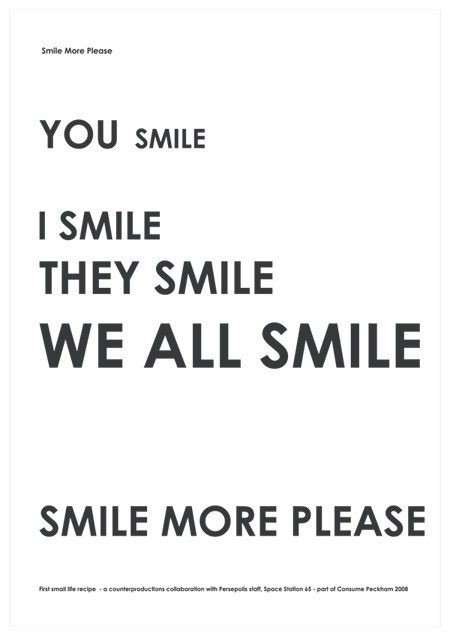
So, now I turn up Peckham High Street hopefully, passed a butcher’s shop still open – carcasses hanging in the garish fluorescent light. A woman in a mask sits in her car waiting for her order. All the other shops seem to be shuttered and its nearly 9pm, but passing under the Station Bridge, Khans Bargains the cornucopia of all shops is still open for business, and its art-deco interior and ceiling gleams with fresh paint. This gem of a shop, stretches back perhaps 40 metres and was scheduled for re-development in the 1990’s but remains a haven of Afghan hospitality. I get talking to the cashier and ask him how’s it’s all been going? He sees I have my camera and insists I take his photo. Obligingly I try my best, so here Savgand is your portrait and thanks to the card you wrote on ‘Khans – The Store of the People’ I have your email address to return.
Just as the street dogs of London, such shops survive against the odds: such are our urban foxes, transplanted from the country, watching and waiting, observing shrewdly, surviving on the city’s profligacy, they hover around us silently, mostly ghostly figures that in Spring burst into our dulled consciousness with howl, cry, yip and scream. How the margins then, become centre stage, with growls and joyful shrieks. Long may Khans and all the small independent shops of Peckham remain open and long life to all our fellow creatures, the foxes of South London, inshallah.
Savgand’s Portrait:
Postscript:
This walk is for you Baptiste and for you Paul – Metropolitan Trails – with all that restless spirit of enquiry, looking forward – wildprojects and the wild coupling Lanaspeze & Lavessière. All of this, no longer wild or quite so marginal… walking antidotes for all life by moving towards our futures together, in shadow step, with other lives.
Reflections on Midnight Walking – Tuesday 31 March; following Wednesday 1 April on Segment 11 & at dusk on Friday 2 April 2020 on Segment 6.
Over the next weeks counterproductions will write and send a walk-a-week to all our friends and colleagues in MTAcademy.

Charlie Fox (all photos © counterproductions 5 April 2020)
Bibliography:
Beaumont, Matthew (2016) Night Walking – A Nocturnal History of London, Verso.
Butcher, Sally (2007) Persia in Peckham: Recipes from Persepolis, Prospect Books.
Elkin, Lauren (2016) Flaneuse – Women Walk the City in Paris, New Yourk, Tokyo, Venice and London, Vintage.
Fox, Charlie (2010) In the Event of Laughter; performing, situating and recuperating laughter’s (after) affects. abbreviated text (counterproductions 2011) from unpublished PhD.
Fox, Charlie (2010) ‘A Culture of Revolt: Misreading laughter’s revenge?’ MISperformance Performance Research, vol. 15, no. 2, June 2010
Haraway, Donna (2016) Staying with the Trouble; Making Kin in the Chthulucene, Duke University Press.
Haraway, Donna (2016) Manifestly Haraway – The Companian Species Manifesto, University of Minnesotta Press.
Lanaspeze, Baptiste (2012) Ville Sauvage – Marseille: Essai d’ecologie urbaine, Actes Sud.
Lavessière, Paul-Hervé (2014) La Revolution de Paris, Wildprojects.
Lives and Writings of the Cynics – http://lucianofsamosata.info/wiki/doku.php?id=cynics:cynic_lives
Urban Fox life & welfare.
https://www.theguardian.com/environment/2010/jun/07/invasion-urban-foxes
[i] I have first-hand experience of this apparent phenomenon – my daughter, Marguerite and her friends were attacked and gored by an animal, while camping outside, in a terrace garden near Loughborough Junction. They had gone to sleep late but sometime after midnight one of her friends re-entered the house, now covered in blood. Still half asleep and possibly in shock it was obvious something strange had happened. The tent they were in, was found to be covered entirely with blood, in the bedding and on the lining, mostly from the child’s head wounds, but also from a deep bite wound on Marguerite’s arm. This punch mark on her wrist, a classic double puncture – fang tooth mark like a vampire bite – was considered too wide for a fox by the A & E doctor who later tended to the wound. But despite this evidence, everyone insisted it must have been a fox attack. Even when Marguerite drew a picture of the animal that had entered their tent – she had woken up, and startled by her it had left the tent – the image had an uncanny likeness to a classic pitbull terrier. That night two doors down a party had been attended by a number of dogs including a pitbull and one had been seen in the back of the garden. At that time I remember reading this article to see if foxes really were likely or capable of such unprovoked aggression – Invasion of the Urban Foxes – “scavenging pest that is now responsible for a shocking attack on two babies asleep in their beds” (Patrick Barkham, Guardian online 7 June 2010). I will always maintain that the perpetrator was undoubtedly a dog – a terrier – having myself been attacked often by dogs of all shapes and sizes, and been tracked by a pack of dogs on two separate occasions I have first-hand knowledge of their menace and aggression.

Week 1: Walking Together and Apart: A letter and a walk for MTA:
We are all in this together. Perhaps we can say this, but only in the sense of sharing our uncertainty and fear. Levels of anxiety and social isolation will surely peak if there is no easy way out of the tunnel. But it appears for now at least that we will all have to find our own ways through this miasma. I reach out for clarity, some stoical philosophy, from European forebears. Epictetus’ thoughts and collected writing in the Discourses start with this simple claim:
“Reason is unique among the faculties assigned to us in being able to evaluate itself…So it’s only appropriate that the gods have given us the best and most efficacious gift: the ability to make good use of impressions” (Epictetus 2008: 5)
The Stoic in us all, will be much in evidence, over the next weeks – but perhaps it is the Cynical approach first outlined by the dog-inspired Diogenes that offers us a clearer pathway to approach both the time and place of this crisis; in listening carefully at the right time, and space, in which to reflect on its real impact, its meaning, what lasting impression it makes. Diogenes, during frantic preparations for a possible war, famously chided the citizens of Athens for wasting their energies in useless preparation, preferring to sit calmly and watch:
‘One day, observing a child drinking out of his hands, he cast away the cup from his wallet with the words, “A child has beaten me in simplicity of living.” He also threw away his bowl when in like manner he saw a child who had broken his plate taking up his lentils with a hollowed out morsel of bread.’ (Diogenes Laertius 2005; 39).
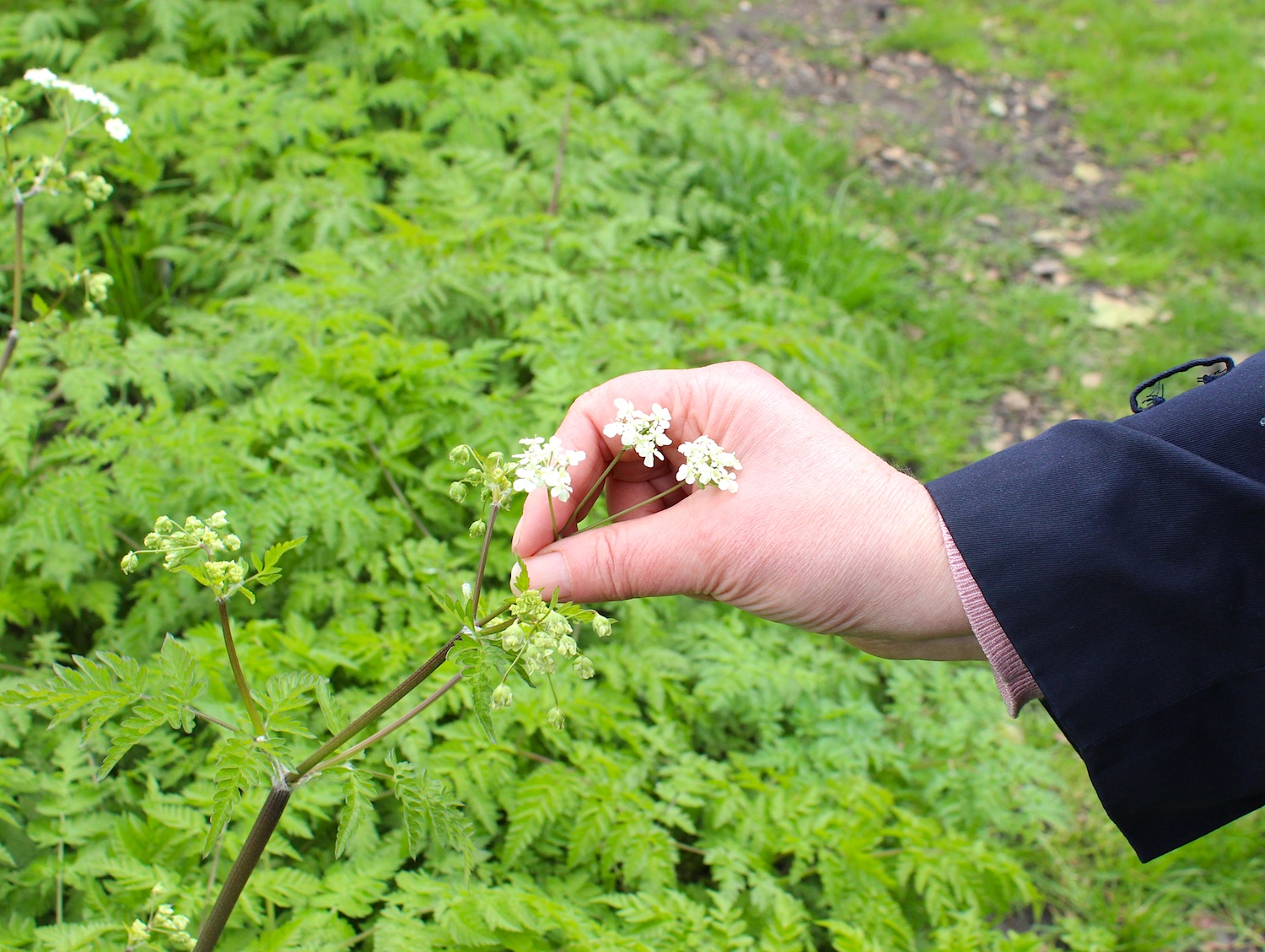
In this time when we confront both our mortal vulnerability, and our own fragile interdependence on other species, it is only right that we take more note of other forms of living, the otherness of nature wrapped up in viral ‘alien’ cells. In each of us, and together, we have the capacity to adapt to what life is, to com-post and co-mingle; in embracing the present in all its minute wonder, but only if we accept this profound vulnerability and dependency (Haraway 2016: 92-117) .
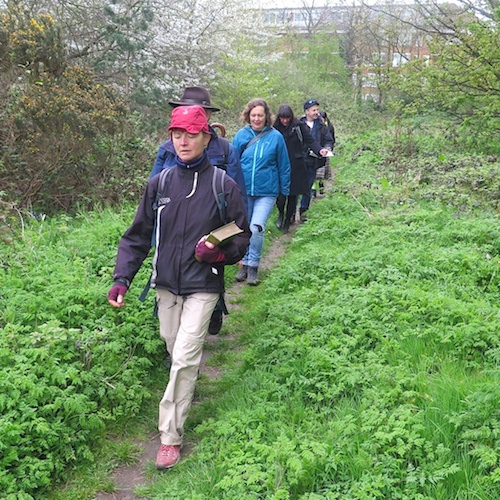
A project built on creating communities locally and across Europe – exemplified by Metropolitan Trail Academy – drawing together groups of walkers, walking artists, geographers, urban planners, ramblers, students, citizens all, motivated by a desire to see and re-discover their cities in all their otherness and diversity remains an extraordinary platform for the exchange of ideas; offering other approaches to new thinking and action, to this world that we were part of, but somehow estranged. By walking together, through our cities and metropolitan zones we could divine the actual temperature and feel of place, not as statistics but empirically, with our feet, noses, ears and eyes. Talking to the people we walked with or those encountered on the way, stopping in shops and wayside cafes, creating impromptu feasts or picnics on meadows and verges, pausing to look together at the unusual, the unexpected, the ordinary transformed by specific knowledges and otherness – local commentary, an enthusiasm shared, a memory shard, an expert guide – focusing our attention together on the hidden, forgotten, the passed over.
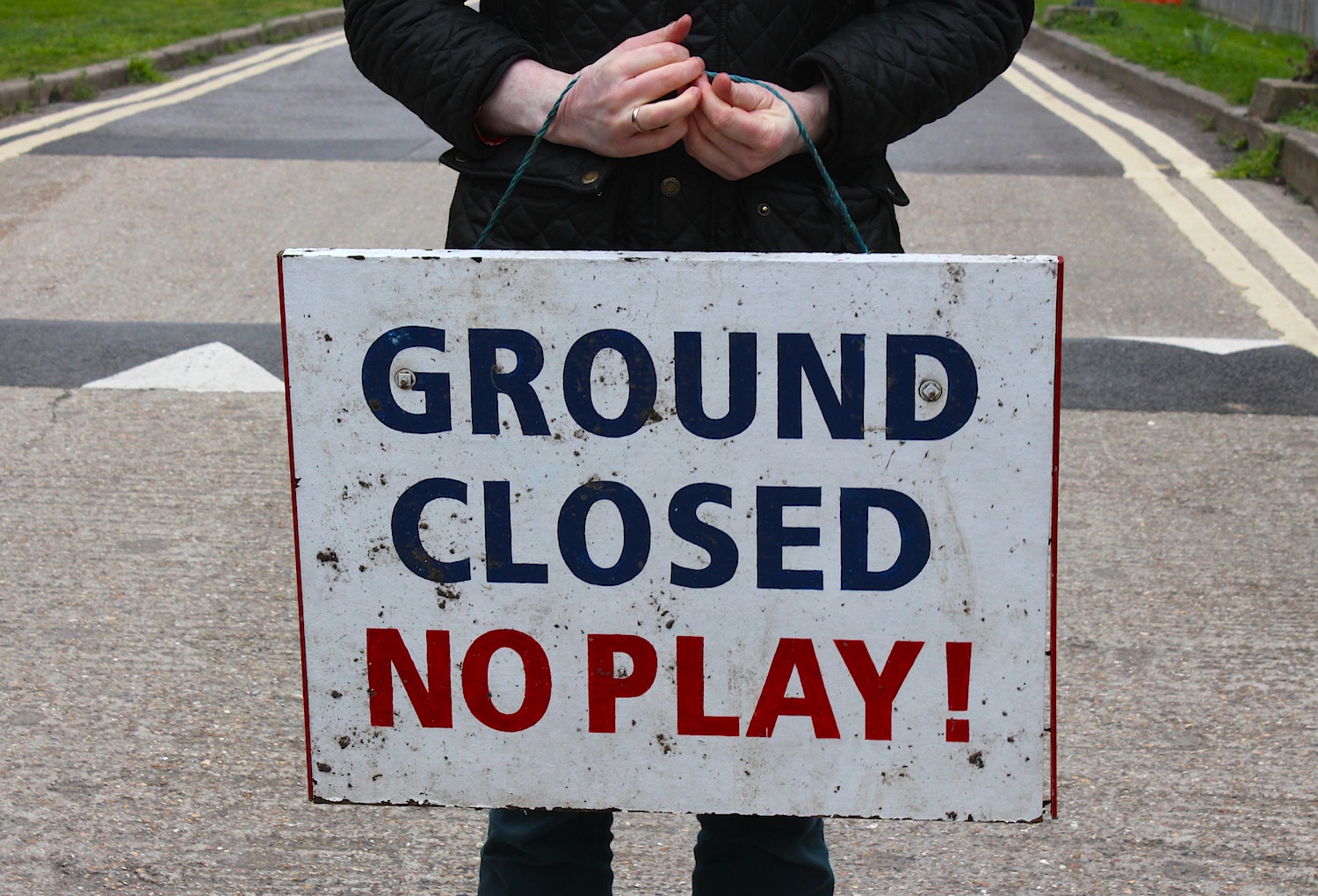
It is only when you cannot do something that you feel the loss of it. No walking together… for how long this injunction, for how long this sojourn of isolation. I dream now of Marseille in May, Paris in Autumn, of Koln in winter, blanketed in snow, of Athens with its sharp spring light in February, ringed by snow-capped mountains. And now how I re-see Milan, powerhouse of Lombardy, cherishing the vast vistas of the expo park as we looked together across the panoramic penthouse, over the city, to the southern plains and north toward the Alps. What a collection of European Cities, each with its own rare beauty, its people, pace and life. Now all quietened and in limbo, struggling with the current storm, in their own ways – resourceful, hopeful, resilient. And now I dream of London by day and by night, the long non-descript streets of suburbia we walked, scrambling over fences and down pathways between fences and walls, or picnicking on the banks of the New River, or wading through Thames mud above bright October skies filled with vapour trails.
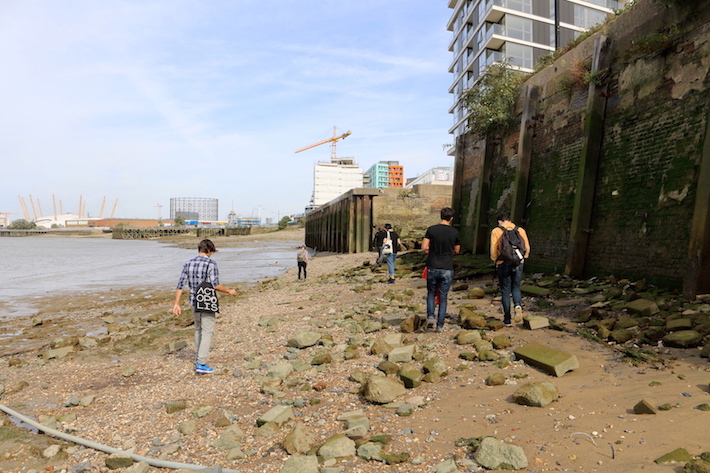
I am going to miss this walking together desperately, over the next months. So, I will practice the art of being together apart. And of being surrounded by the steps of others as I sit at home or when I slip out like a fugitive to tramp the streets at night, searching for urban foxes with a camera and silent footfalls.

Retracing steps – Segment 11 InspiralLondon a ring of cemeteries:
And so, I offer this walk to you all, as a promise to the future, from the recent past and for renewal and transformation for all our futures. It is a walk that I made barely yesterday, in the bright crisp warmth of an early Spring afternoon, 27 March 2020. Mark this date well, for I left my house to walk the 500 steps to Nunhead village. This the first part, is a walk that I made 6 months ago with fifty others – friends and family – it was the last day that my wife’s mortal remains still rested on the earth and we all had met to walk the mile or so over the hill and up to the chapel where we were asked to perform together the brief ceremony of cremation allotted us, here at Honor Oak.

Anne-Catherine had the misfortune to have an unusual bile duct cancer that had spread to her liver and lungs long before any proper diagnosis. For the last two months of her life she had to live on a diet of enriched oxygenated air and food supplements – amazingly stoical she nevertheless had awful bouts of respiratory crisis, interludes in which she felt like she was drowning or being choked. In the last weeks’ it became a horrid way to die, despite the palliative care, the numbing morphine and steroids, but she was fortunate to be in her home, to be surrounded by her family and taken care of by the people she knew and loved, right until the end of her dying breath. We know this is not the fate of those who will die now of this new virus infecting us – it will be a different kind of care that is available – one that Agamben evokes in his exposition into biopolitics; the kind of factory farming that led to the incubation and spread of swine flu, the cannibalism of mad cow disease, the proximities of interspecies mingling mixed with the imperatives of human intervention, all driven by over-exploitation and quick profit.
But that September day we walked together, surrounded by our memories of Anne-Catherine. The warm autumn air that rose from the tarmac would no longer caress her arms or disturb her thick curling hair. In a few hours, she would be transformed into ash.
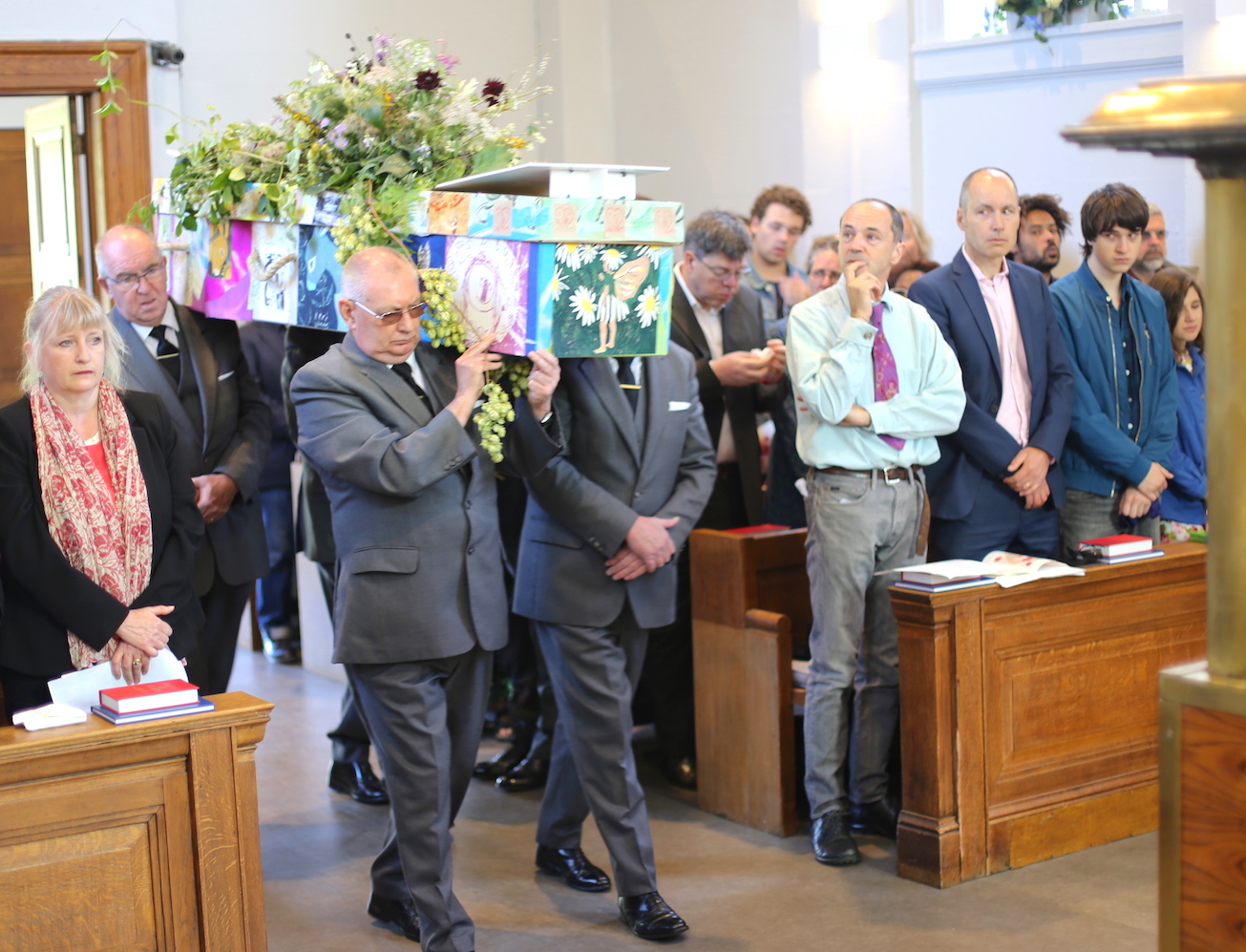
As I retraced this walk, alone now – just as in September I unexpectedly meet someone I knew, Des in his distinct blue boiler-suit, the Car Mechanic who has been fixing my cars for nearly 20 years. He was in the garage forecourt working with two masked men, repairing a gleaming black funeral Hearse – an adapted jaguar – much like the one that carried Anne-Catherine’s body up the hill toward Honor Oak Crematorium just six months before. It was a beautiful day then. An Indian Summer as we like to call it, as if the holidays had returned, and everyone was struck by that air, all the strange unique beauty that was present in the brief ceremony: the playing of the baroque oboe, the songs she chose for us to play, the cardboard coffin decorated with her artwork, the wild flowers, some from Brittany, that draped over and fell from the flimsy lid.

So now I am walking the same pathway, up Brockley passage, between the celebrated Nunhead Cemetery, a haven for wildlife and on the other side, south facing allotments, a paradise for gardeners escaping from la vie moderne. In the distance, the bluish haze of Kent hills, I am temporarily blinded by the low sun. A woman is pottering through a top plot, holding a plant and I catch the sound of chickens gently cluck-clucking. Where are those hens? Coming closer to their calls I begin to detect a note of distress, realising now that they are cooped up in a makeshift hen shed, just on the other side of the iron railings. I can hear them calling but I cannot see them. Their pecking seems faint, almost weary. Have they been fed or have they been abandoned in the panic of the last two weeks? I think then of how many unintended, bizarre consequences flow from this viral shock. The ‘lockdown’ severely interrupting movement, freedoms and the circulation both of productivity but also of vital care and attention. The incontrovertible evidence of the mental health benefits of walking now tested to destruction. All those who walked to and from, helping others, those immobilised in homes because of illness or lack of opportunity, now all made anxious, uncertain of how to live. And those trapped in abusive situations, imprisoned in flats and rooms, seemingly with no way out. Or the neglected, without any support structure, the homeless, refugees, asylum seekers – where will they go now?

I am back out of this passageway, out onto the pavement and passing again the sights and sounds of these terraces I am struck by the activity on the streets, in contrast with the silent Primary School – no lessons and no lunch, no art therapy for those young children who really need it – but time now, to get out and exercise. The normally deserted streets are spotted with joggers and others taking a quick stroll. We are all acting estranged now as we try and keep a good approximated distance, between ourselves.

At the entry of the Crematorium I stop to look at the notices. We are now standing together on segment 11 of InspiralLondon. A pathway ruled by two parallel iron railing snakes its way through the graveyard. I go straight in, passing the empty car park, a small detour to the Crematorium chapel. Everything is closed. A sign stands on the tarmac – ‘Only Funeral Directors beyond this point’. I have been here once before, since that day last September. On a cold February afternoon, I came up here to film the trees emerging from winter – wild plum blossom, the bare swaying Lombardy Poplars, buds of hawthorn. The ground now is quite dry, even after the unprecedented February rainfall. I stop for a brief minute in the Garden of Contemplation, surrounded by floral tributes. For some reason, unknown to me now, I find the most poignant flowers laid out there – reading “Son” then “Brother”. The majority spell out simply in pairs “Grandad/Dad”, “GrandMa/Mum”, there are no flowers to spell out Mum/Mother/Sister.

As I slip out by the main gate onto Brenchley Gardens Road I pass a neat line of freshly filled graves. Inspiral tracks the Green Chain Walk route here – over into the wooded gardens underneath the slope of One Tree Hill. The views here, north across the city are panoramic. The flat pelt of green immediately below is home to one of the strangest golf courses in London – the Aquarius – laid out on the flat surface of the covered reservoir. Someone has made a tree house shelter here, below one tree hill, and I pass a childrens’ encampment made of windfall wood. A fragile lean-to, now disintegrating from neglect. The sun glints off the west face of the Shard. I am arrested by a dead pigeon, perfectly placed on the pathway; pausing to take a photograph, above us the sound of squawking perroquets.
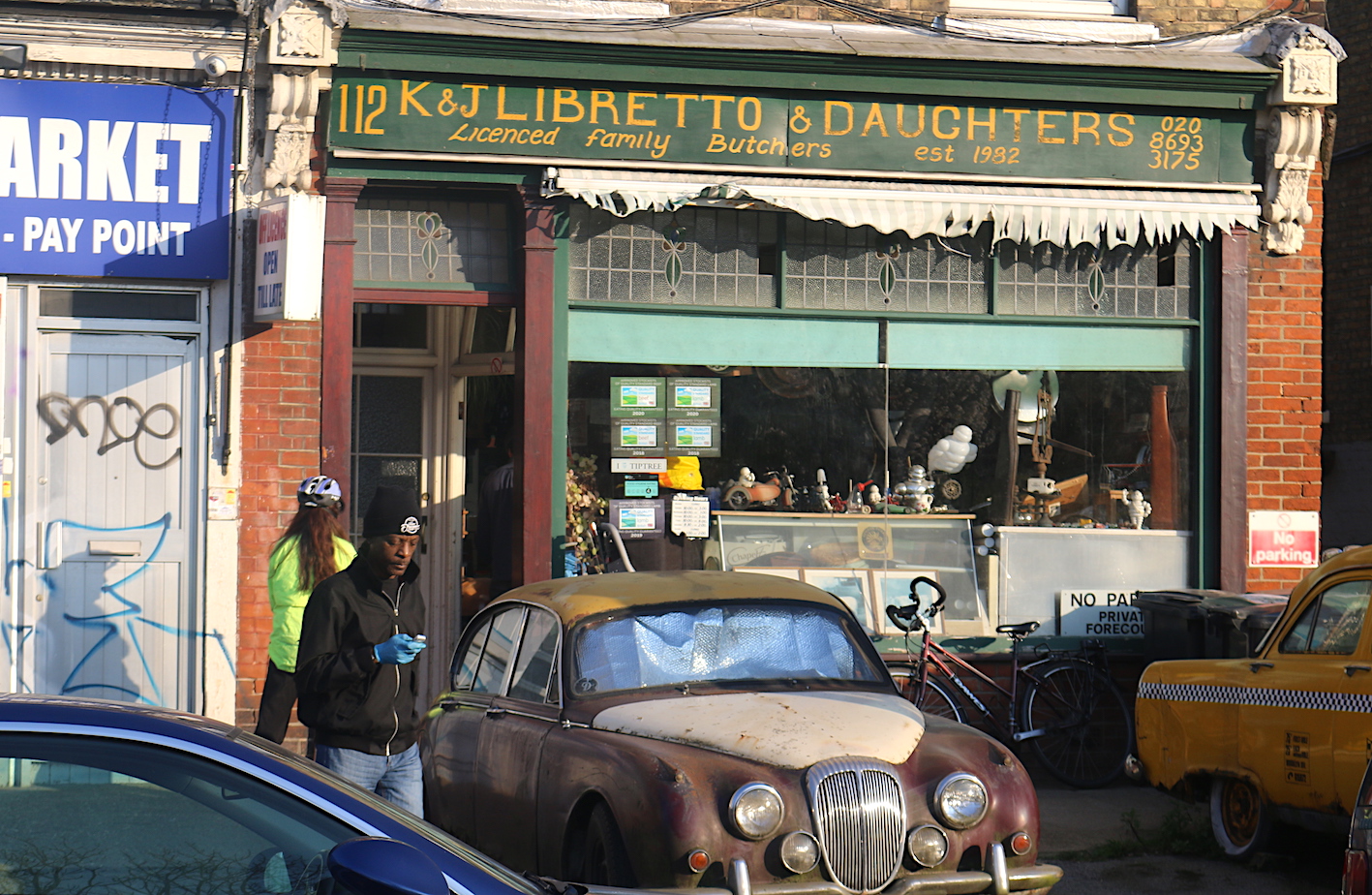
Again, I am walking passed the southern edge of yet another burial ground – Old Camberwell Cemetery – along Wood Vale. Here a few solitary souls wander in the cemetery – but I’m not sure how they got in as it seems the gates have been padlocked. I’ve decided now, my destination on Inspiral pathway today, is to reach to Dawson Hill then loop back down onto Donkey Alley. On Langton Rise I find a slightly different pathway than the one we mapped previously – Overhill Passage – a perfect cut, through the Victorian streets up to where Dawson Heights perches in all its magnificence.
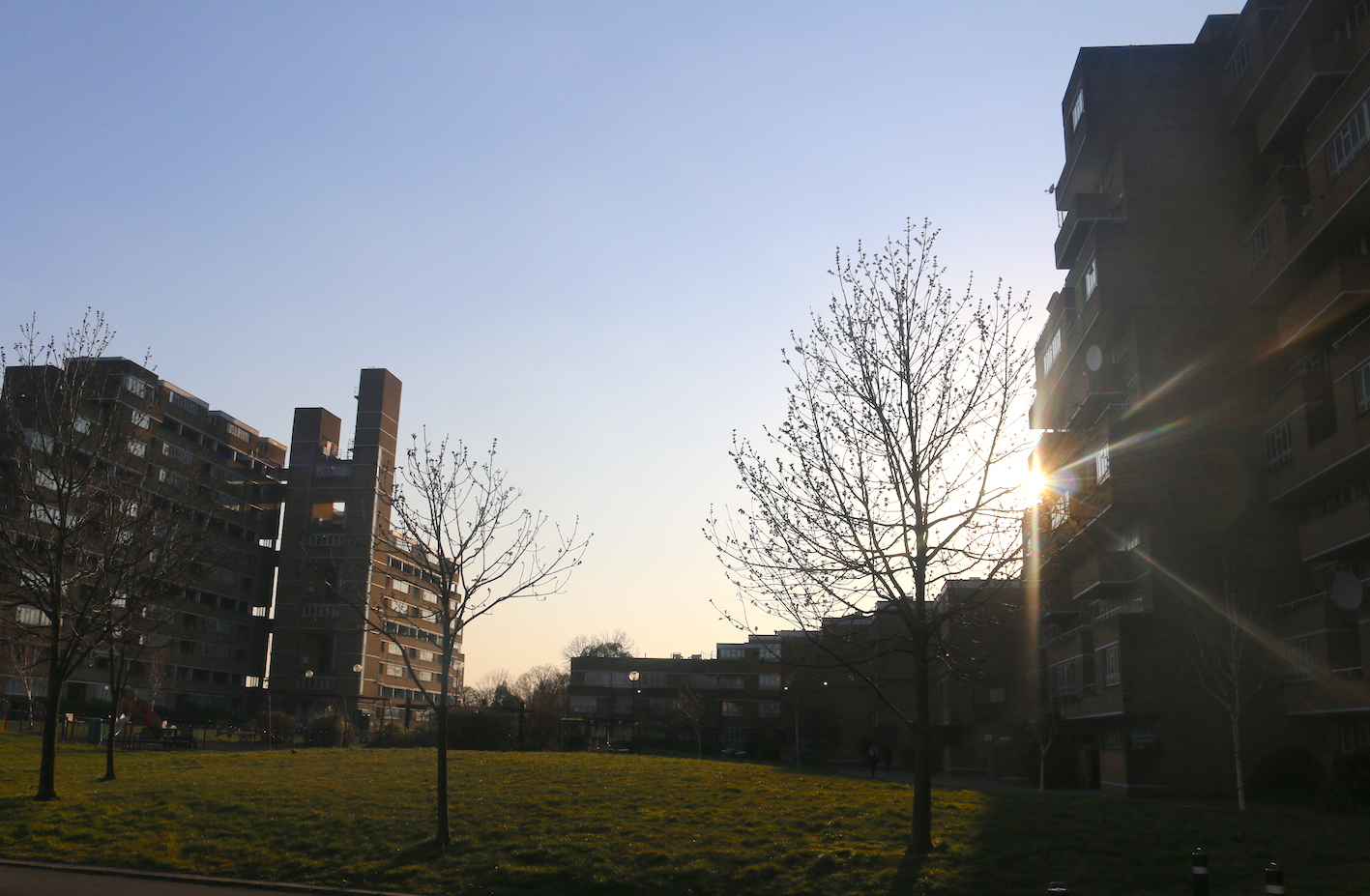
The vision of the 26 year-old architect Kate Macintosh, this 1960’s estate has been compared to an Italian Hill-top town. Entering the main courtyard, the windswept space is deserted but for the chalked signs of children’s play. For a moment, I am disorientated. This is one of my favourite places on InspiralLondon Trail, but I have to leave the estate grounds to find the slim concealed passage that runs between the boundary fence of the estate and the Victorian house abutting the fence. Its brick wall makes the way passable to only one person, at any one time.
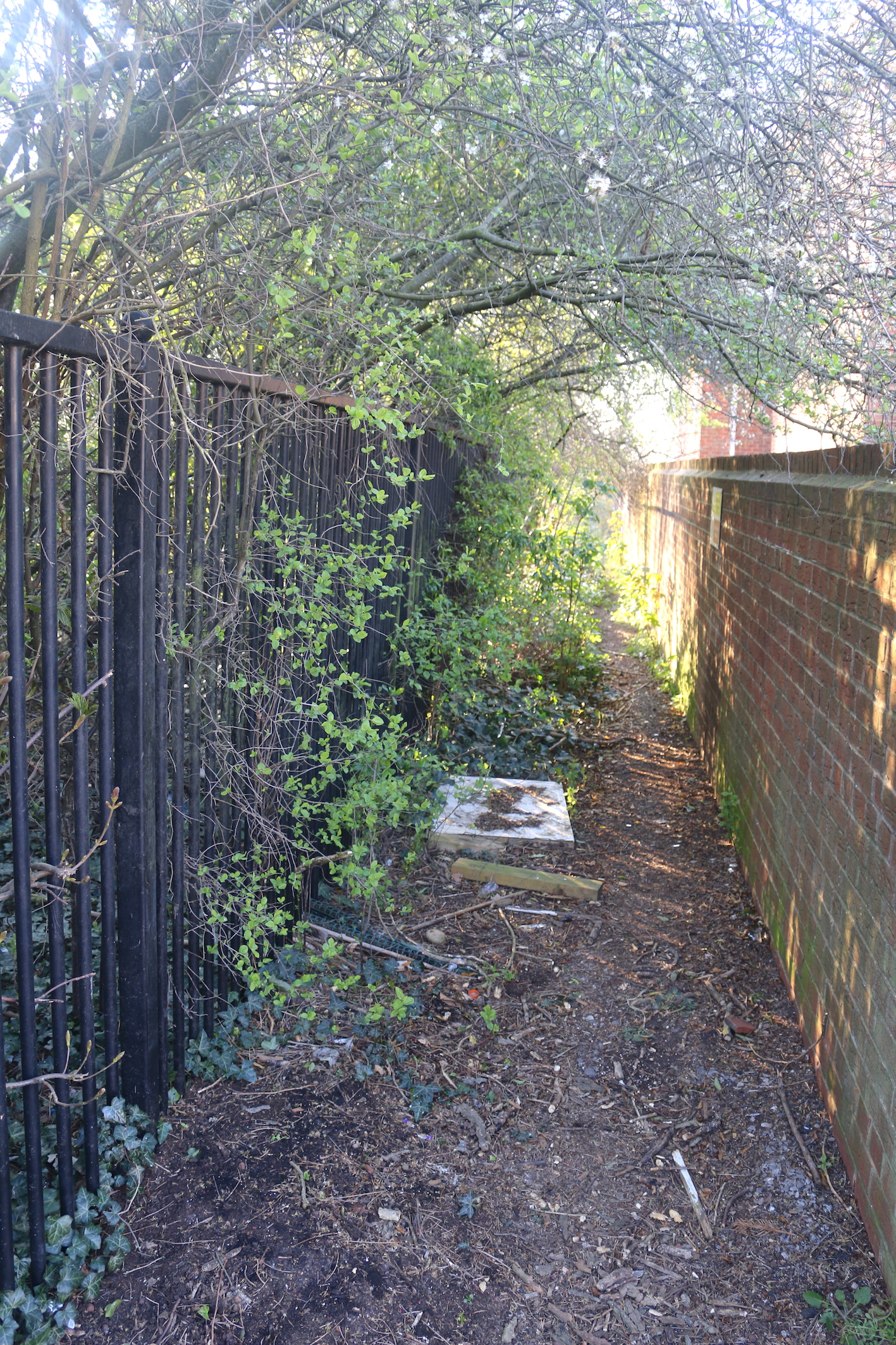
This almost secret way into Dawson Hills Nature reserve is already becoming overgrown. You can feel the pull of brambles and ground elder at your feet. A tangle of trees and undergrowth will surely engulf this path in a few weeks, but it’s steep descent into the wooded slope is one wonderful example of the concealed passageway that has become, for me, one of the particularly pleasurable features of a Metropolitan Trail. Finding your way through seemingly blocked facades or streets, into spaces that are hidden from view, yet intrinsic to the overall ecology and health of the city. On the open face of the hill the view from the heights is legendary – this really is a magnificent view of London in the late afternoon sun, and yet I am thinking of the last time I came here. Someone I know, told me his brother jumped from the top of the main Ziggurat block and now we are all forced to stay inside, cooped up, I wonder at that death toil; that unseen suffering, this might be just another unintended consequence of the current draconian measures against viral infection.

While working in Marseille during MP2013 (European Capital of Culture 2013) I had looked in some detail at the work and life of Antonin Artaud (from a walk-a-week no 14 January 8, 2012) and was shocked to think of the patients at Rodez Asylum – left starving during the War – the abandoning of those one feels are no longer worth taking care of is not a dilemma many of us in the West have had to confront in recent times but it has always been there, concealed beneath the machinery of life. Artaud’s singular contribution to Twentieth Century Art was extra-ordinary – born out of inexplicable suffering – his life/work became a response taken up by other visionaries such as Fernand Deligny; in trying and imagining within the real, a totally different life and way of seeing.
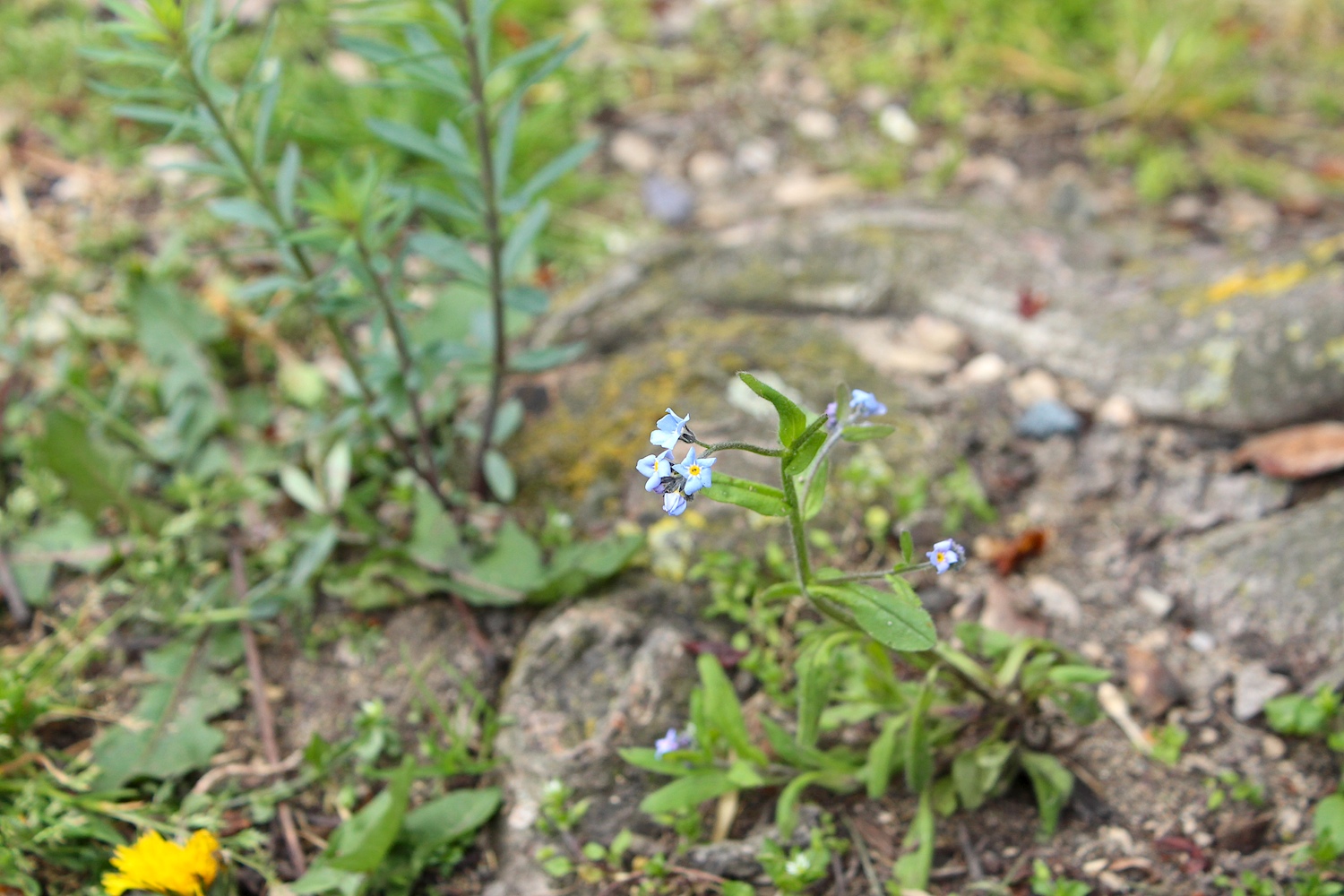
In this time and space where we all face this paradox – the speeded up slow-motion of the world we knew – seemingly crashing round us, there is the urgent need for reflective action. Perhaps the main shock is having to come face to face with our own mortality, that inevitability which we have kept at bay with more pills and plans and endless palimpsests; Care Homes for the elderly, hidden social carers, the loneliness of death for many is suddenly laid bare. But we can all have our own discourse on this unfolding spectacle, even if we too become plunged into the events through unexpected tragedy. Just as Epictetus the Stoic and the Cynics taught us, we can be together, and apart, finding other ways to see and be and act, all against the delusion of uninvolved innocence. Walking still, and finding freedom through imaginal spaces and in a time of memory places… slow time… slow thought… step by step, listening carefully to our world in all its fleeting unexpected webs, its unintended overlapping beauty.
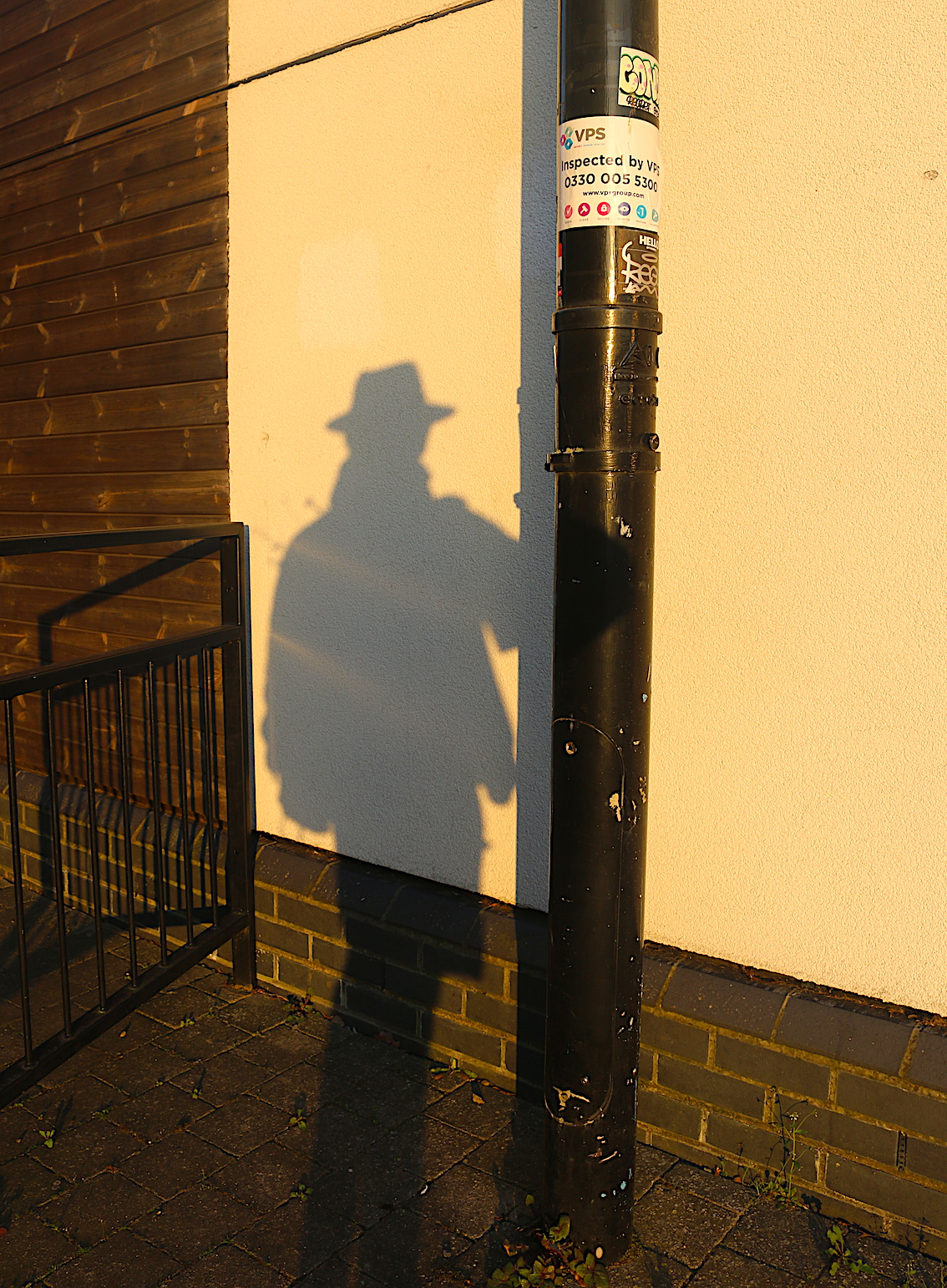
Postscript:
I make a swift return diagonally crossing Peckham Rye Common to stand on the boggy source of the River Peck. Finally slipping silently down Solomon’s Passage – the wisdom of patience, I think again of the pecking hen’s cooped up, waiting for someone to come and feed them.
Charlie Fox March 28, 2020. (all images counterproductions 2020 – unless stated)
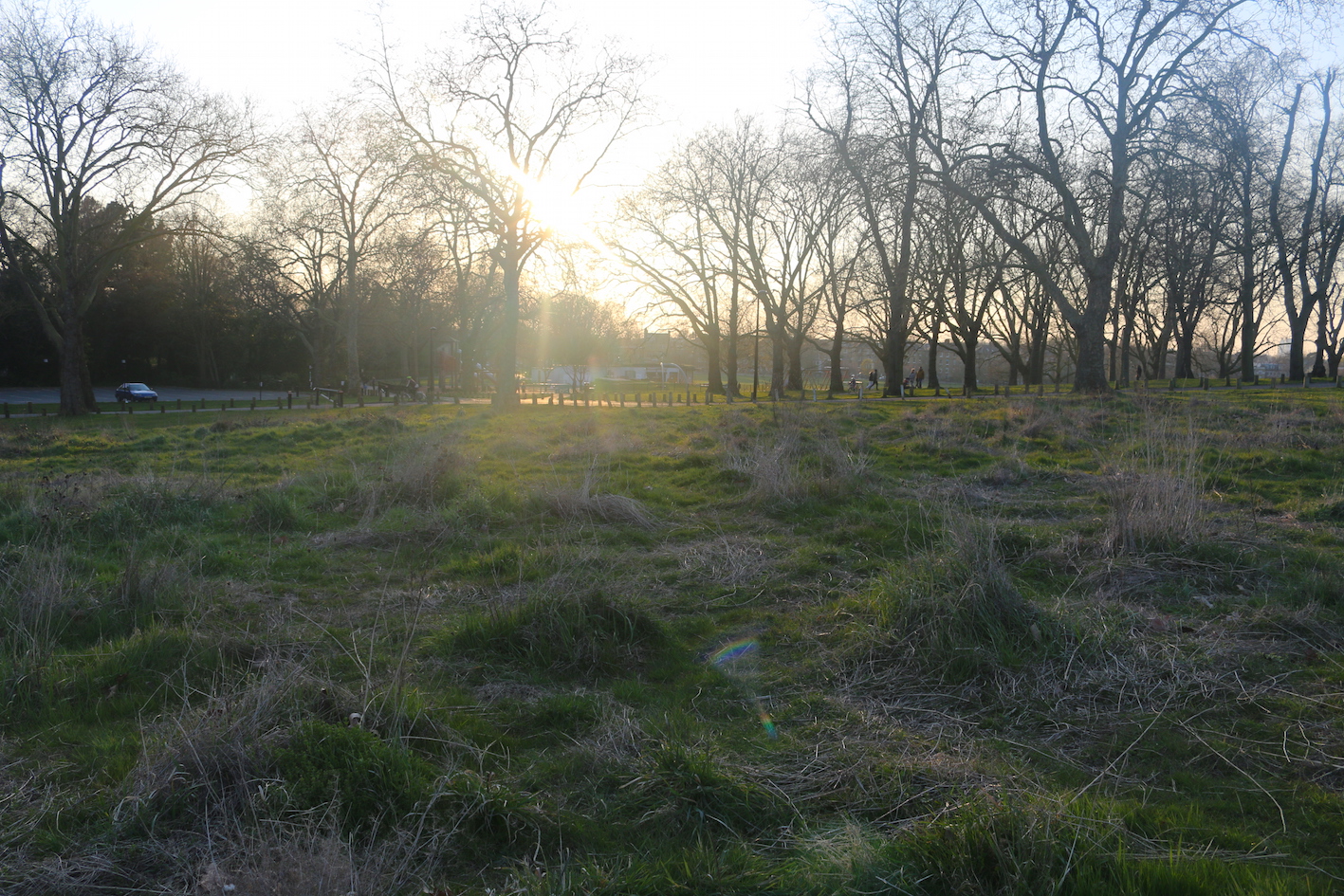
References:
Artaud, Antonin (2004) A. Artaud Oeuvres, ed. E. Grossman, Editions Gallimard.
Deligny, Fernand (2017) Fernand Deligny Oeuvres, ed. Sandra Alvarez de Toledo, L’Arachneen Press.
Diogenes, Laertius (2005) Lives of Eminent Philosophers Book 6-10, trans by R.D. Hicks, Loeb Classical Library.
Epictetus (2008) Discourses and Selected Writings, trans. by R. Dobbin, Penguin Classics.
Fox, Charlie (2012) A walk-a-week ‘Foothills of Pain and Plague – A Theatrical Walk along the Sentier Historique du Mur de la Peste’ January 8, 2012 online @ Barbarism from within https://barbarismfromwithin.wordpress.com/walkaweek/walkaweek-jan/
Haraway, Donna (2016) Manifestly Haraway – The Companian Species Manifesto, University of Minnesotta Press.
Below screengrab of ‘cemetery’ section of Segment 11 InspiralLondon Trail (2015)
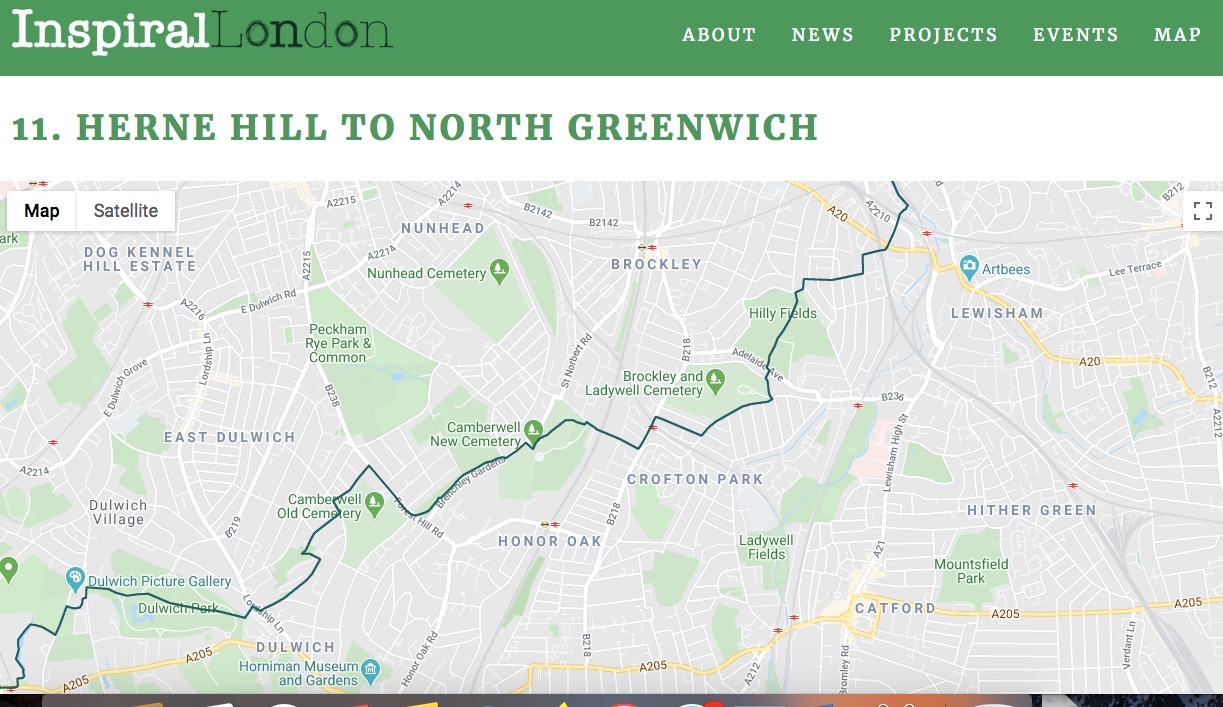
Week 2. Walking with the Other: Like Shadows and Ghosts, the Urban Foxes’ of South London
“…sleeping on the roadside with their human brethren, these streets dogs are more laid back and yet more wary than any out of town dog. Sharing the streets with a constant flow of strangers and with a population of street people, is more intense, more demanding but with certain opportune recompenses. And those ears, pricking, flexed, muscled, limp, constantly twitching with anticipation and with all their individual micro expression. Each Dog, welcoming, with their own way of cocking their head and saying hello.” (Street News from Kolkata)
It’s getting used to the silence, or what we take for it, in a city like London, a sudden lack of traffic, silence in the skies, no pubs, restaurants, places of meeting open late at night, just the occasional roar, and that blast of searchlamps from the empty night buses chasing shadows across the sleeping streets. I have left my front door, just like this, many times before, to step out into the evening and take in the stilled air. The city is a different place now, surrounded and teeming with an otherness that will not be tamed. But tonight, it is colder again, like winter has returned and I sense that the foxes I have been following over the past nights, would be less active. No takeaway bags and leftovers at the Two Sisters Indian, the shy individual I spied there has evaporated into the orange sodium mist.
They, and the other nocturnal fauna living alongside us, are the others I walk with now at night and I will make my way with them and around them, as I climb alone over Nunhead Hill and drop down toward Brockley Station. Carrying a camera to capture something of this hidden activity; I walk steadily, becoming comfortable to hearing only ones’ footfall, the sound of your breathing – air chilled – circulates in your chest. Footpads, cat burglars, stalkers, hunters of the night will catch their breath like this, but I am on the lookout for the solitary, on the prowl, fox or vixen, the occasional couple.
The streets marvellously quiet have taken on a hyper real quality as if you are walking through a vast film lot suddenly abandoned by the cast and crew. It’s not true though, this sur-real. The spectacle was only ever temporary. For now, we are entering the realm of padded feet with softened concealed claws, eye to eye, what does this vixen see? Her ears and nose alerted to the onlooker, she wears a nonchalant but wary gaze. These Vulpes are not street dogs used to interacting and serving their masters but animals surviving on their terms, across all manner of terrain. They are wild, that is, other. We will not be patting them or feeding them biscuits from the hand. These scavengers, omnivorous savage skippers have become the ‘dumpster diving’ masters of inner and outer London. They have no regard to law or custom, to the niceties of recycling and trash disposal. They hold to another regime – more Skipping, practising their creative use of human detritus. Every morning you can see the evidence of their crafted uses of our squandering – ripped bin bags, their innards sprayed across the streets – are the forensic bone and carcass of consumerism. They regurgitate the city’s waste in a night time of archaeological dismembering. In the lockdown city, humans trapped inside, will there be less discarded food waste for them to gorge on?
 M2 Gallery – Still showing work to passing creatures. “Giving Back to the Streets”
M2 Gallery – Still showing work to passing creatures. “Giving Back to the Streets”
When working in Marseille I was surprised to see so many people going through the bins, sometimes with trolleys, carts and filled bags, collecting and sifting a life out of others waste. Common in other parts of the world but in the wealthy heart of Europe? In France, the laws established by the Revolution allow for the right of gleaning – active use of excess produce – even in open fields and on private property collecting food that would otherwise rot is seen as a legal right, but in the Anglo-Saxon culture such frugality is usually treated as property theft. In step with the nocturnal fox we can see the world turned sideways, the world of the homeless, squeezed between buildings, in the hidden passageways, in between, tunnelled into and camped out in overlooked corridors. Somehow, they make their way alongside the ever-turning indifferent city. Of course, this gleaning is going on here but it’s not something you witness so brazenly – it is definitely not encouraged – but like the ‘sly’ fox waiting for night to contribute to the city’s eco-system, skippers play their unique role in exposing the other daylight robbery of inequity, inequality and waste. Normally, foxes only really appear around dusk, slipping through their territories with a nonchalant ease, in search of daily food to be eaten or cached. So near to the vernal equinox they have as much time by night to enjoy, as day to relax and sleep. In the summer, it becomes more frantic, they can be found prowling around in daylight looking for a free meal, competing with seagulls, pigeons and rats.

This restless research – night into day – going out into the darkened streets to escape into wholly other world, as if I am in a dreamscape, the unconscious ripped through the surface of the everyday. I wander, with light companionable steps, following these night prowlers, drawn into their trails, down and out of back alleys, round corners, into estates I did not know with all their intricate hidden desire lines laid out across the common parts. Like the Street Dogs in India we are in the presence of animals living on the margins of human civilisation, adapted, comfortable; able to create effective temporary structures in which to survive and thrive – half in or on and half out of our self-centred anthropocentric world. And how we are taken out of selves when we see them, stopping to observe; that way of being arrested by the stranger, face to face we feel something, some thread and kinship. Half animal/half companion and nevertheless we are only ever able to glimpse this other consciousness in a reverie of acute observation.
Following, street dogs in North India I was privileged to see how:
“…the Dogs evolved but without the regime of strict domestication, closer to Coyote and Wild Dog cousins, these village street dogs that litter North India have their own way of living in the complex hierarchy of modern Indian Society. They are the true heirs of the Cynics, eating, sleeping and copulating as and when they see fit, adapting easily to the situations they find themselves in.” (The Cynics of Rajasthan, 2018)

The fog of human life – the typhos the Cynics fought against, in all its unnecessary artificiality – lifts, and in night calm you begin to see the city in another light. Lucid, with a spring in the step, you can practice eudaimonia and sharpen your mind with revitalised lucidity (atyfia). Light is a factor at night in so many ways. From entering streets and passing one Borough or housing estate into another, the quality of lighting alters dramatically. It is partly the eye and partially the way the camera processes the intensity and colour saturations. As I enter Hilly Fields the light drops dramatically and you enter a night scape without street lighting. From East to West and North to South, swivelling, you can see stripes and layers of illumination. In the near foreground, on the edge of the common, terraces lit up with lamps, then a grey darkness; again, in the far distance, silhouetted on the horizon a string of red lights, the tops of skyscrapers and the cranes used to construct them pinpointed by warning lights.

Light pollution is still prevalent in lockdown and I wonder how it might be to be here with all the lighting turned down or even switched off. Just as the skies are almost completely free of the noise pollution of air jets, why not free the night sky from its pall of pale luminescence. On a moonlit night, the human eye becomes accustomed to seeing and sensing just as the fox. Unfortunately, we do not have the same acute night vision as the cat-like fox.

On Hilly Fields the inspiral trail falls toward Lewisham, to the gentle cut made by the Ravensbourne River. As I cross the fields, pass the café shed, I see a single fox gliding across the grass. Too dark to film but I stay stock still, watching. It stops, it must have my scent, turning its head quickly, freezing. He/she has seen me and darts quickly away in to the scrubby copse. Foxes can run at over 45 miles per hour, springing and jumping, as agile as any feline. But unlike the cat they are monogamous, and here, just behind, cantering across the turf comes his/her partner. Working together, they look out for each other, backing up and calibrating danger, dissolving into the darkness, they can disappear in an instant:
“an adult fox can get through a hole 10 cm square, and scale a 2 metre high wall or fence with comparative ease.” (Birmingham & Black Country Wildlife Trust)
In the urban forest, it is less other predators or lack of food, but disease, unexpected encounters with traffic or dogs that cause most grievous injury or even mortality. The myths and prejudice against the urban fox as a threat: hunting in packs, attacking people and killing indiscriminately, has a long tradition – the cunning fox as scapegoat[i]. It was headline news in London – on a hot June night in 2010 a fox had apparently attacked two children in a house by Victoria Park. This article – Invasion of Urban Foxes – written for the Guardian gives a fair idea of the panic and hysteria attending such rare encounters. Foxes though curious and cheeky are not ordinarily aggressive in this way, only defending themselves if cornered, whereas dogs bred for their aggressive fighting behaviour can turn on anyone or anything without warning. There is something of the human in domesticated dog behaviour that a wild ‘dog’ like the vulpes vulpes, shy, cautious, opportunists never display. Nevertheless, or precisely because of their ‘nature’ they remain convenient scapegoats for our more destructive aggressions.

Here near Elverson Road I turn back toward home. I am returning along the side roads towards Brockley Cross. Who else is out at the is hour. I have seen no rats or other rodents, the occasional cat, straying onto the emptied streets. It’s only then that I disturb an old fox lurking under a car perhaps with some prize morsel – the fox’s eyes fixed on me with a wizened look; two foxes together, one territory. We back away from each other, slowly, slipping away from each other. This practice of walking with strangers or walking in order to encounter strangers has very little to do with urban flaneurie, a particular night walking, in the pleasure of encountering the nocturnal city bustle, illuminated by glistening artificial light. No, it is a kind of shadow walking, on the edge of human vision, outside the curfew:
“The city at night in the seventeenth and eighteenth centuries became flamboyant. In Europe’s main thoroughfares, the demise of the curfew was dramatically confirmed. During a visit to London in 1786,…, the German novelist Sophie von La Roche – positively marvelled at the sight of the ‘eternal stream of coaches; and the mass of people processing along Oxford Street at 11 pm.” (Beaumont, Matthew 2016: 119)
In the easy fog of night – one now most make the best of a curfew – out of this miasma the question becomes how much one should collaborate or openly resist current strictures, or to balance one’s response somewhere in the in-between. In Donna Haraway’s philosophy of animal companionship the need for mutual interaction is counter-balanced with the desire to overcome the strangeness of our relationships with animal otherness through acts of enthusiasm and over-exuberant coupling, but without anthropocentrism – echoing with deep ecology or deep listening. When we enter this web, there is nothing that is not possible, nothing too outlandish or preposterous. From the melancholic vista of anthropocentric extinctions comes a vision of cross-species fertilisations and parasitic graftings. (John Russell – SQRRL text & film). How then to take account of this radical thinking in the real? Intervention and perambulatory discourse? How to make our steps light enough to make some real difference, and yet to leave no unnecessary mark or impress.
 Film Still: of Fox skipping at building site ‘General Waste’.
Film Still: of Fox skipping at building site ‘General Waste’.
I have noticed a particular dancing move that all the foxes seem to make in our encounters – as they stare at you, fixed in wary concentration, they suddenly turn their bodies 180 degrees; then pausing backs turned for an instant, swivel their heads 180 degrees with eyes fixed directly back toward me. Then they retreat, and sometimes do this manoeuvre again and again, until they slip away out of sight. This must be some signal they use to say – backing off peacefully on my terms – and it is a lovely technique, of feinting to go and then checking back on what you are doing. It’s very like the movements of a human attempting to steal up on someone, or another animal, that rapid movement then stillness – like children playing blindman’s bluff. Perhaps something of the daft unfathomable, that we humans share with foxes, as we walk through our cities?
 International Day of the Smile: approaches to laughter (rire), and underlaughter (sourire)
International Day of the Smile: approaches to laughter (rire), and underlaughter (sourire)
On the following night, I return along segment 6, running toward Peckham and skirting Burgess Park where I stop to let a couple pass. Looking up I observe bats, pipistrelles hunting high above the old Baptist Church, now converted into a mosque. A group of men are drinking outside at the football club’s open air changing room. I pass without acknowledging them. As I emerge from the park, I spot a fox sniffing through the car’s parked at the back of the old North Peckham Estate. A taxi driver – in his Addison Lee people carrier, ticking over – sits looking at his mobile, oblivious. The shadow flits and dissolves. Through the new housing around the Damiola Taylor Centre I wander briskly toward the centre of Peckham, a Jamaican Takeaway – Soul Food and Jerk Chicken – is still open. Somewhere at the back there, someone is talking very loudly on their mobile phone, across the darkness an aggressive glowing. I think, soothingly to pass by Persepolis – an I Love Peckham institution – maybe I can buy some millet flour? Thinking how Persian New Year was celebrated – on 20th March – but in what circumstances? The images of masked artists painting giant eggs on the streets of Tehran swim into view. How is Iran coping with this? The news cycle is now shutdown to any objective information, filled only with inane press conferences – offering a cynical diet of half-truths and platitudes. At least the Iranian Health Minister wore a mask when broadcasting to the nation.
Sally Butcher the spirit of Persepolis – Persia in Peckham one of the most enthusiastic and welcoming collaborators on social art work; my favourite and arguably most successful ‘community’ art project – SMILE MORE PLEASE –survives as a poster in the shop window for over ten years. This mantra poster inspired by the commentary in Sally’s first Persian cookbook. The poster is now entirely obscured by the dark green shutters. I attempt to take a picture through the grill – but I am startled as walk on to see Sally and her husband at the shop entrance. They are not apparitions. I say a half-hello of greeting but they seem startled – who is this shadowy figure out at night? Later I look online – the shop has been shut since the 20th March. A trilogy of emotion floods from me: Smile More Please Laugh Now Please, Cry Less Now, thinking of those we have lost on the way: we are nothing without feeling.

So, now I turn up Peckham High Street hopefully, passed a butcher’s shop still open – carcasses hanging in the garish fluorescent light. A woman in a mask sits in her car waiting for her order. All the other shops seem to be shuttered and its nearly 9pm, but passing under the Station Bridge, Khans Bargains the cornucopia of all shops is still open for business, and its art-deco interior and ceiling gleams with fresh paint. This gem of a shop, stretches back perhaps 40 metres and was scheduled for re-development in the 1990’s but remains a haven of Afghan hospitality. I get talking to the cashier and ask him how’s it’s all been going? He sees I have my camera and insists I take his photo. Obligingly I try my best, so here Savgand is your portrait and thanks to the card you wrote on ‘Khans – The Store of the People’ I have your email address to return.
Just as the street dogs of London, such shops survive against the odds: such are our urban foxes, transplanted from the country, watching and waiting, observing shrewdly, surviving on the city’s profligacy, they hover around us silently, mostly ghostly figures that in Spring burst into our dulled consciousness with howl, cry, yip and scream. How the margins then, become centre stage, with growls and joyful shrieks. Long may Khans and all the small independent shops of Peckham remain open and long life to all our fellow creatures, the foxes of South London, inshallah.
Savgand’s Portrait:
Postscript:
This walk is for you Baptiste and for you Paul – Metropolitan Trails – with all that restless spirit of enquiry, looking forward – wildprojects and the wild coupling Lanaspeze & Lavessière. All of this, no longer wild or quite so marginal… walking antidotes for all life by moving towards our futures together, in shadow step, with other lives.
Reflections on Midnight Walking – Tuesday 31 March; following Wednesday 1 April on Segment 11 & at dusk on Friday 2 April 2020 on Segment 6.
Over the next weeks counterproductions will write and send a walk-a-week to all our friends and colleagues in MTAcademy.

Charlie Fox (all photos © counterproductions 5 April 2020)
Bibliography:
Beaumont, Matthew (2016) Night Walking – A Nocturnal History of London, Verso.
Butcher, Sally (2007) Persia in Peckham: Recipes from Persepolis, Prospect Books.
Elkin, Lauren (2016) Flaneuse – Women Walk the City in Paris, New Yourk, Tokyo, Venice and London, Vintage.
Fox, Charlie (2010) In the Event of Laughter; performing, situating and recuperating laughter’s (after) affects. abbreviated text (counterproductions 2011) from unpublished PhD.
Fox, Charlie (2010) ‘A Culture of Revolt: Misreading laughter’s revenge?’ MISperformance Performance Research, vol. 15, no. 2, June 2010
Haraway, Donna (2016) Staying with the Trouble; Making Kin in the Chthulucene, Duke University Press.
Haraway, Donna (2016) Manifestly Haraway – The Companian Species Manifesto, University of Minnesotta Press.
Lanaspeze, Baptiste (2012) Ville Sauvage – Marseille: Essai d’ecologie urbaine, Actes Sud.
Lavessière, Paul-Hervé (2014) La Revolution de Paris, Wildprojects.
Lives and Writings of the Cynics – http://lucianofsamosata.info/wiki/doku.php?id=cynics:cynic_lives
Urban Fox life & welfare.
https://www.theguardian.com/environment/2010/jun/07/invasion-urban-foxes
[i] I have first-hand experience of this apparent phenomenon – my daughter, Marguerite and her friends were attacked and gored by an animal, while camping outside, in a terrace garden near Loughborough Junction. They had gone to sleep late but sometime after midnight one of her friends re-entered the house, now covered in blood. Still half asleep and possibly in shock it was obvious something strange had happened. The tent they were in, was found to be covered entirely with blood, in the bedding and on the lining, mostly from the child’s head wounds, but also from a deep bite wound on Marguerite’s arm. This punch mark on her wrist, a classic double puncture – fang tooth mark like a vampire bite – was considered too wide for a fox by the A & E doctor who later tended to the wound. But despite this evidence, everyone insisted it must have been a fox attack. Even when Marguerite drew a picture of the animal that had entered their tent – she had woken up, and startled by her it had left the tent – the image had an uncanny likeness to a classic pitbull terrier. That night two doors down a party had been attended by a number of dogs including a pitbull and one had been seen in the back of the garden. At that time I remember reading this article to see if foxes really were likely or capable of such unprovoked aggression – Invasion of the Urban Foxes – “scavenging pest that is now responsible for a shocking attack on two babies asleep in their beds” (Patrick Barkham, Guardian online 7 June 2010). I will always maintain that the perpetrator was undoubtedly a dog – a terrier – having myself been attacked often by dogs of all shapes and sizes, and been tracked by a pack of dogs on two separate occasions I have first-hand knowledge of their menace and aggression.

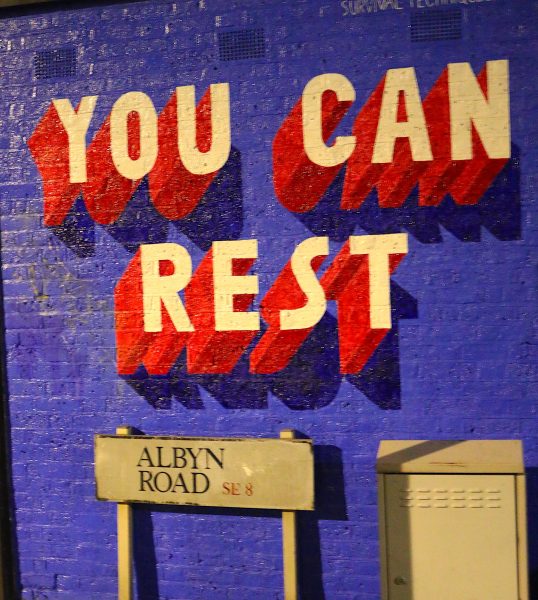
Charlie, thank you sharing for your beautifully observed and deeply personal walk with us all. Brimming with light and inspiration to see us through some difficult times ahead.
Keep reading, keep walking if you can. Enjoy